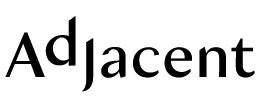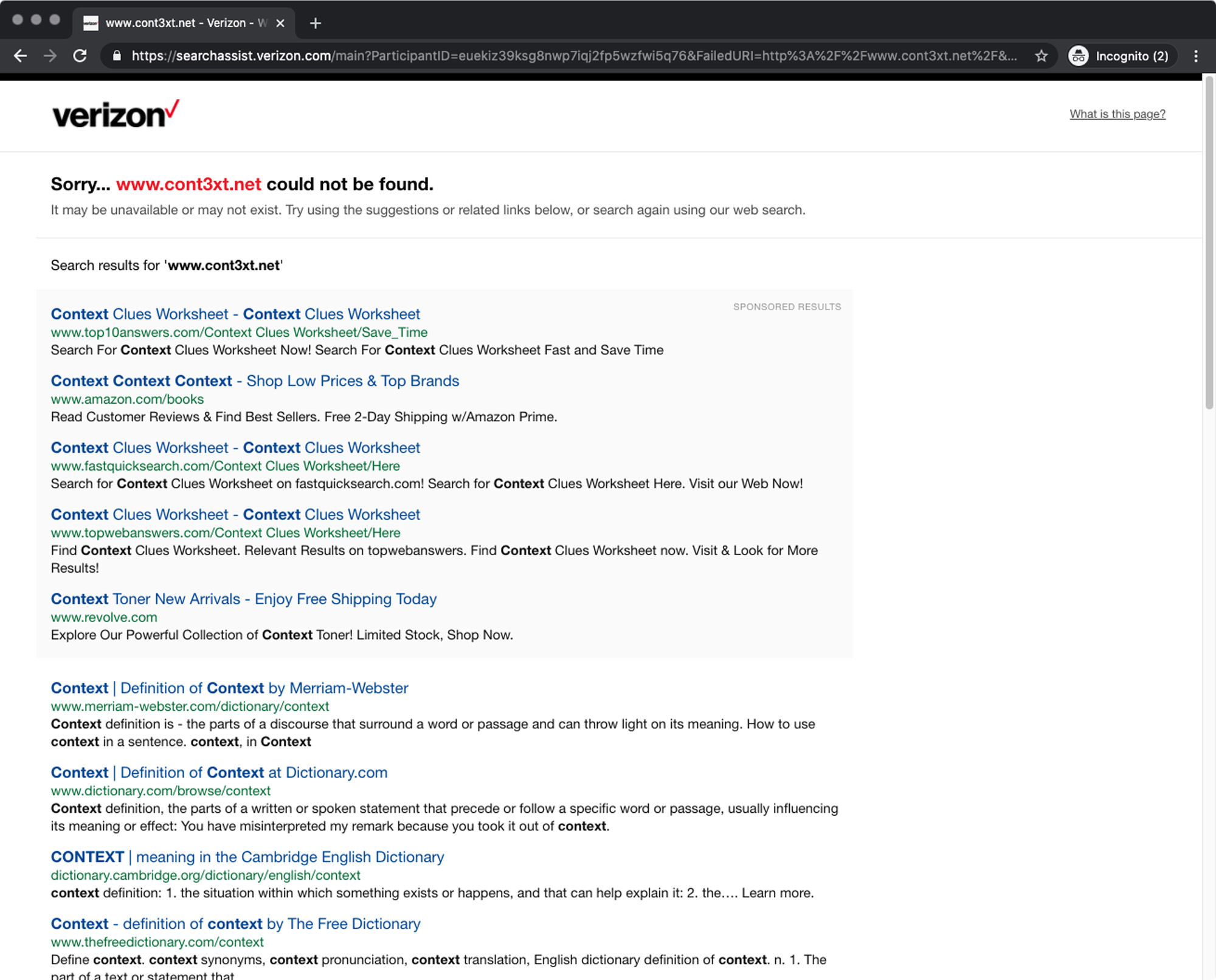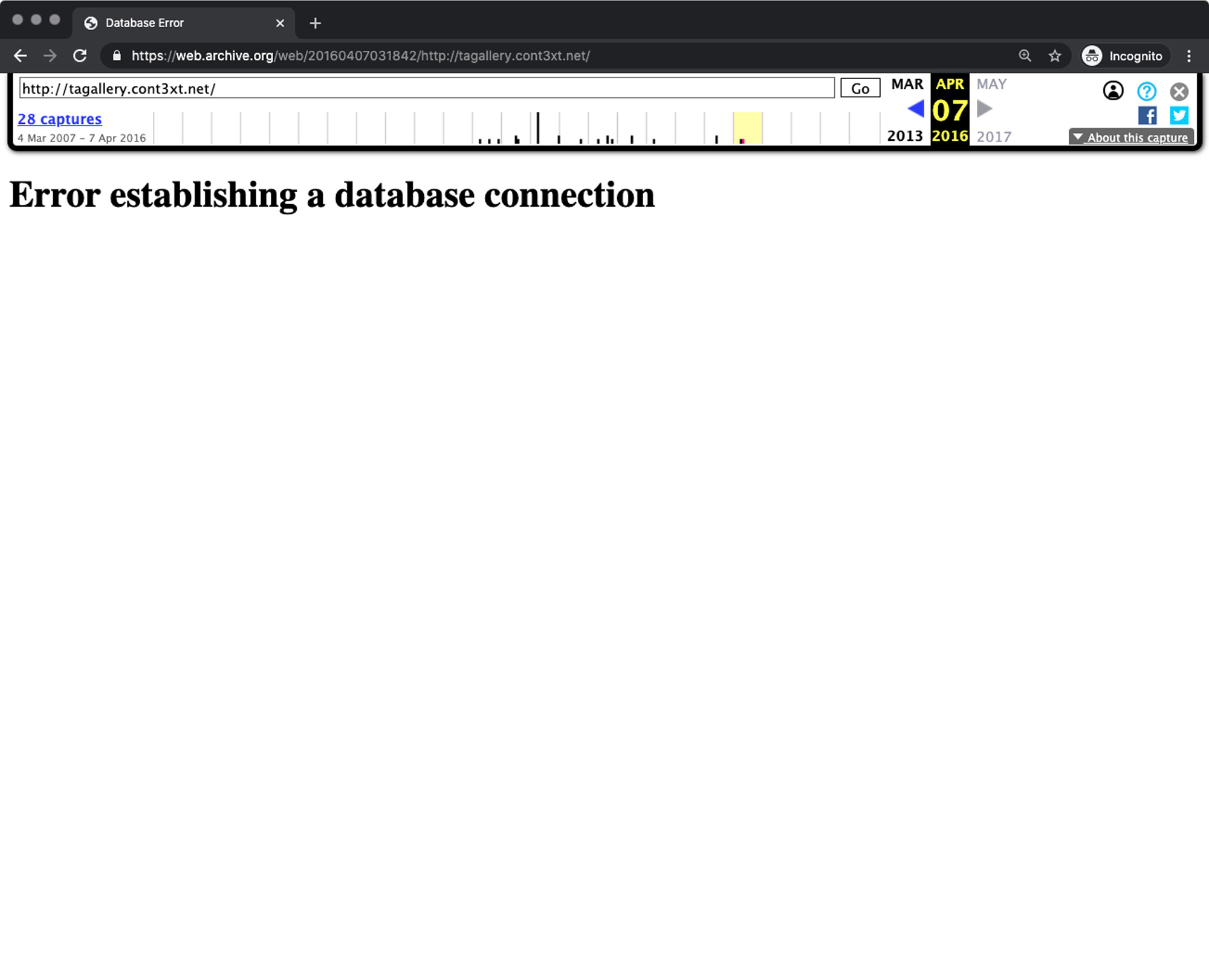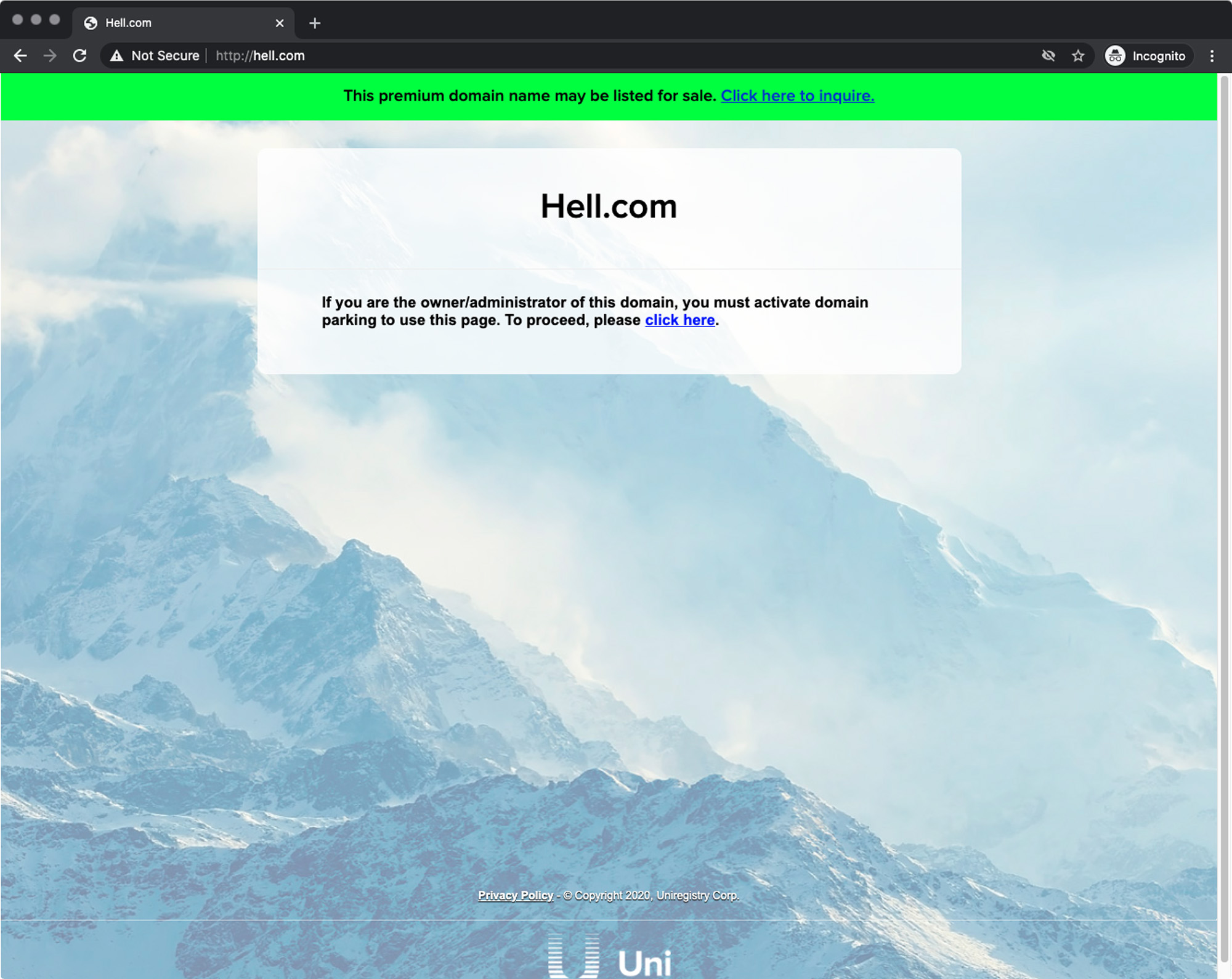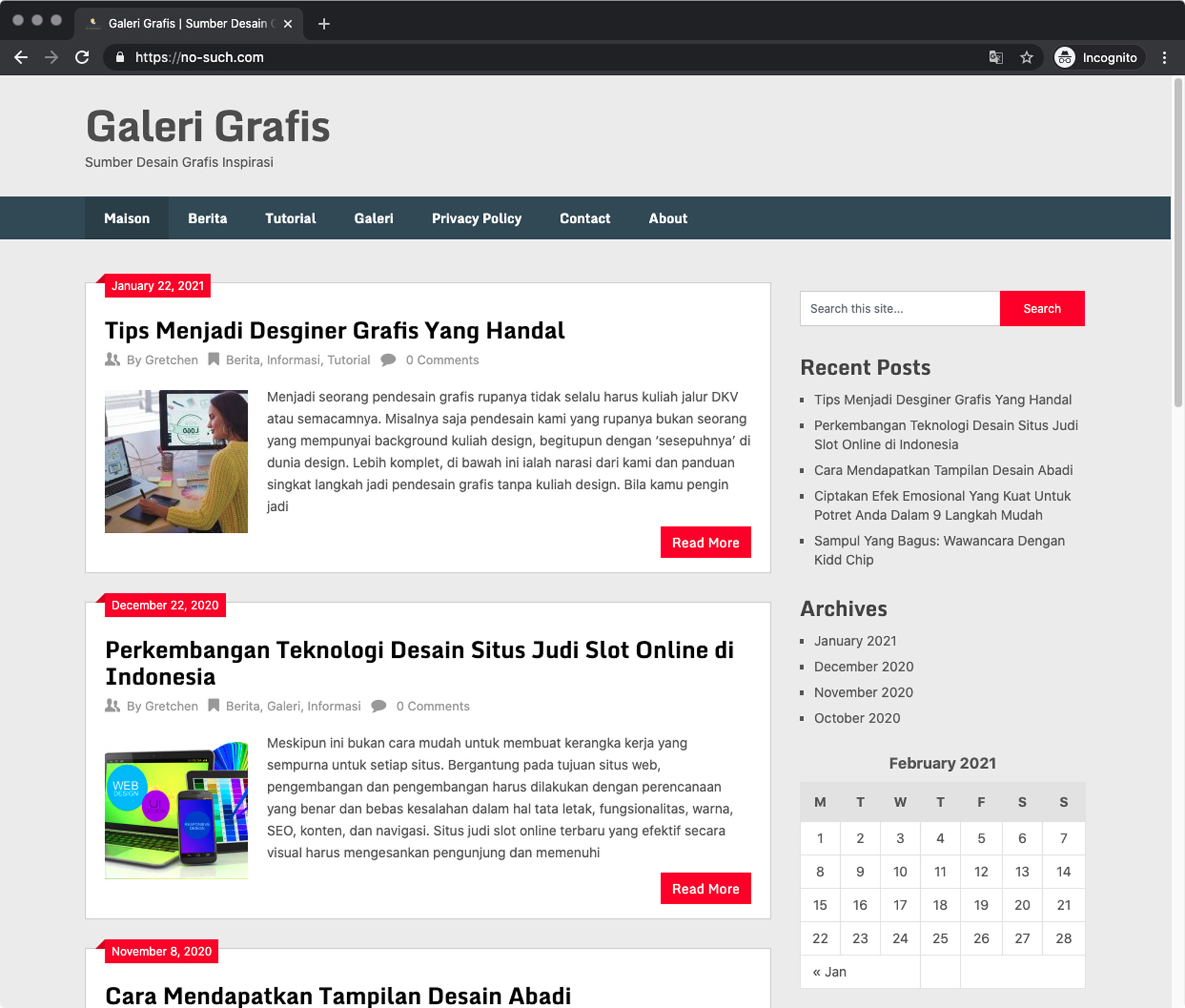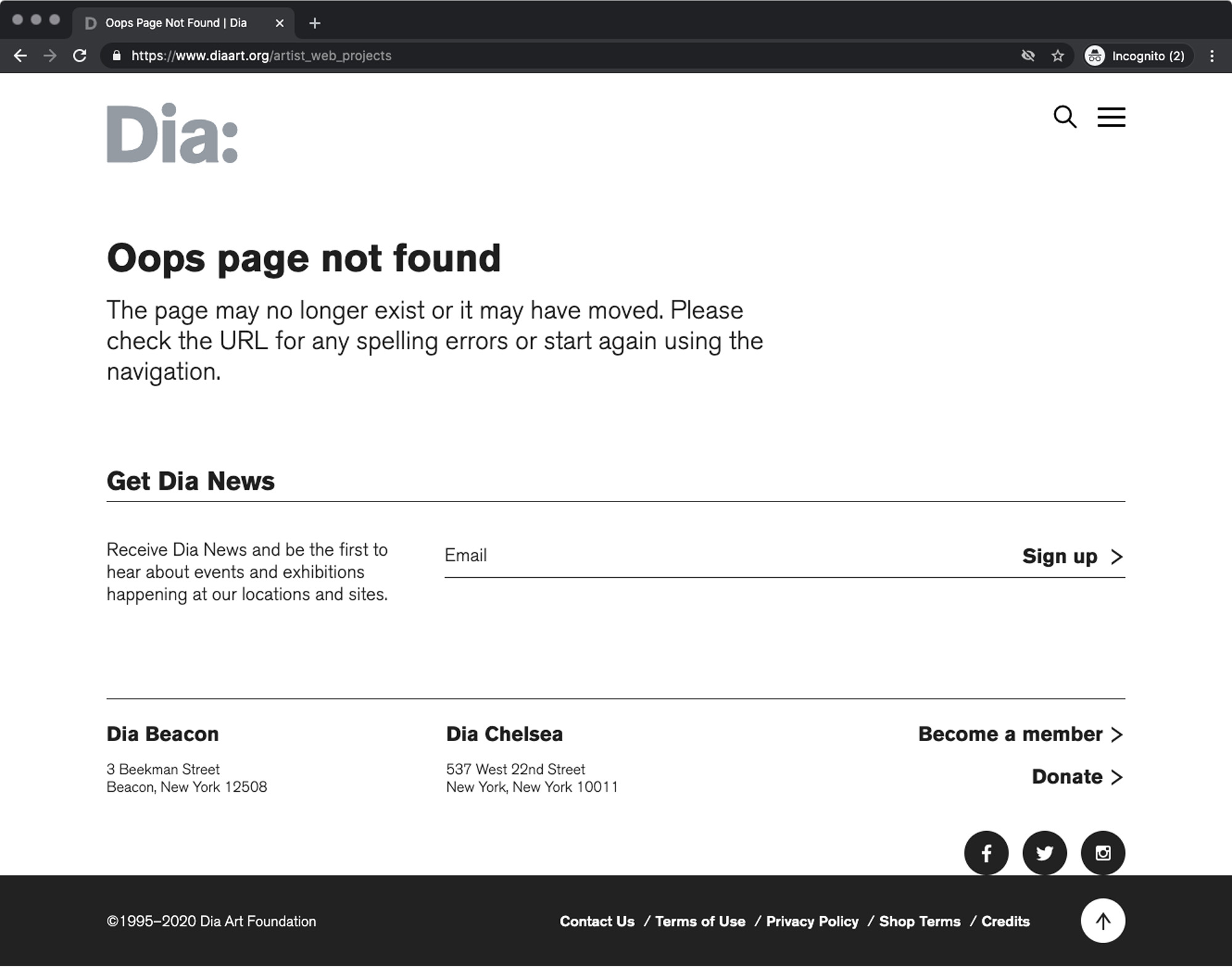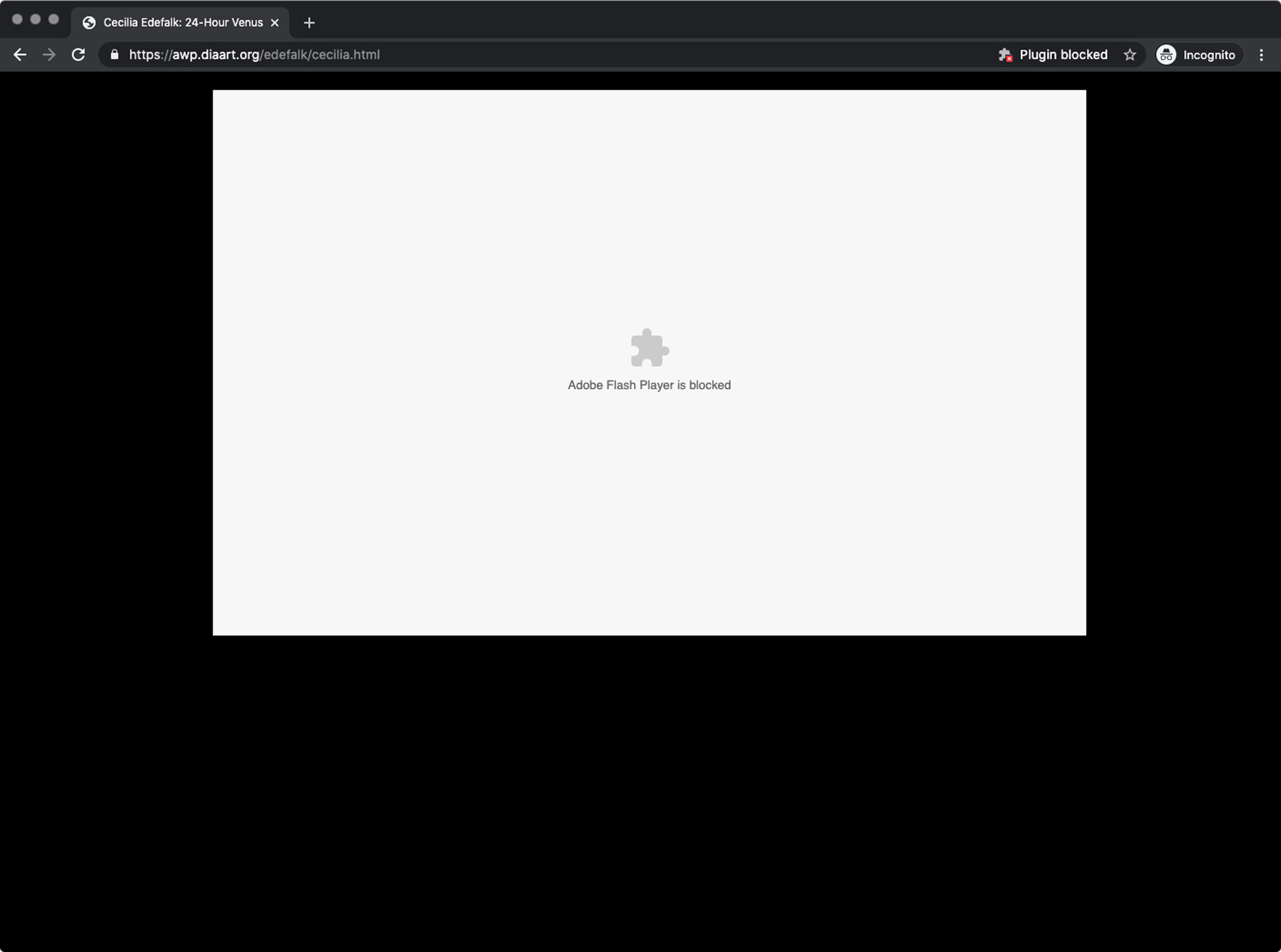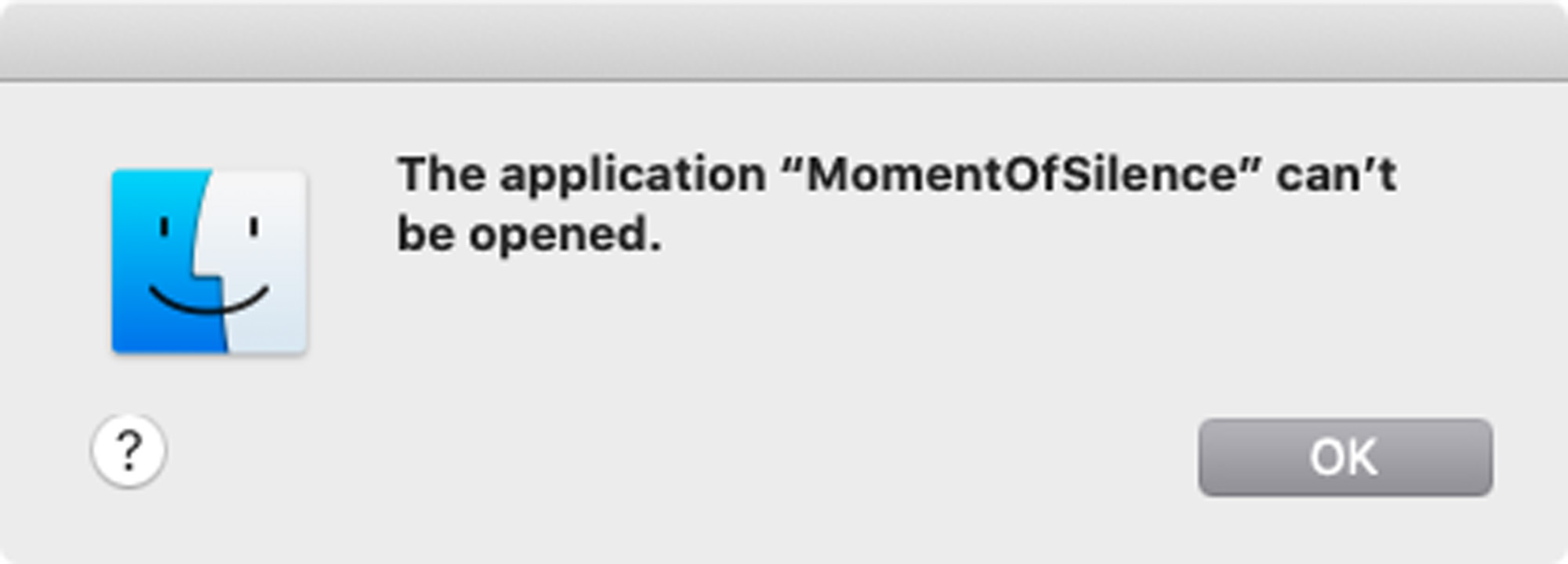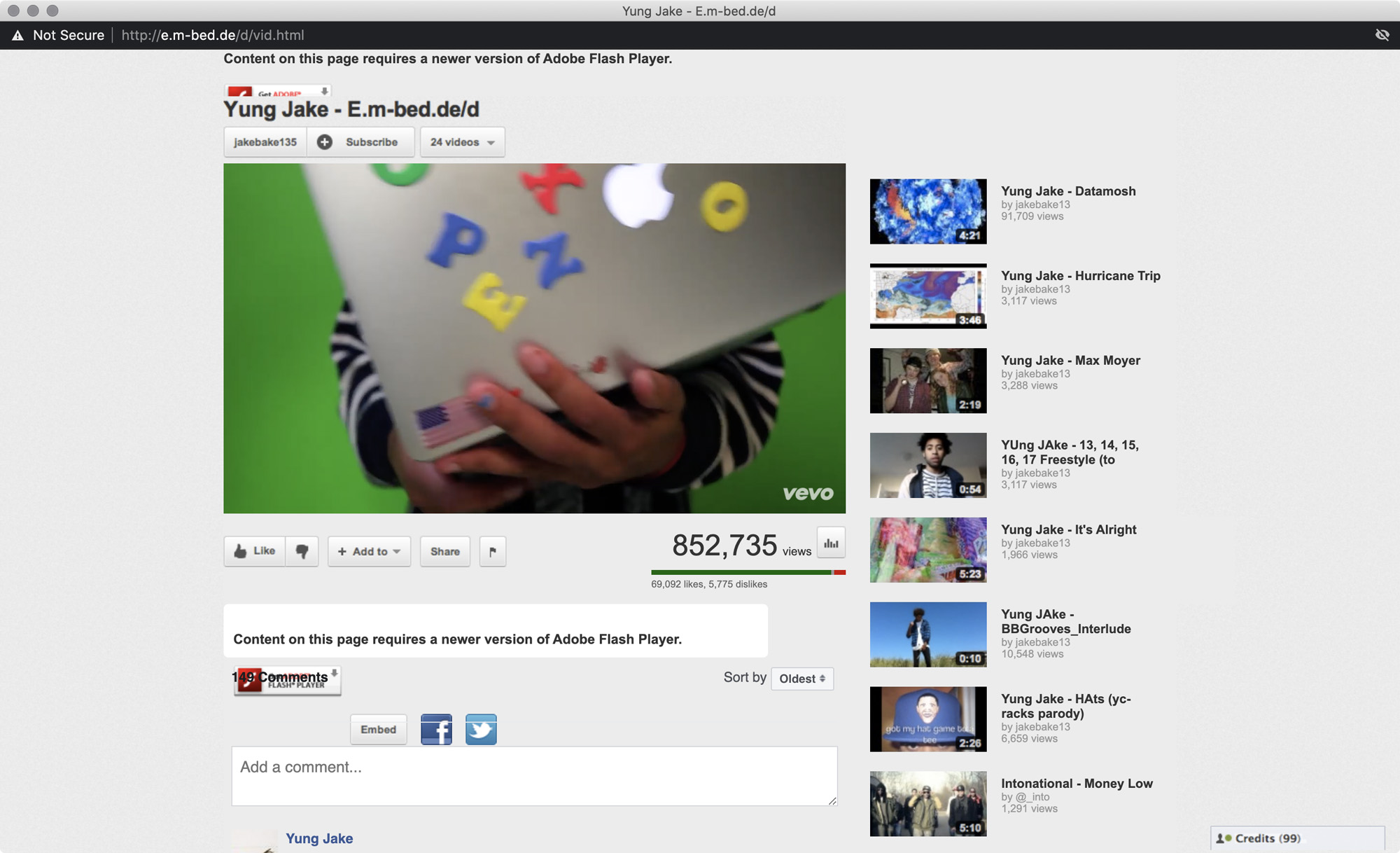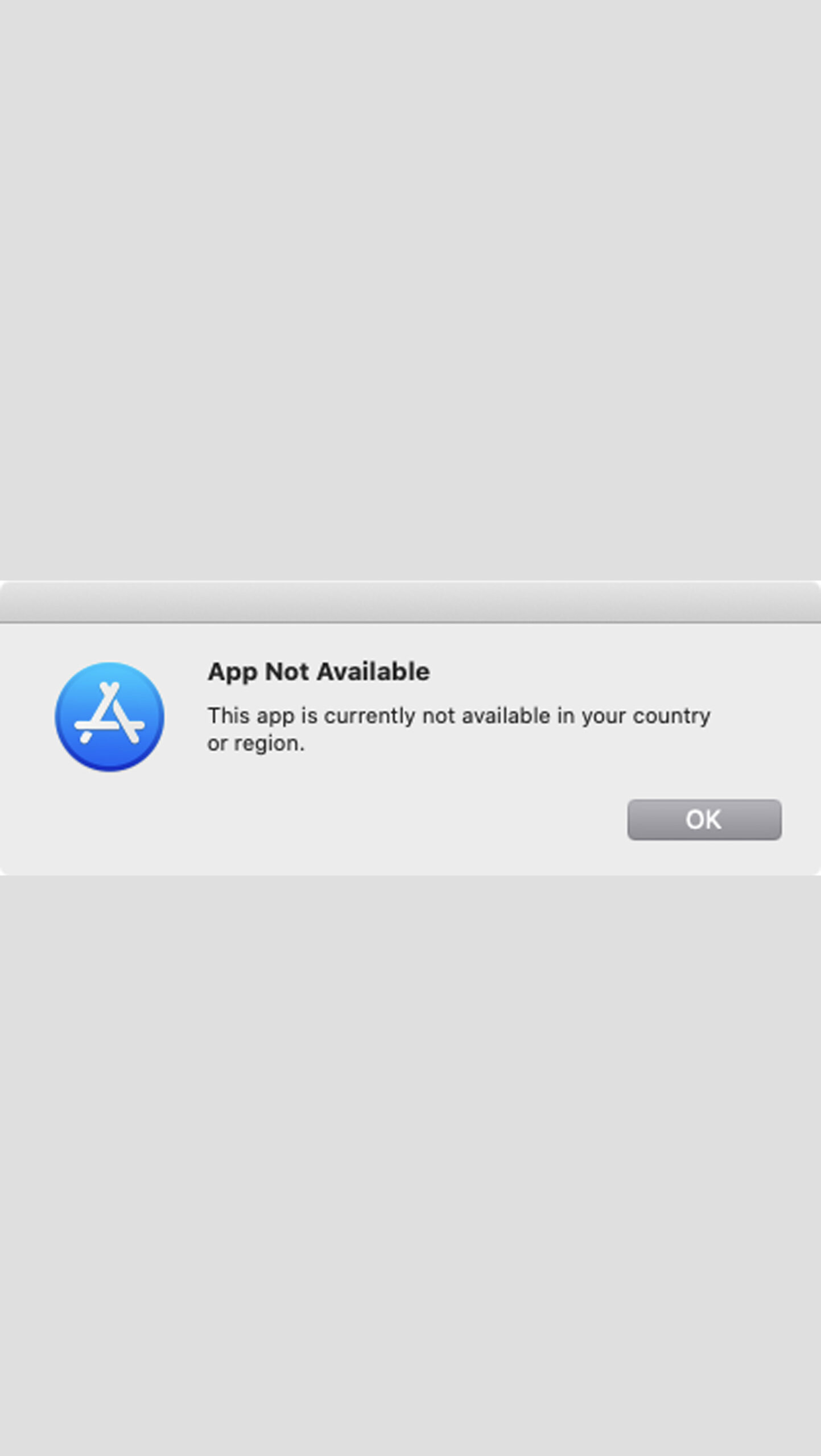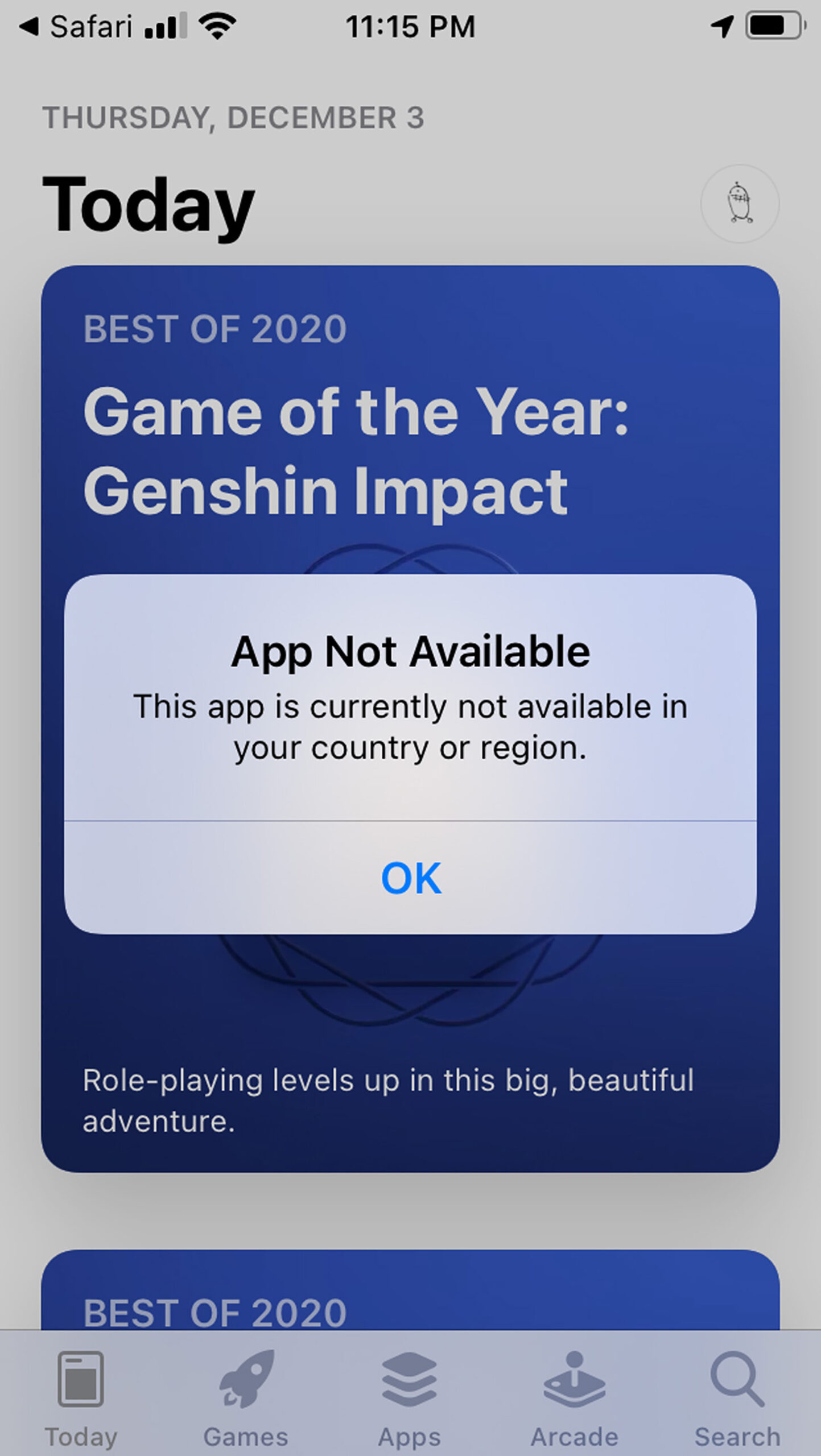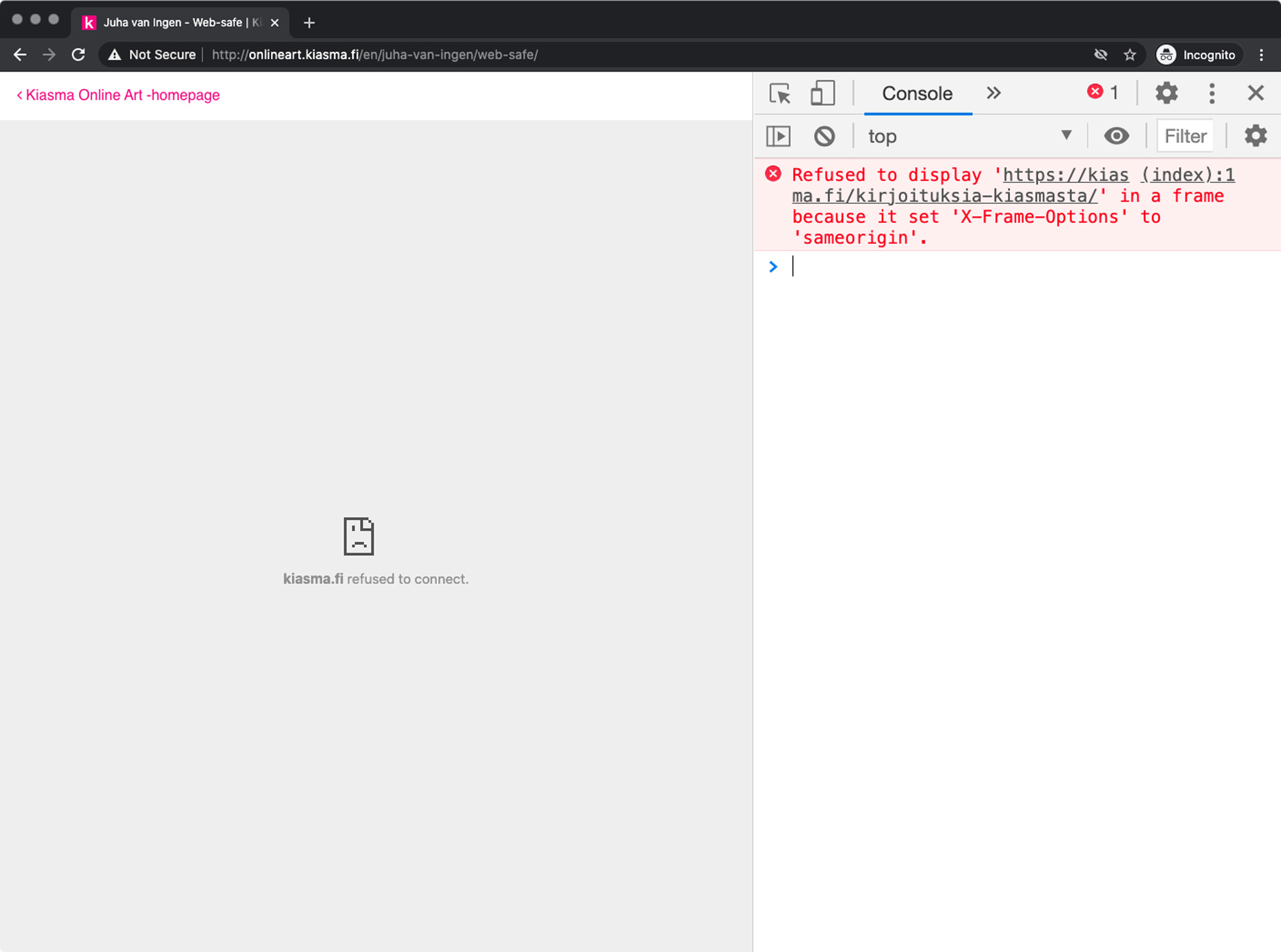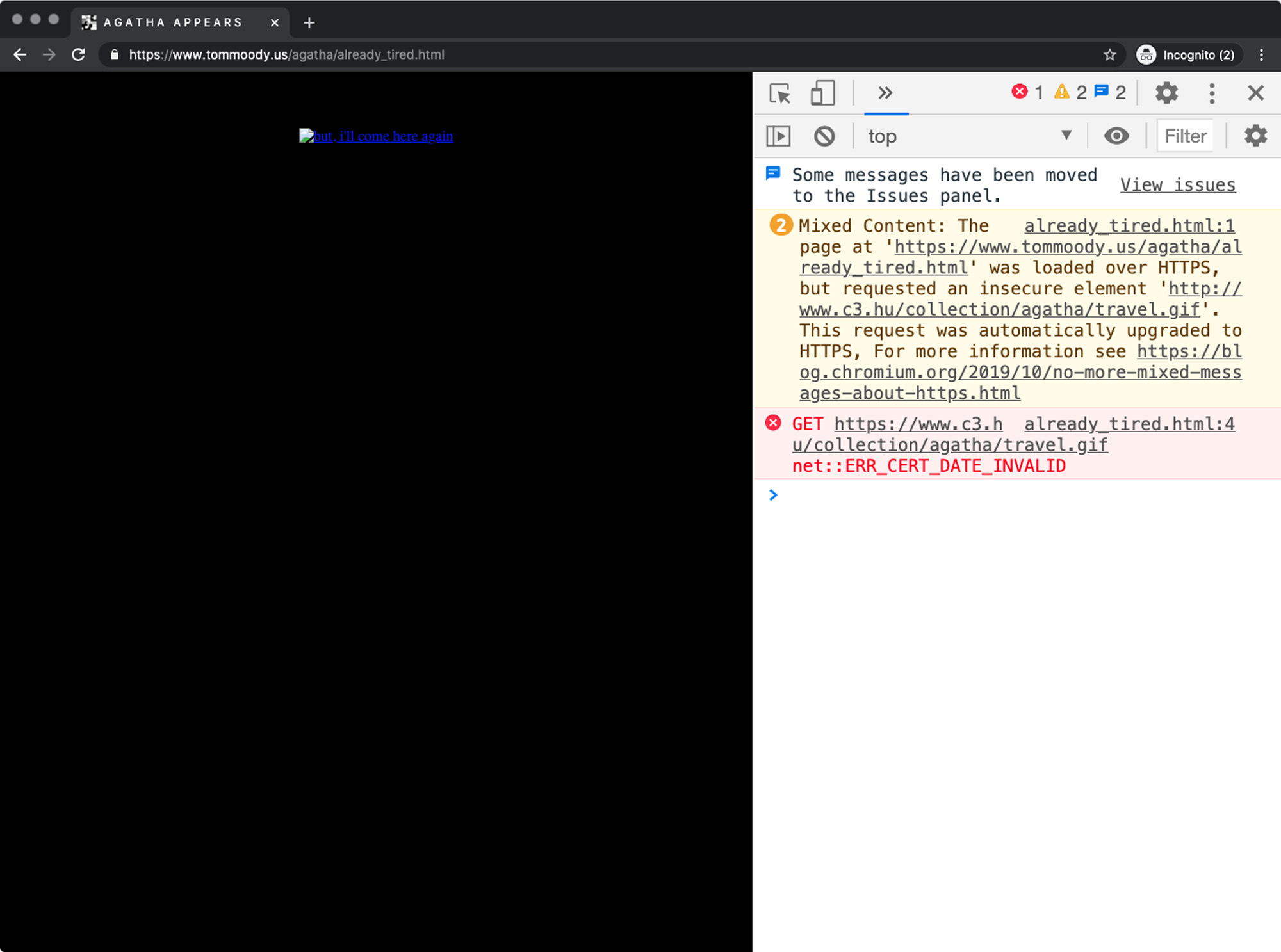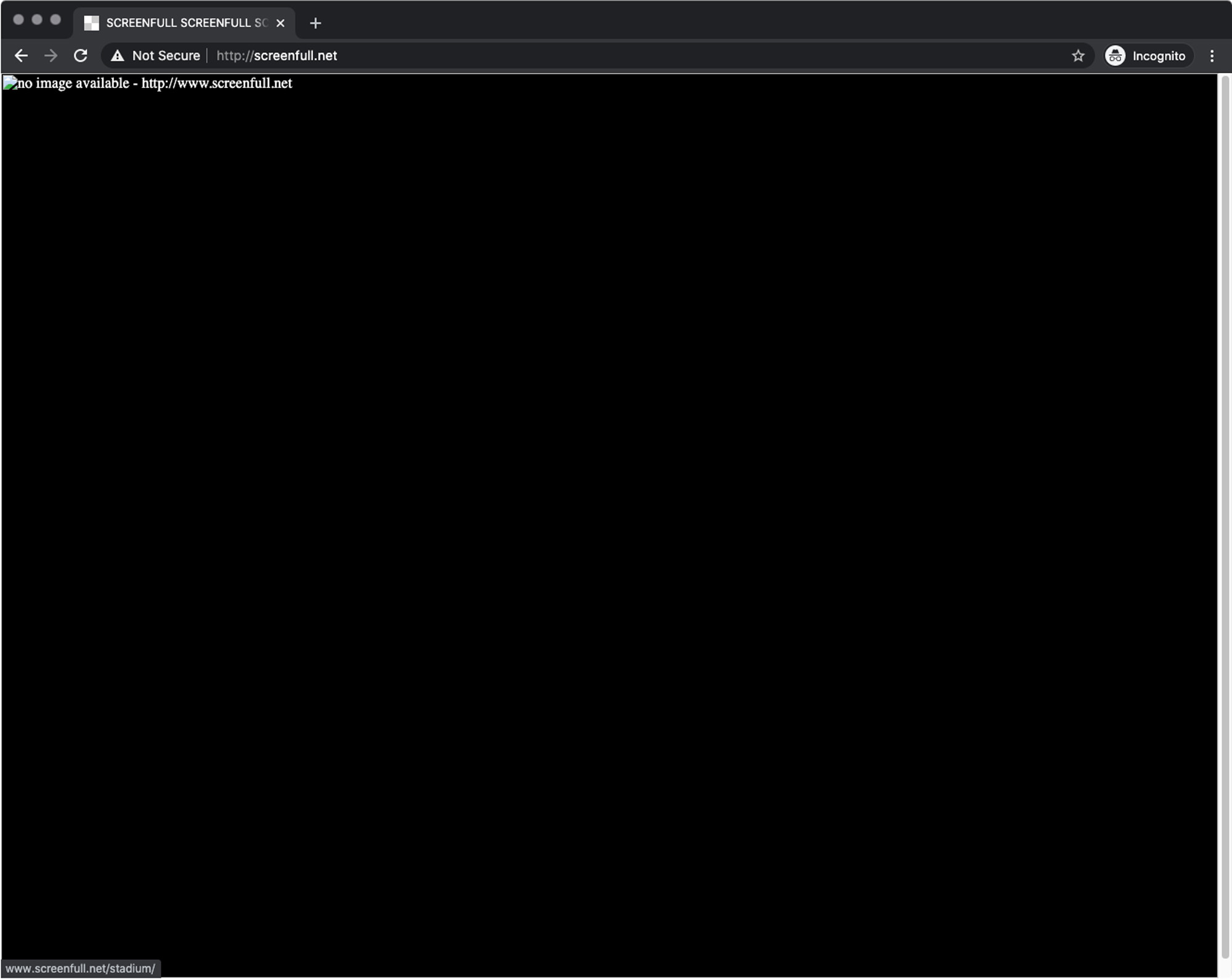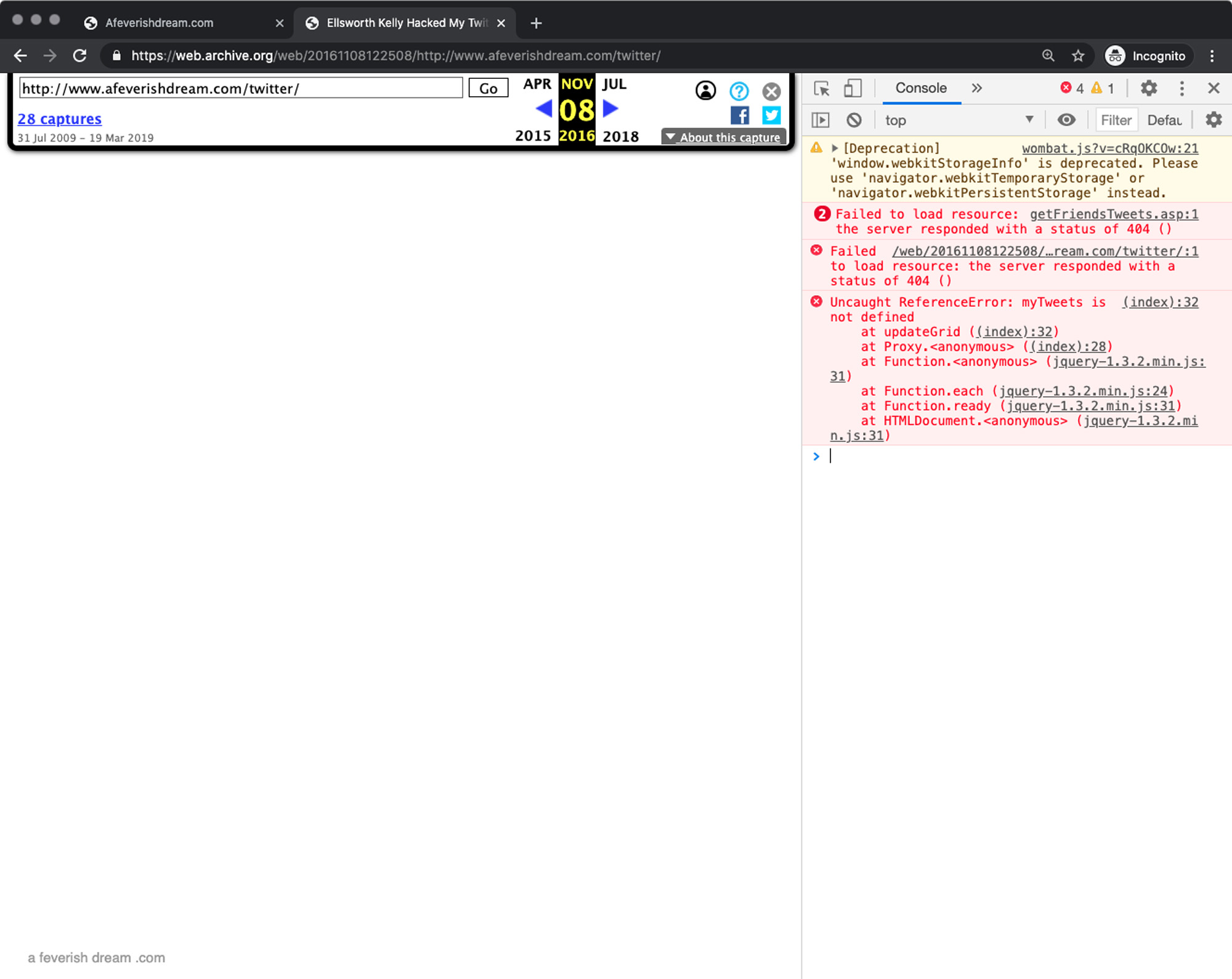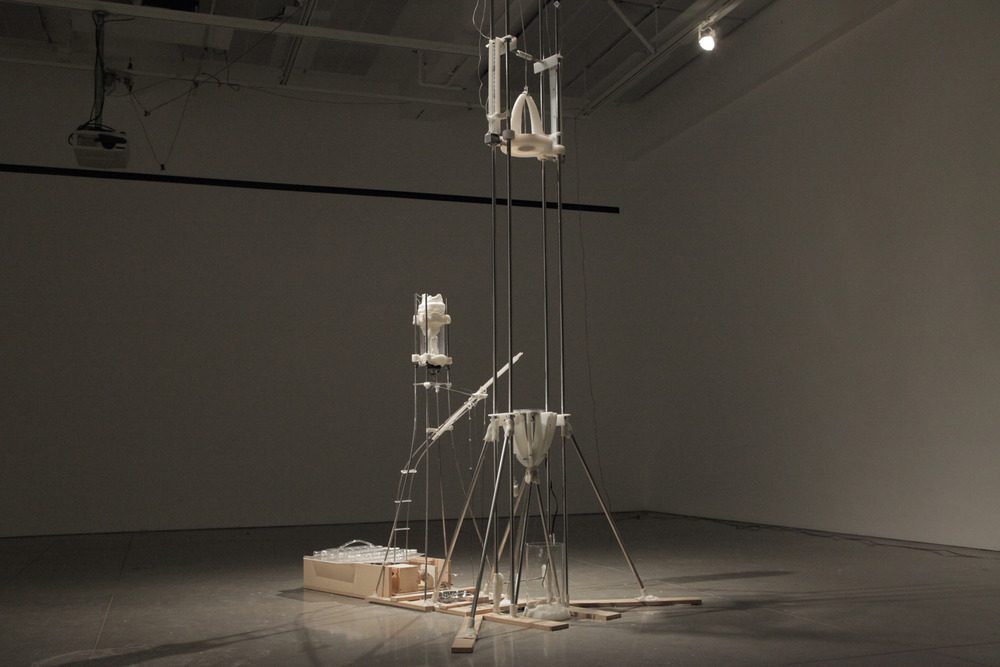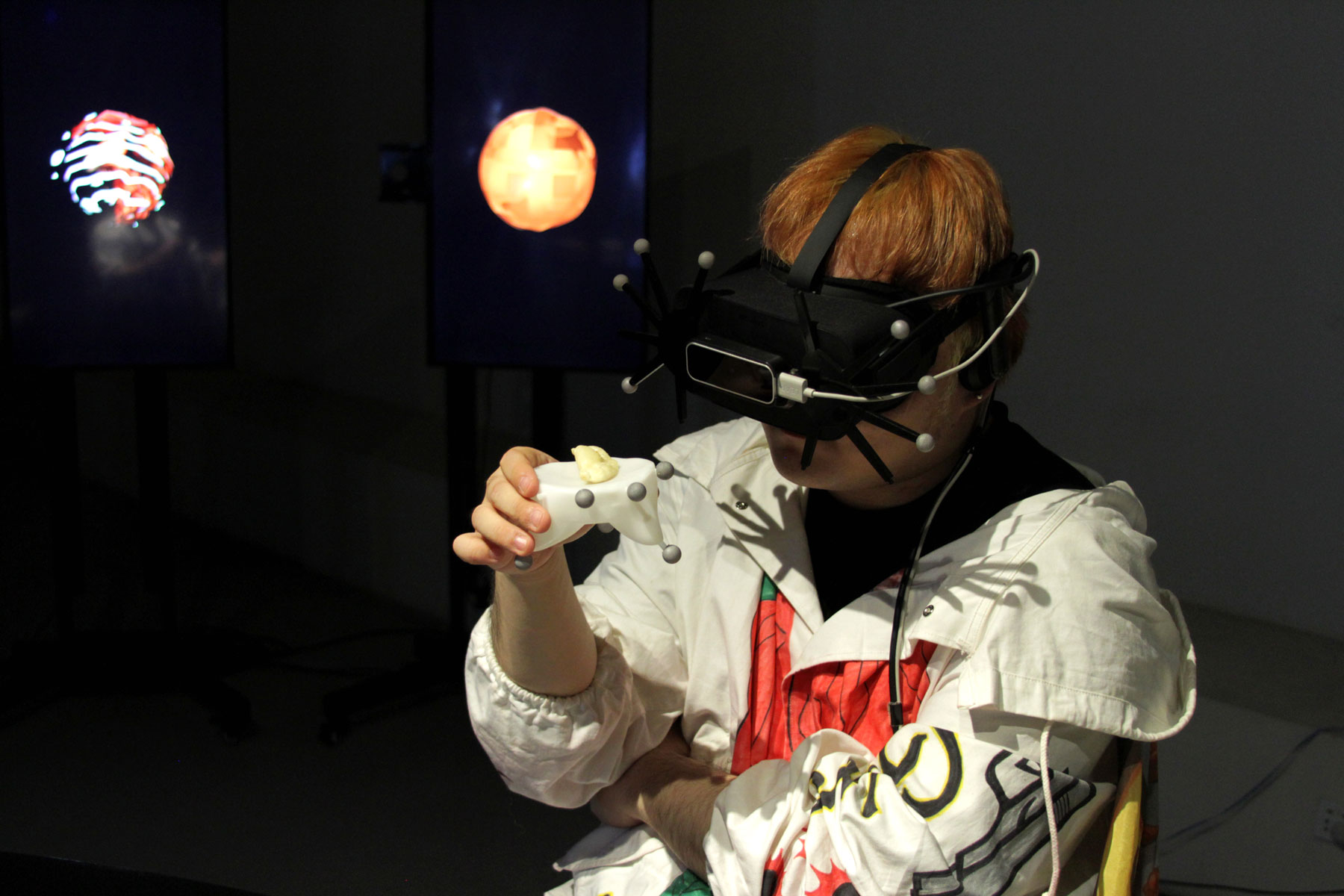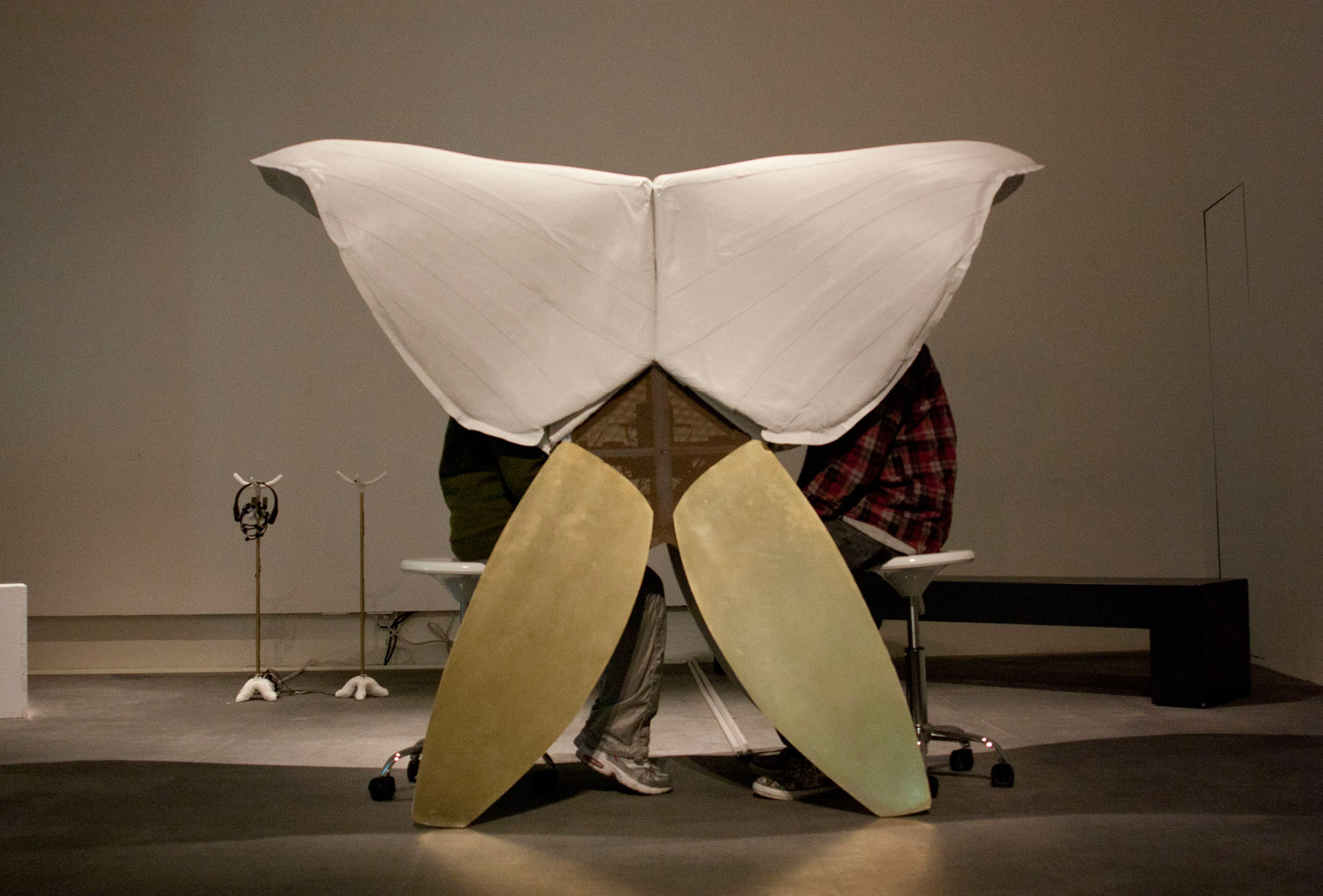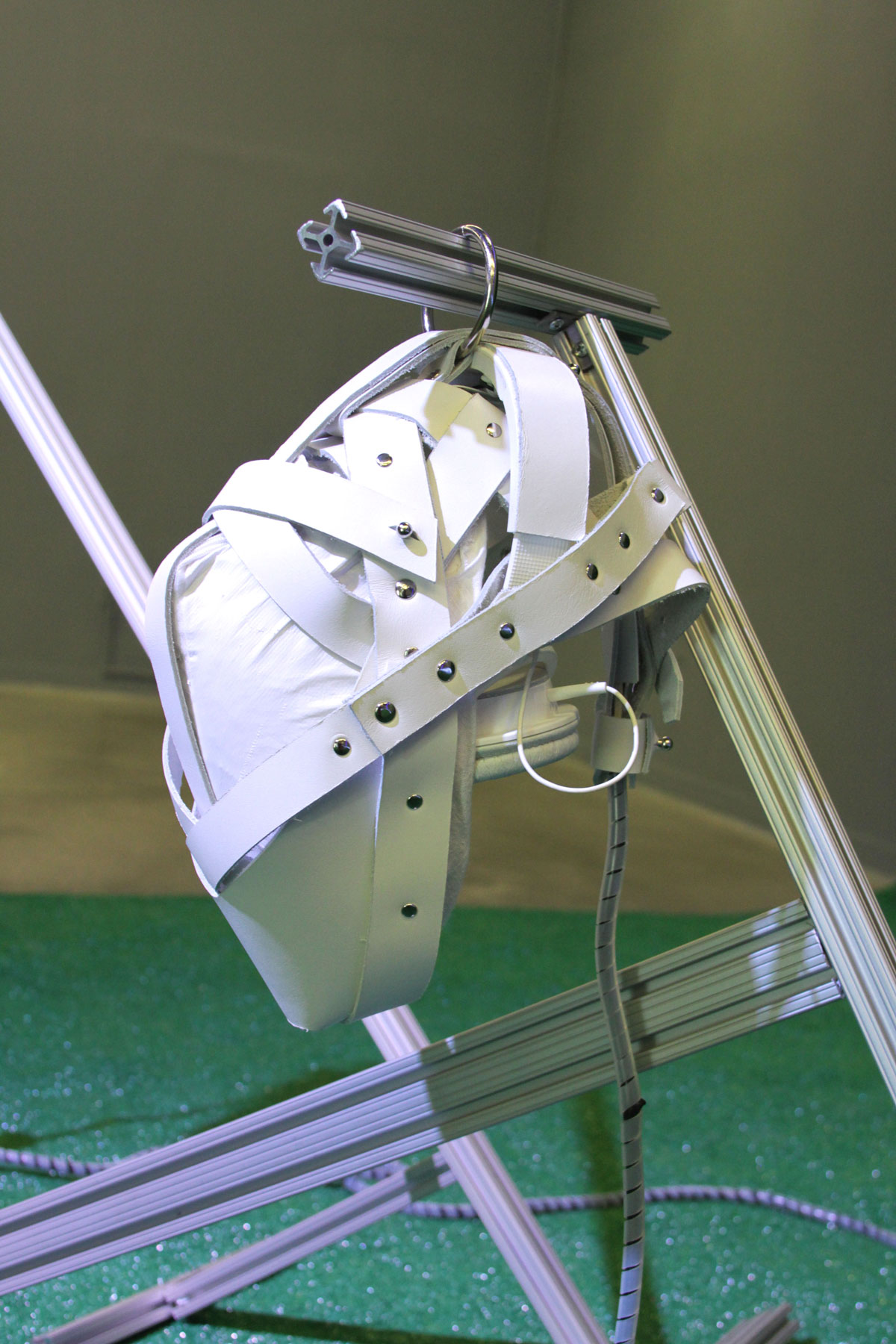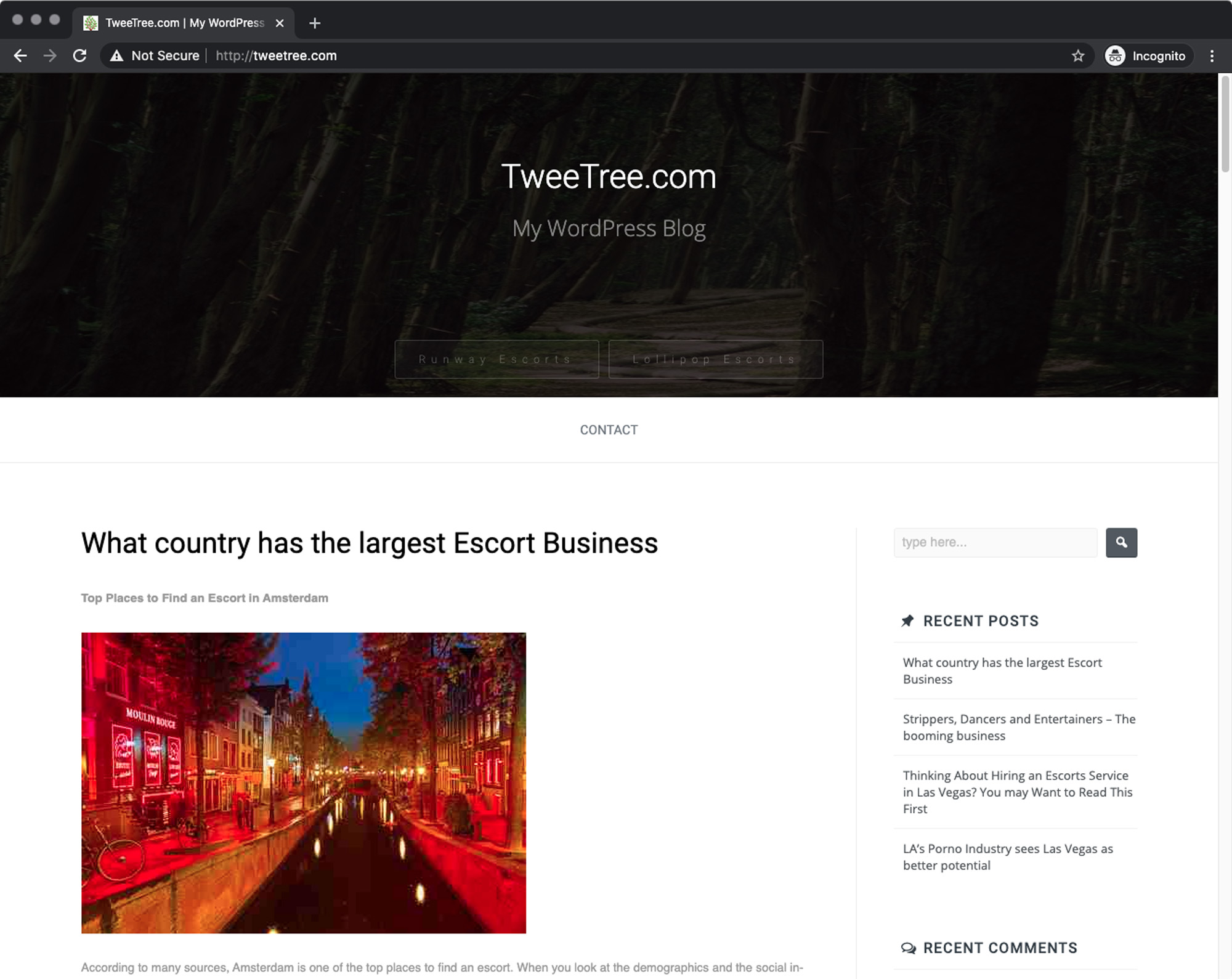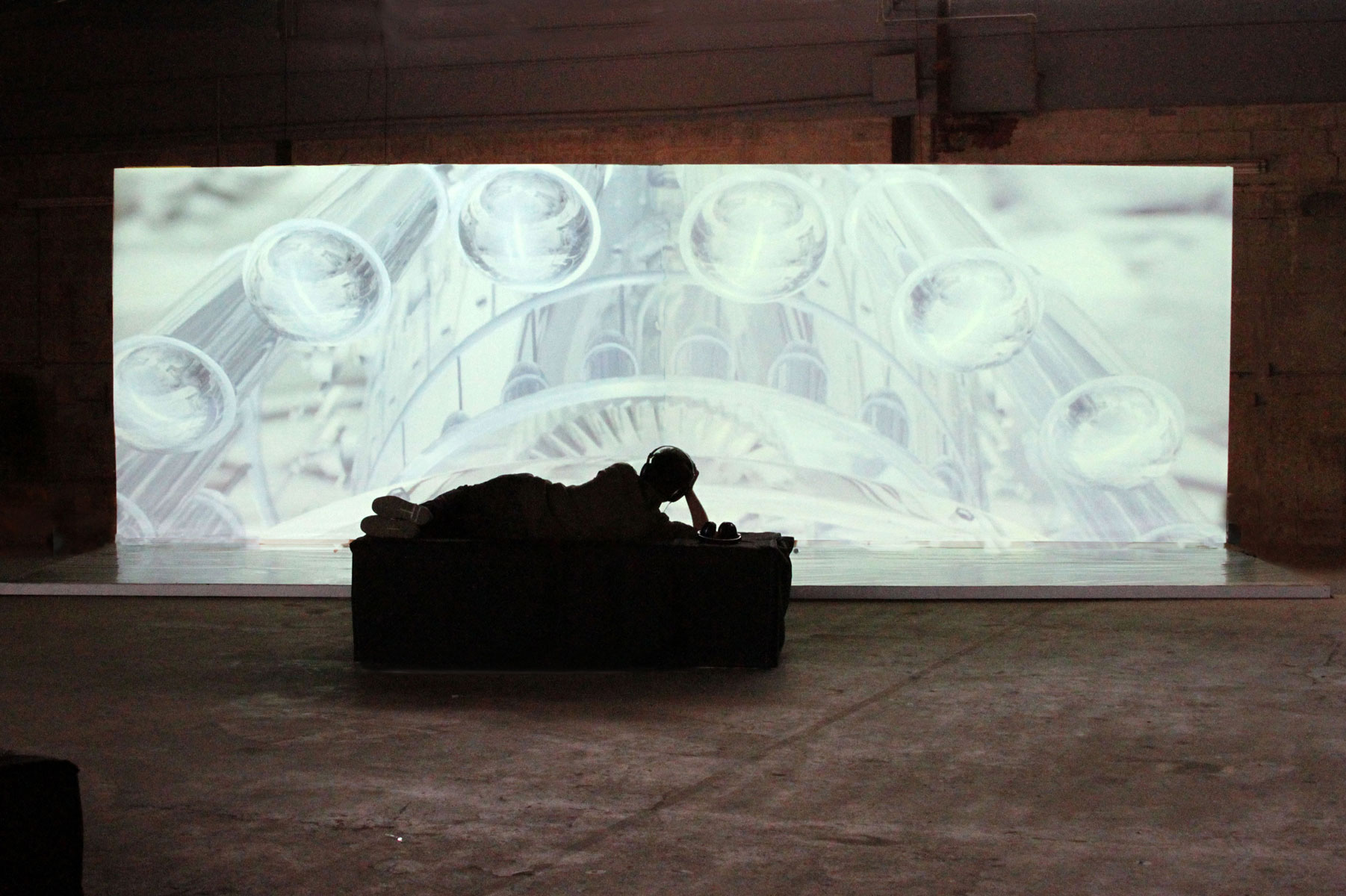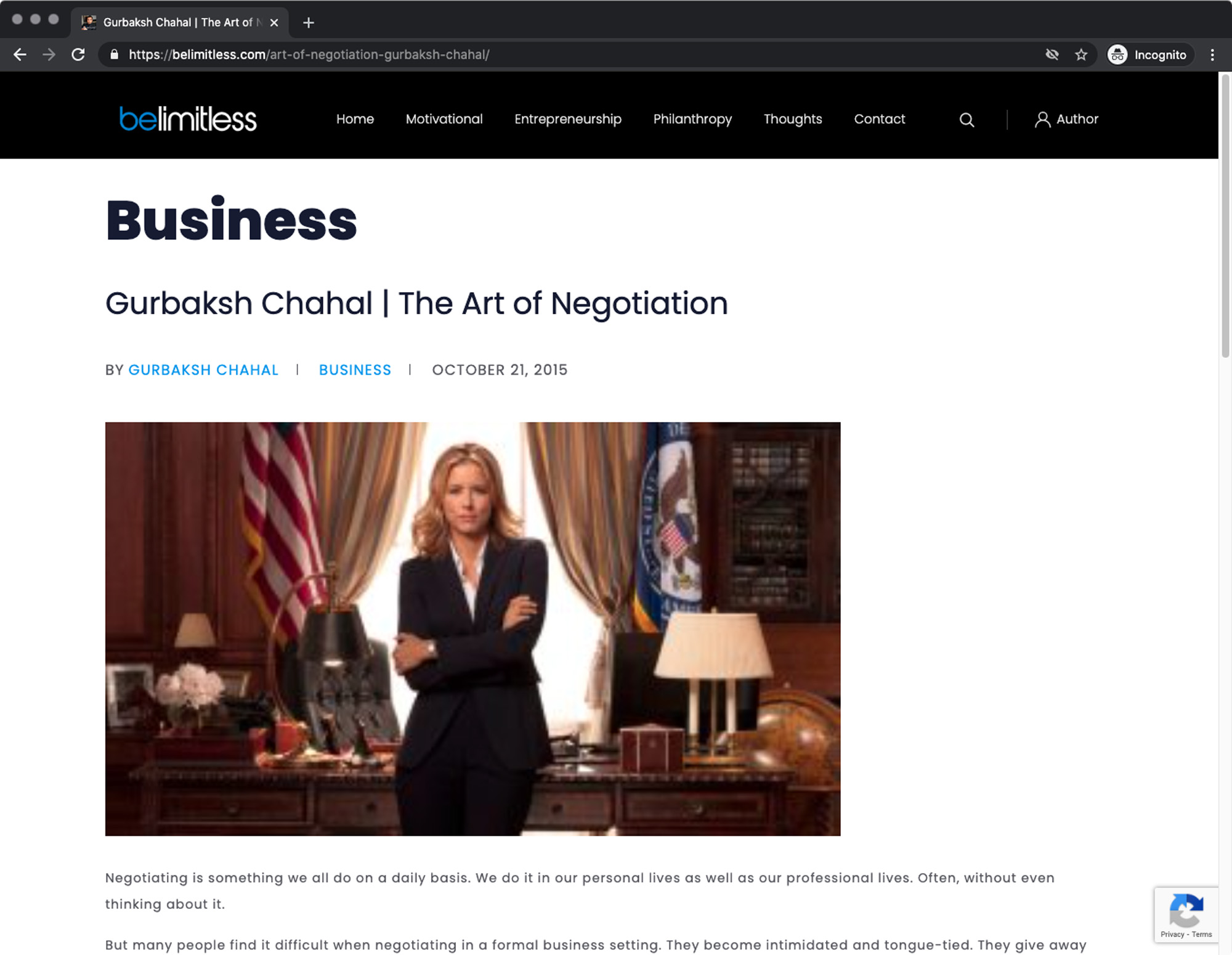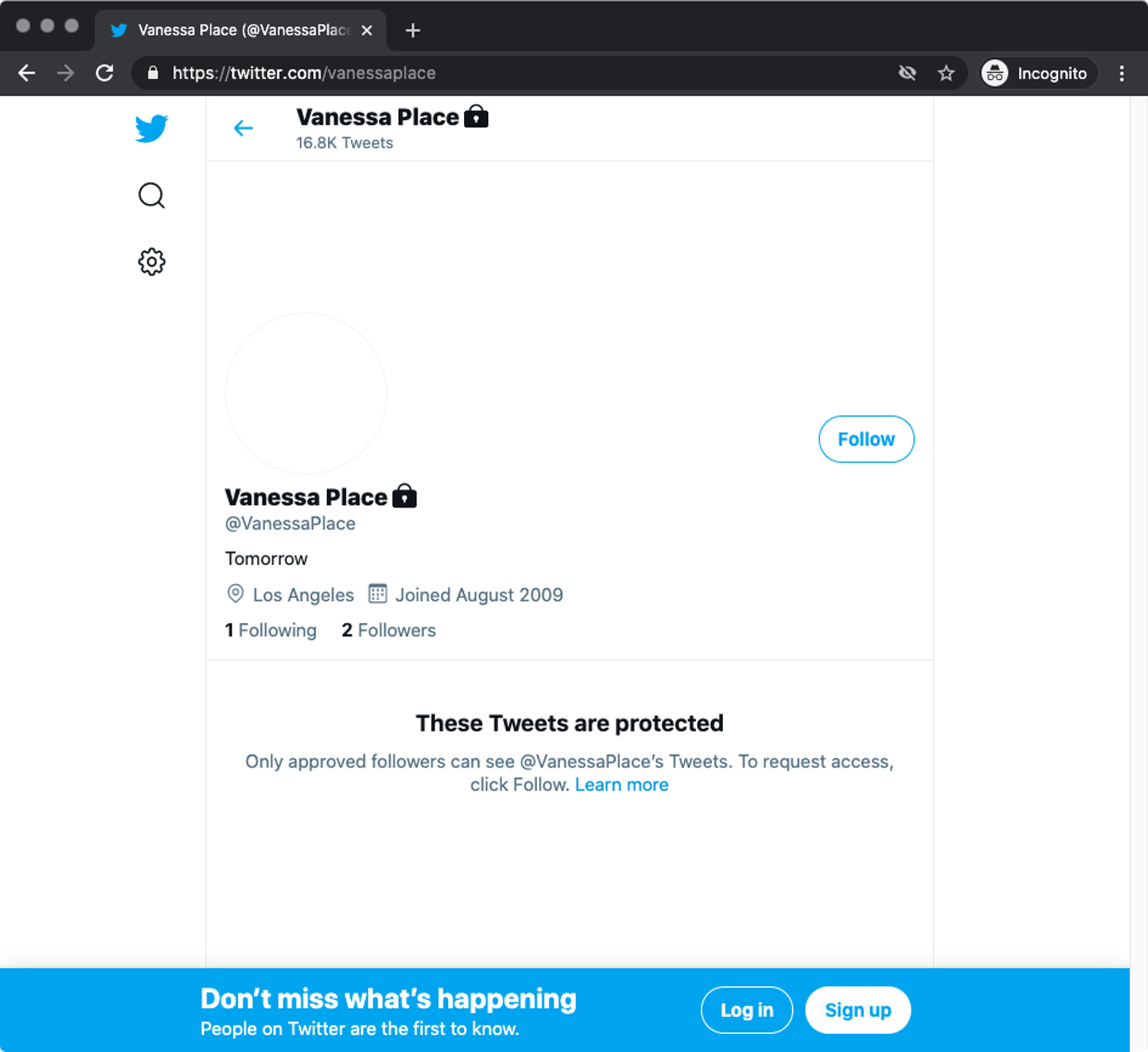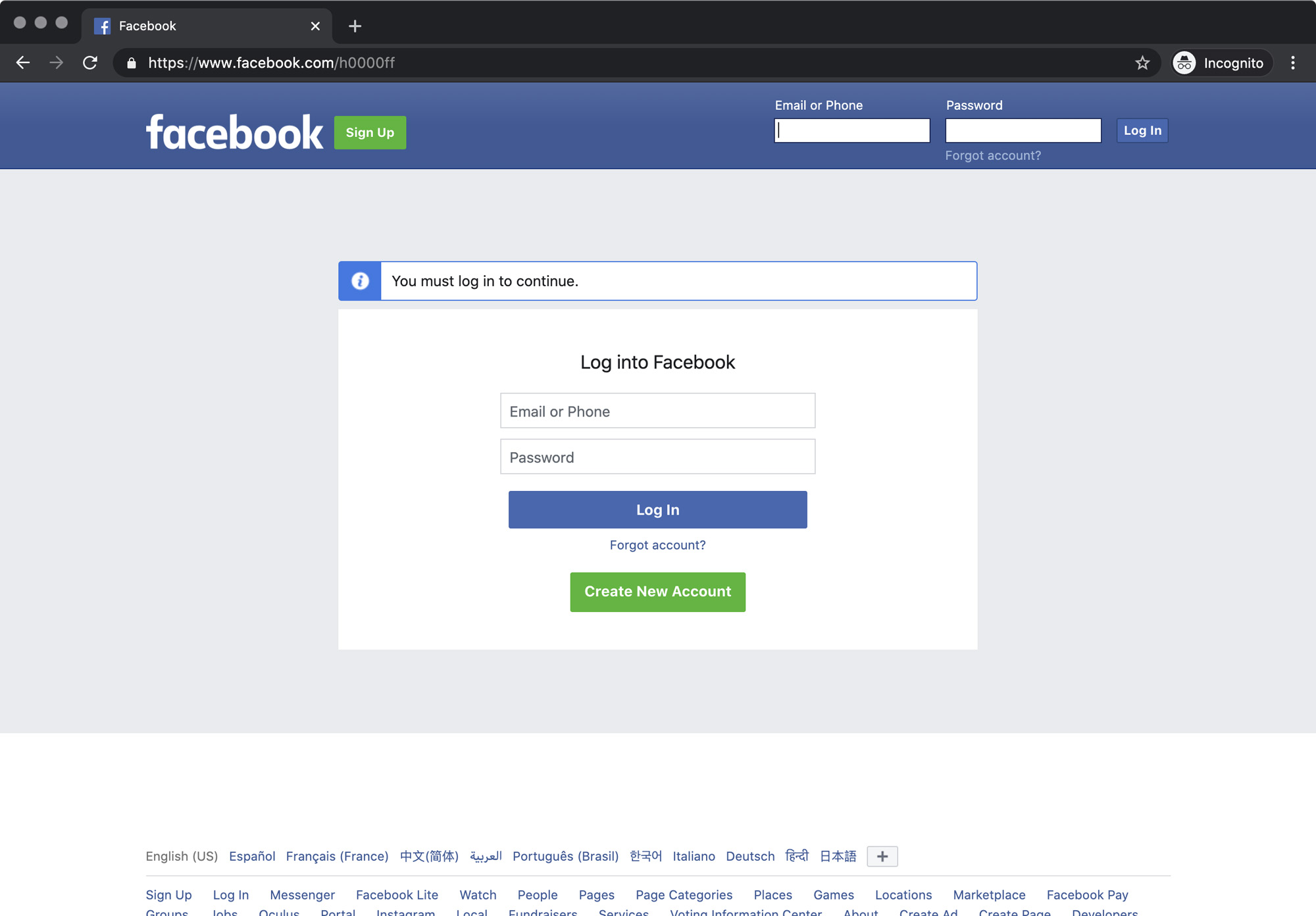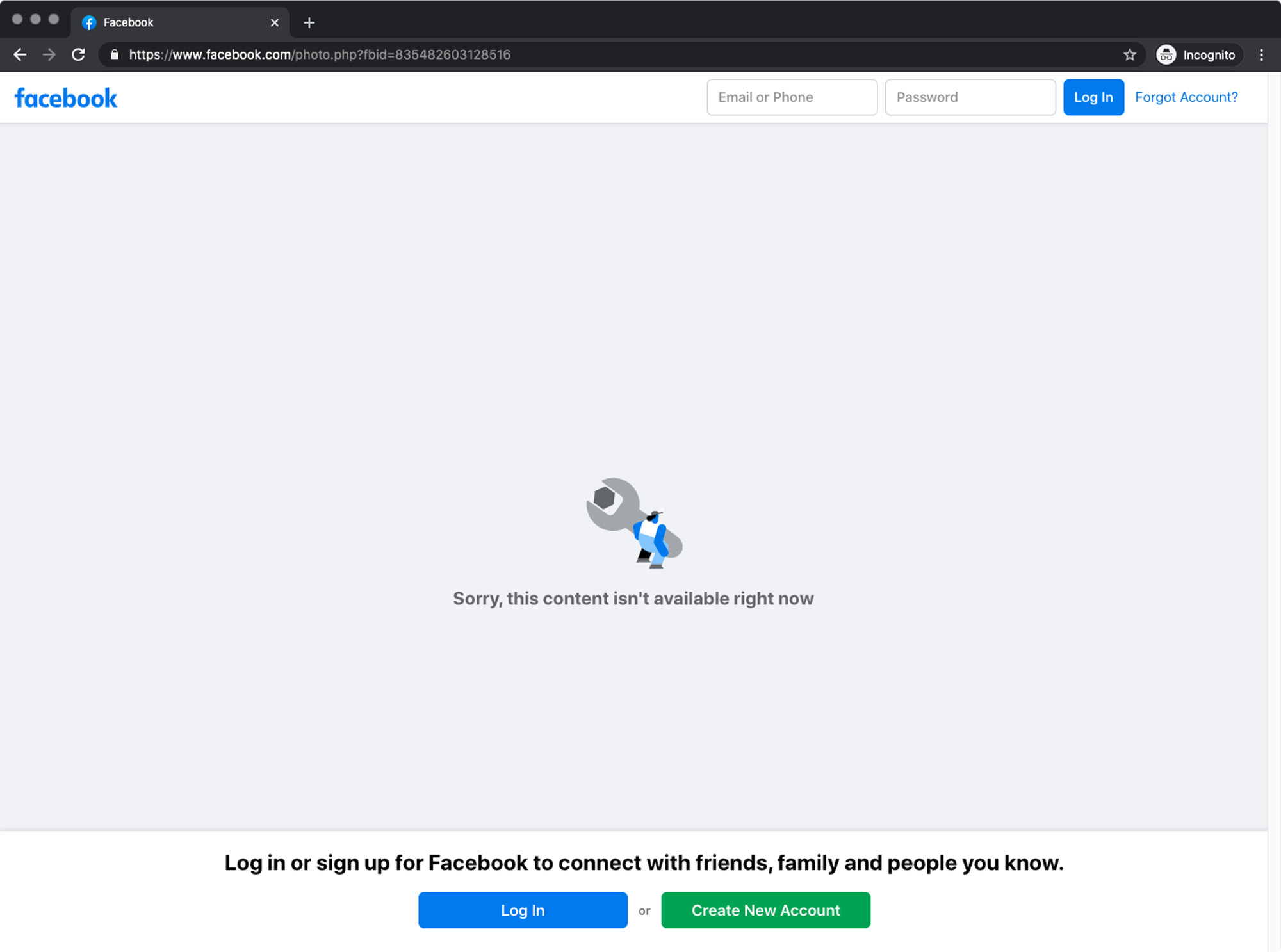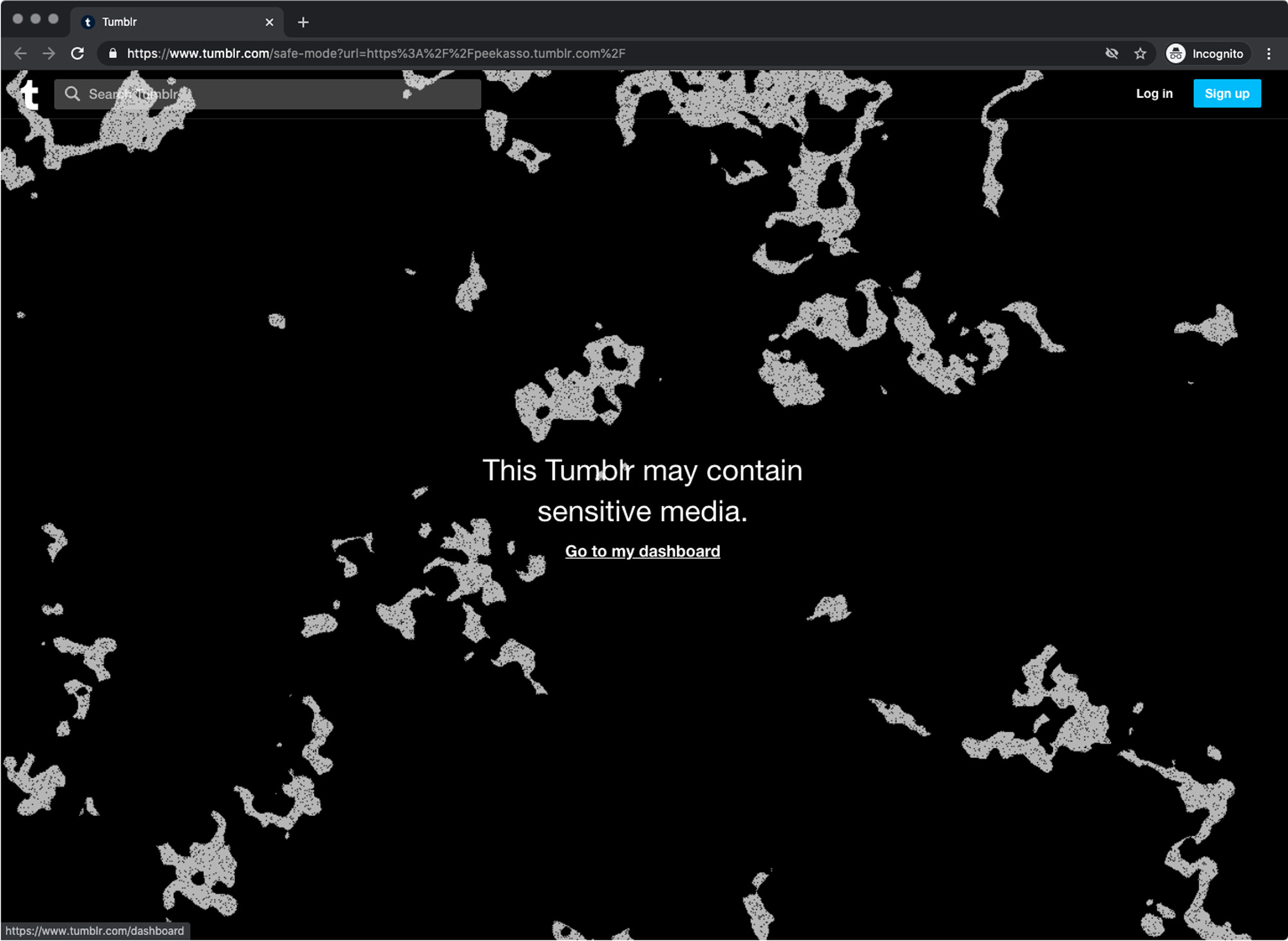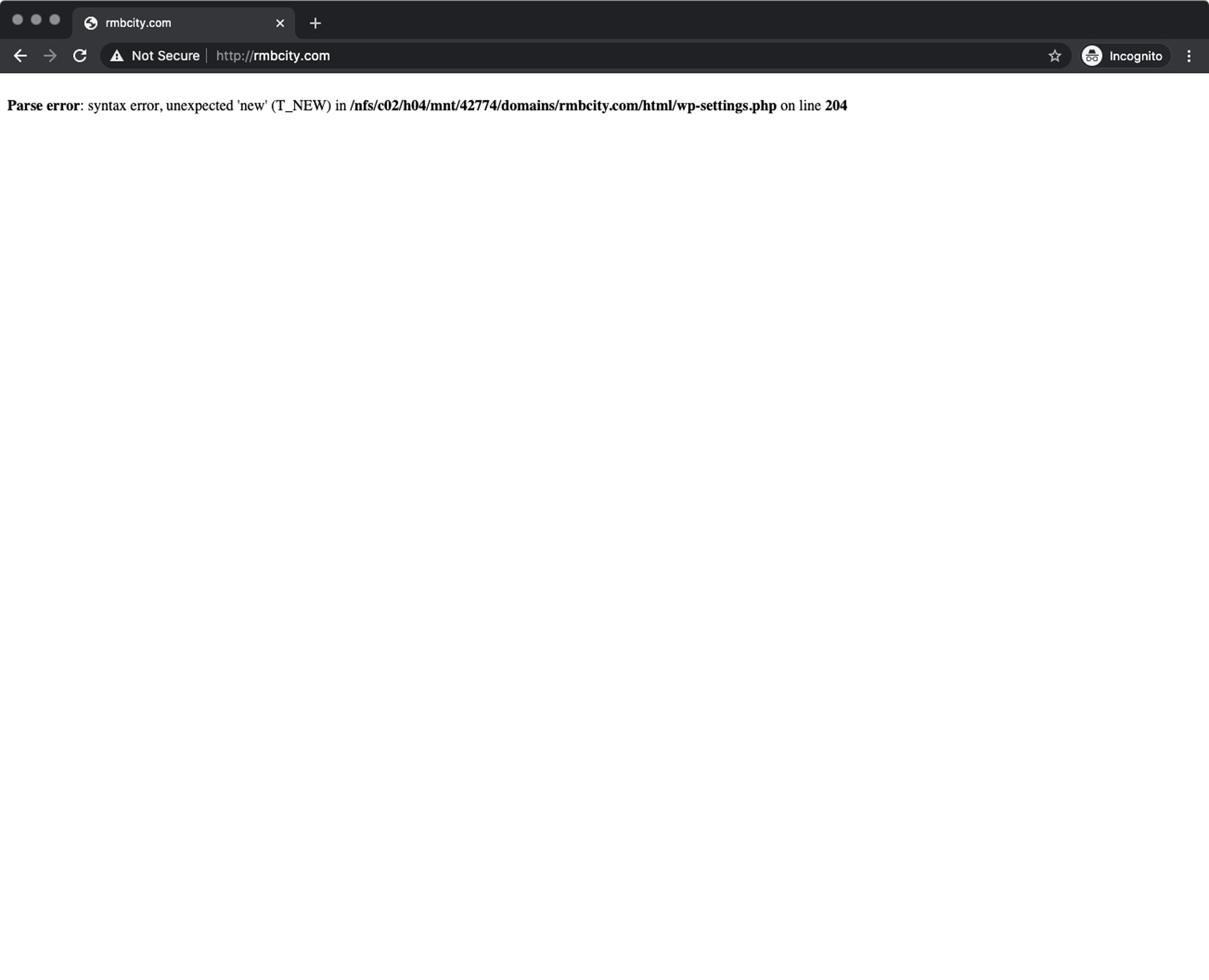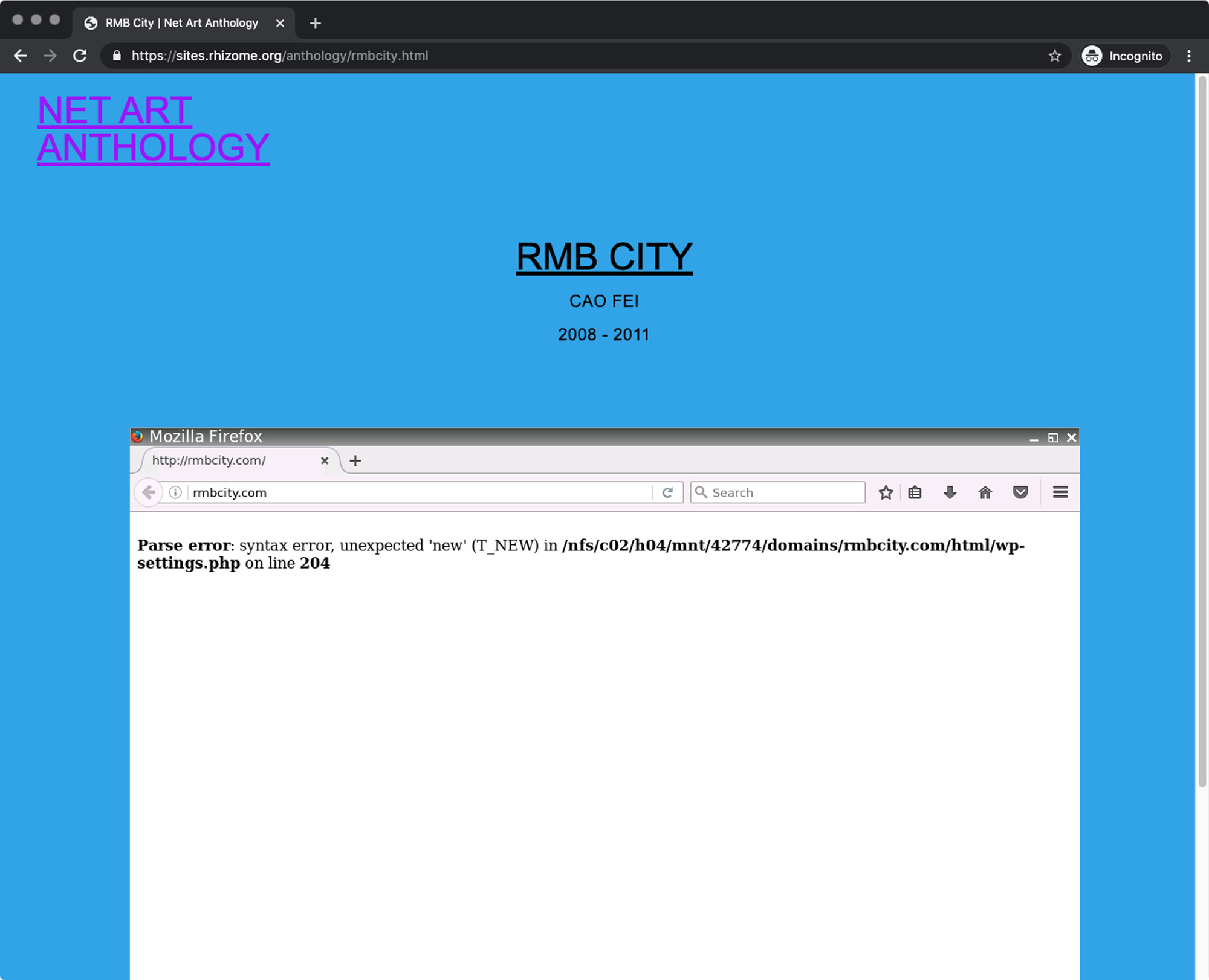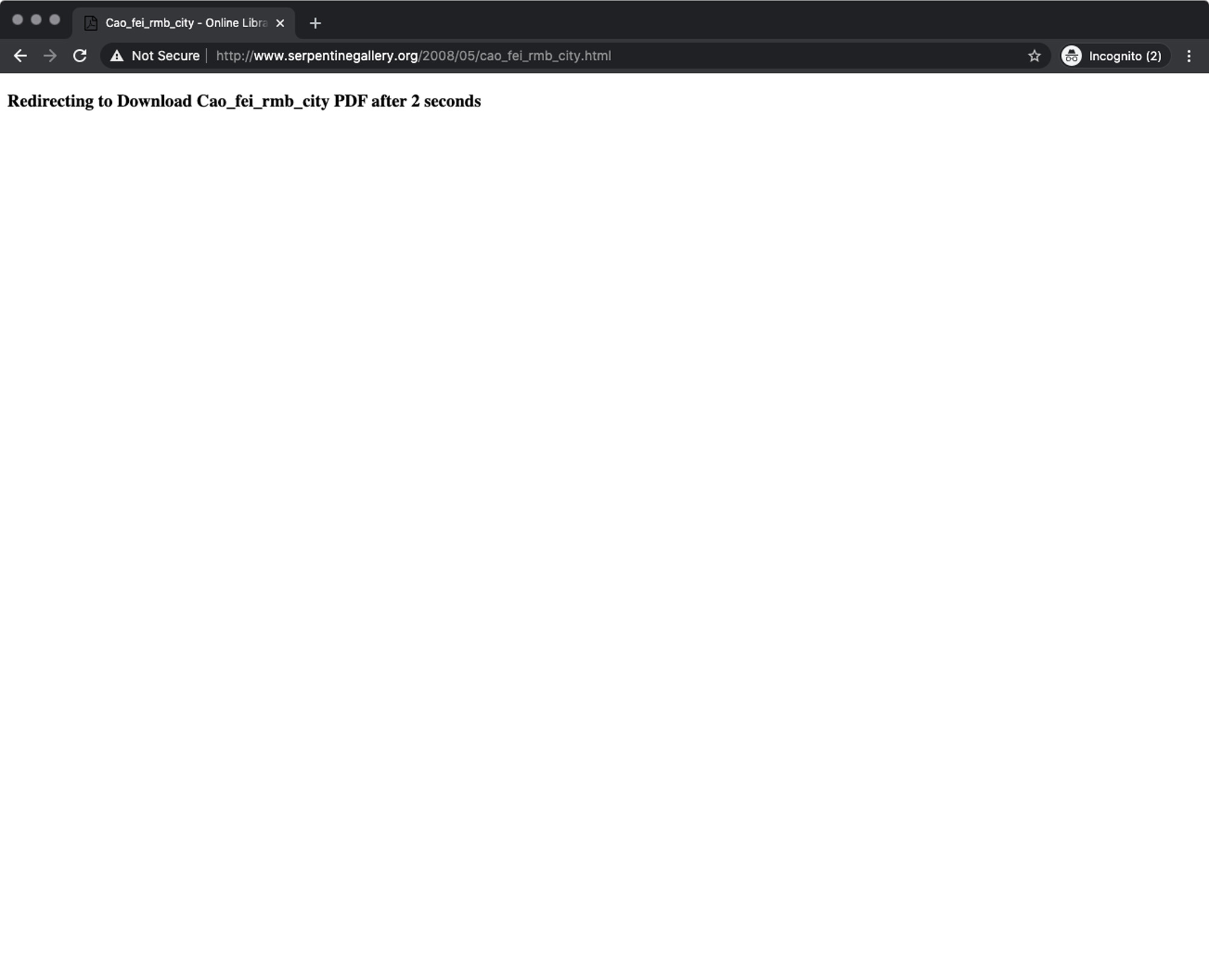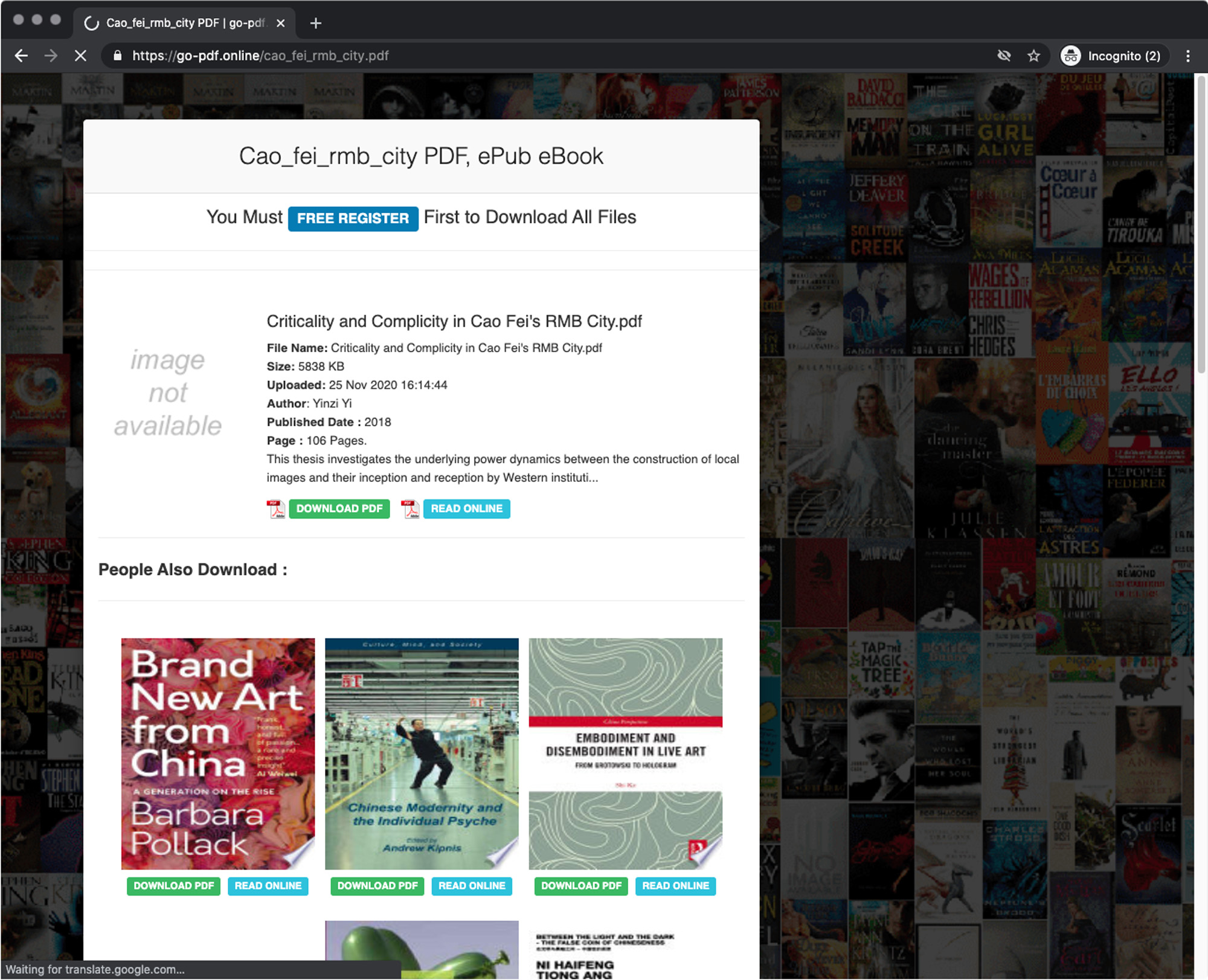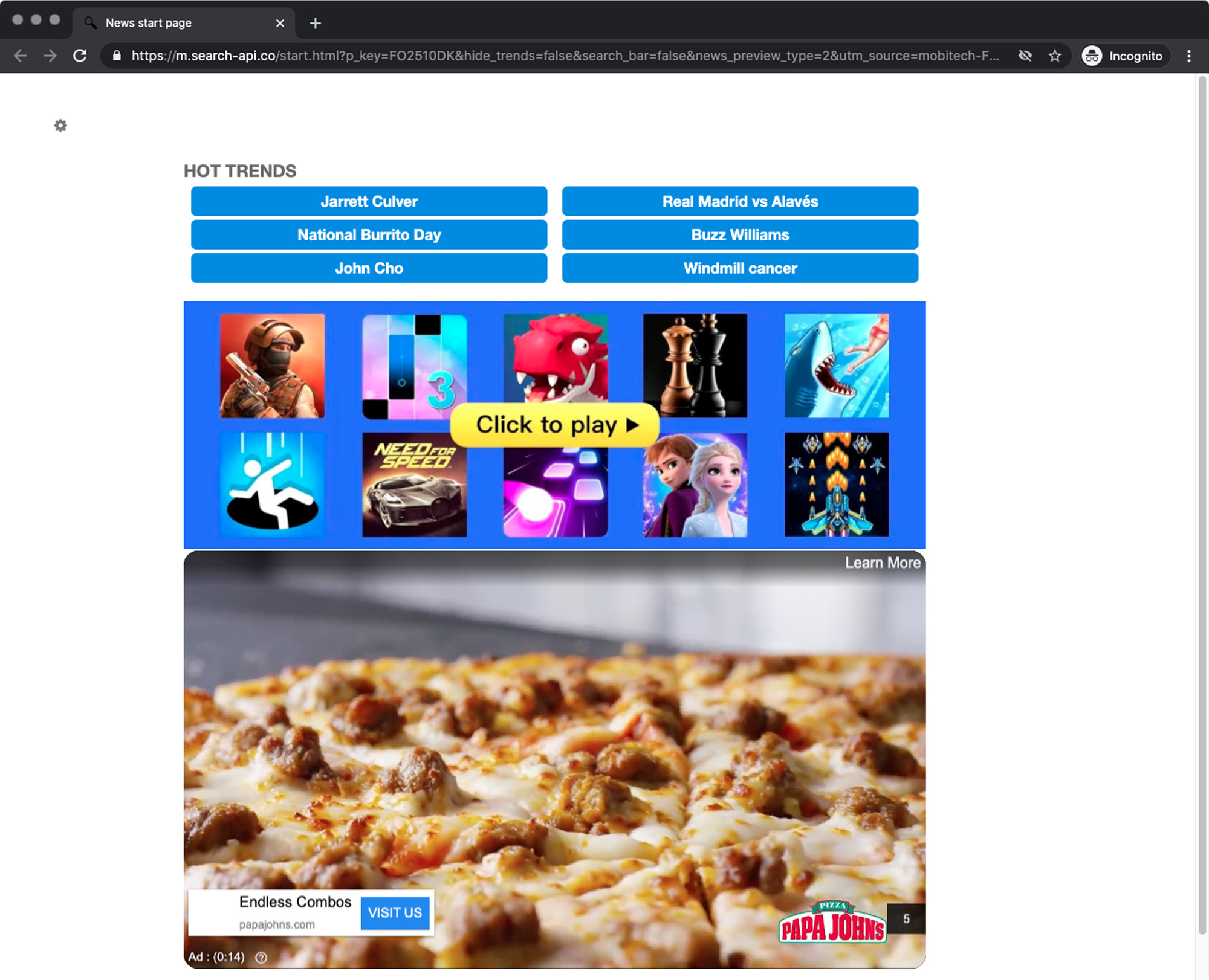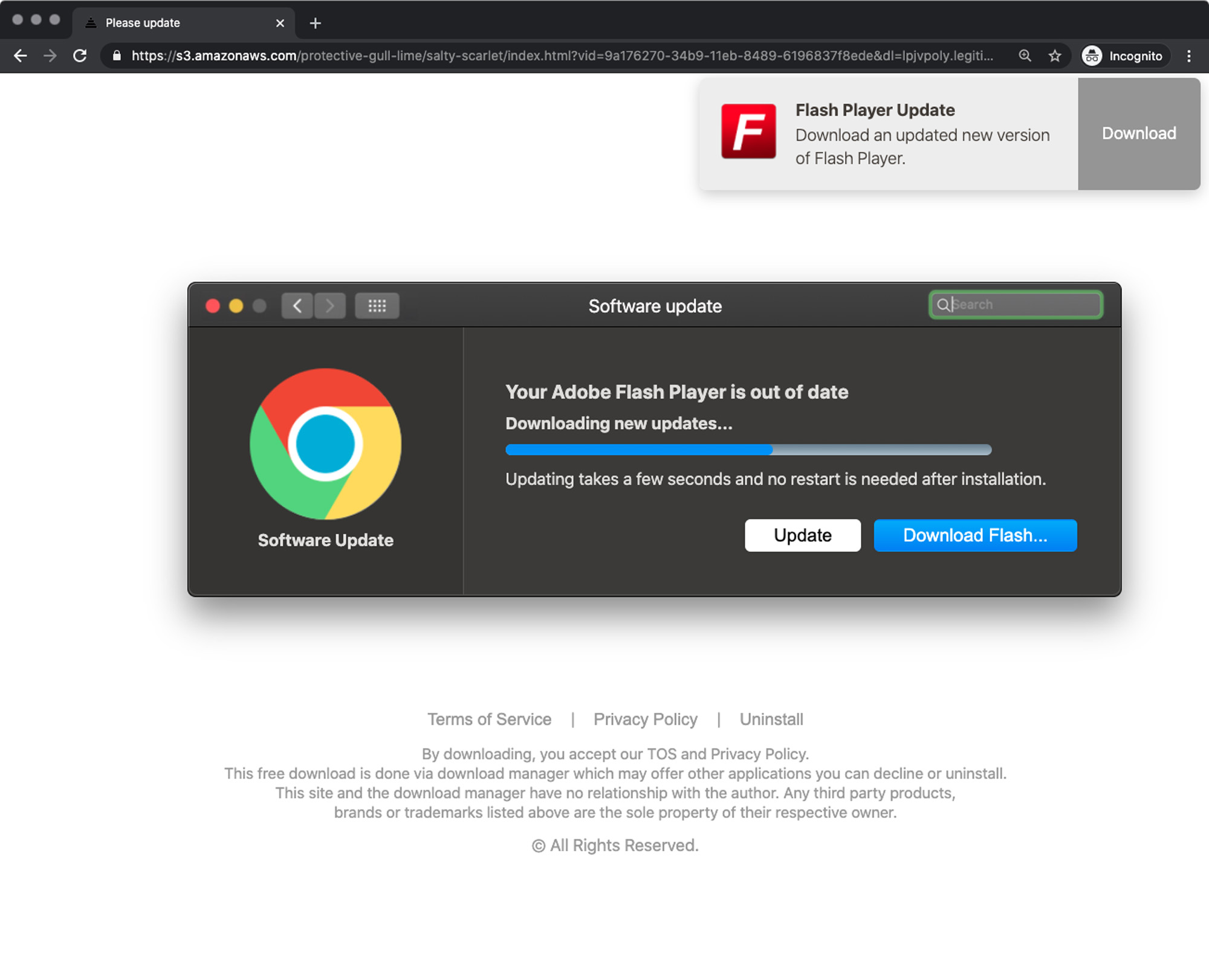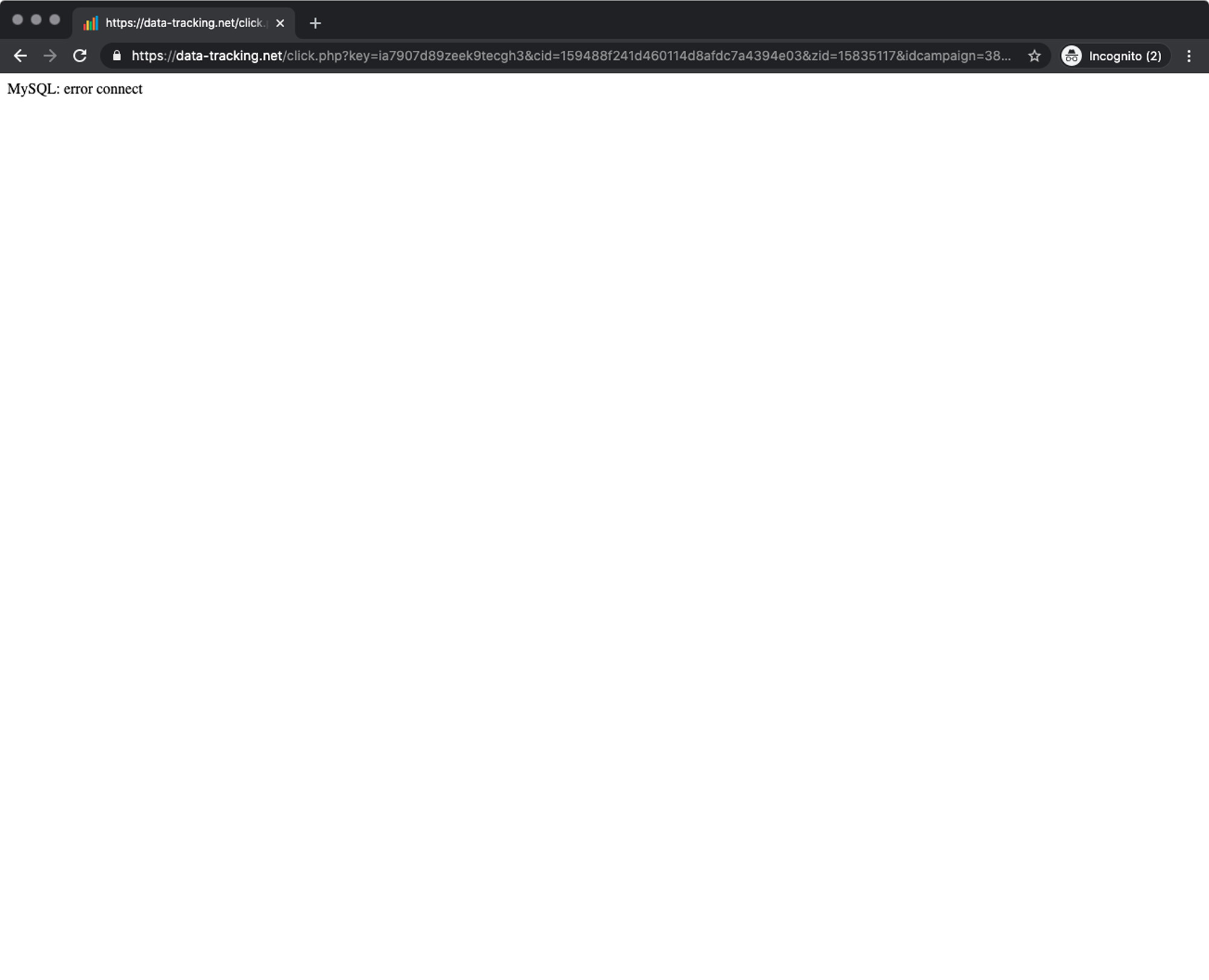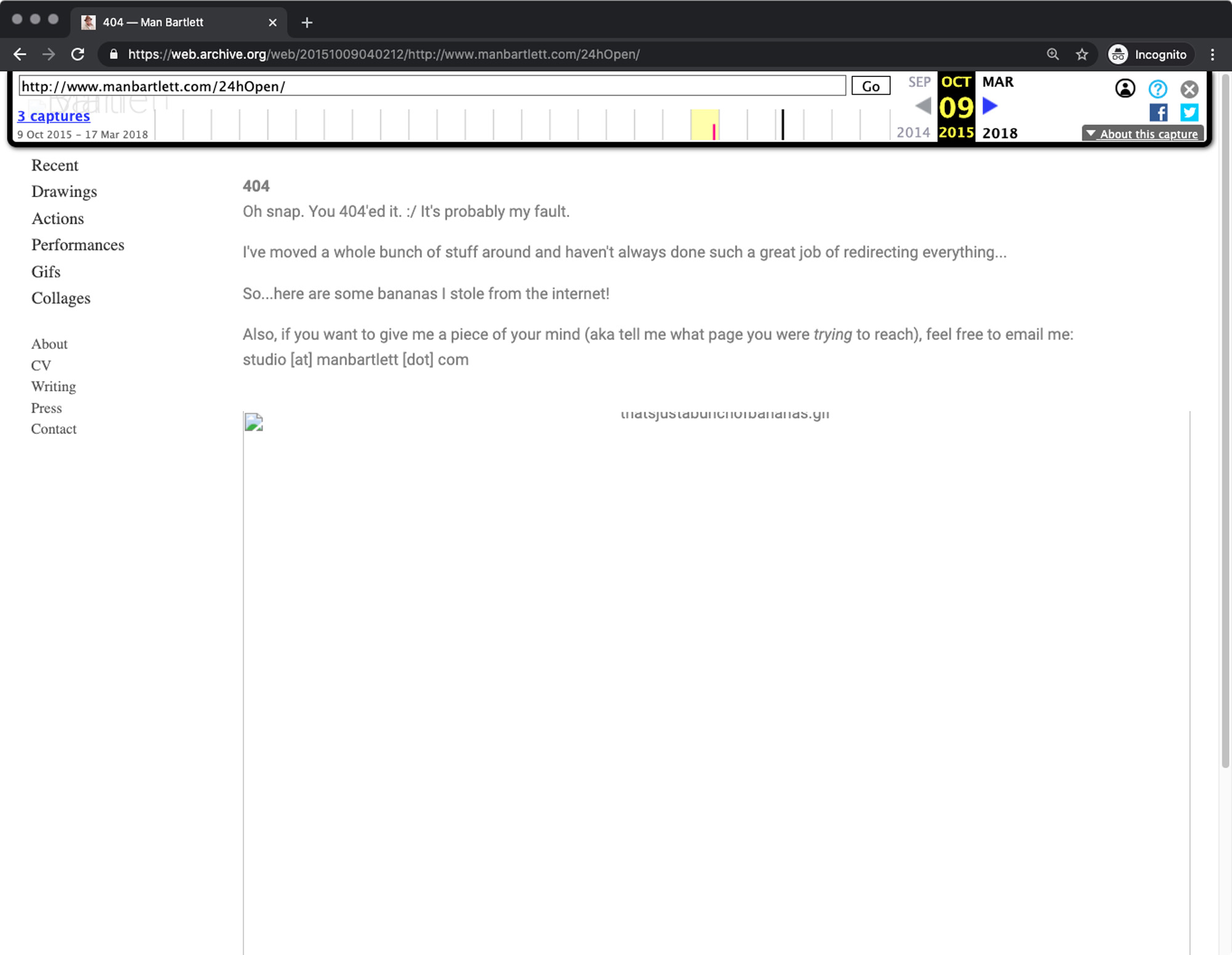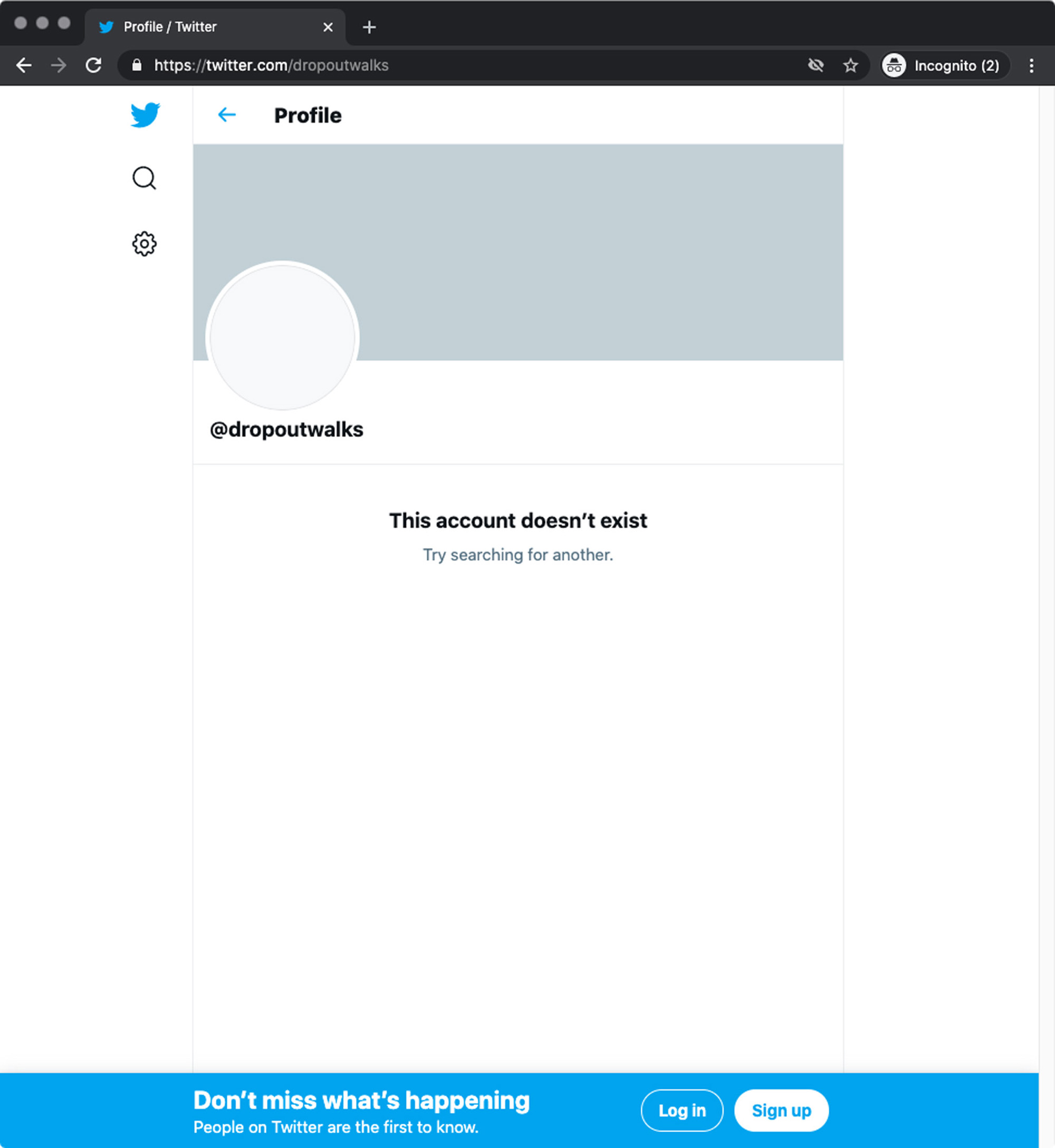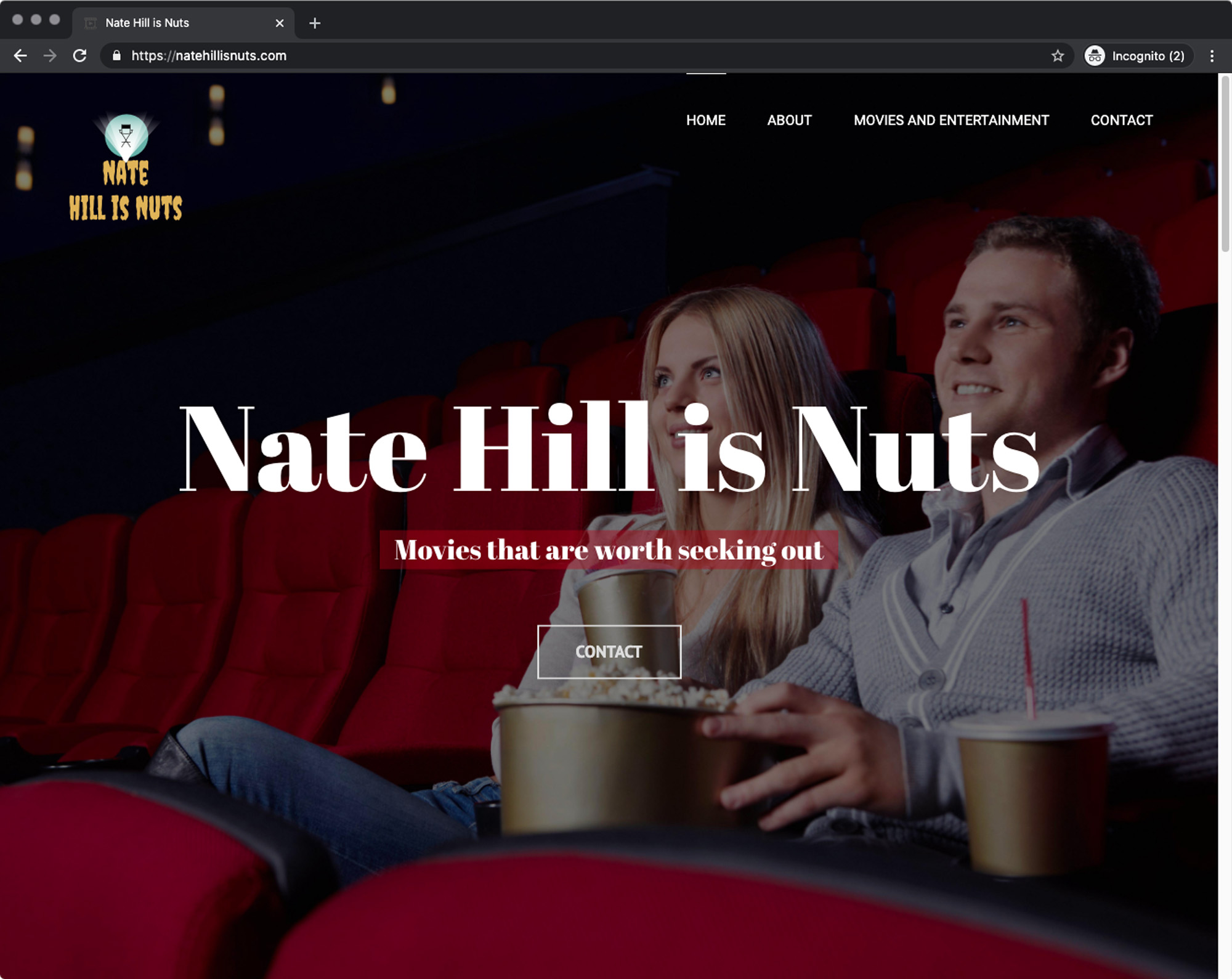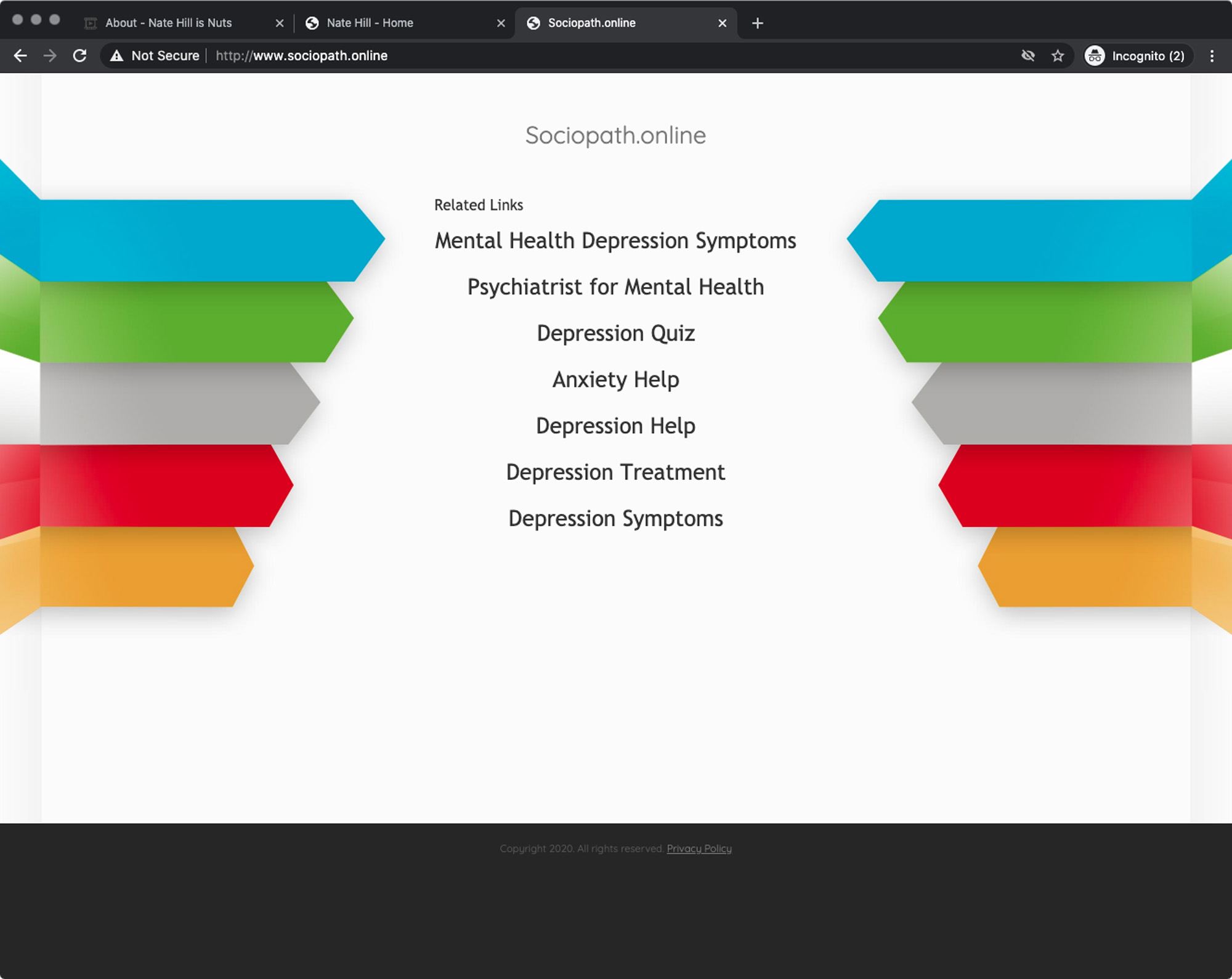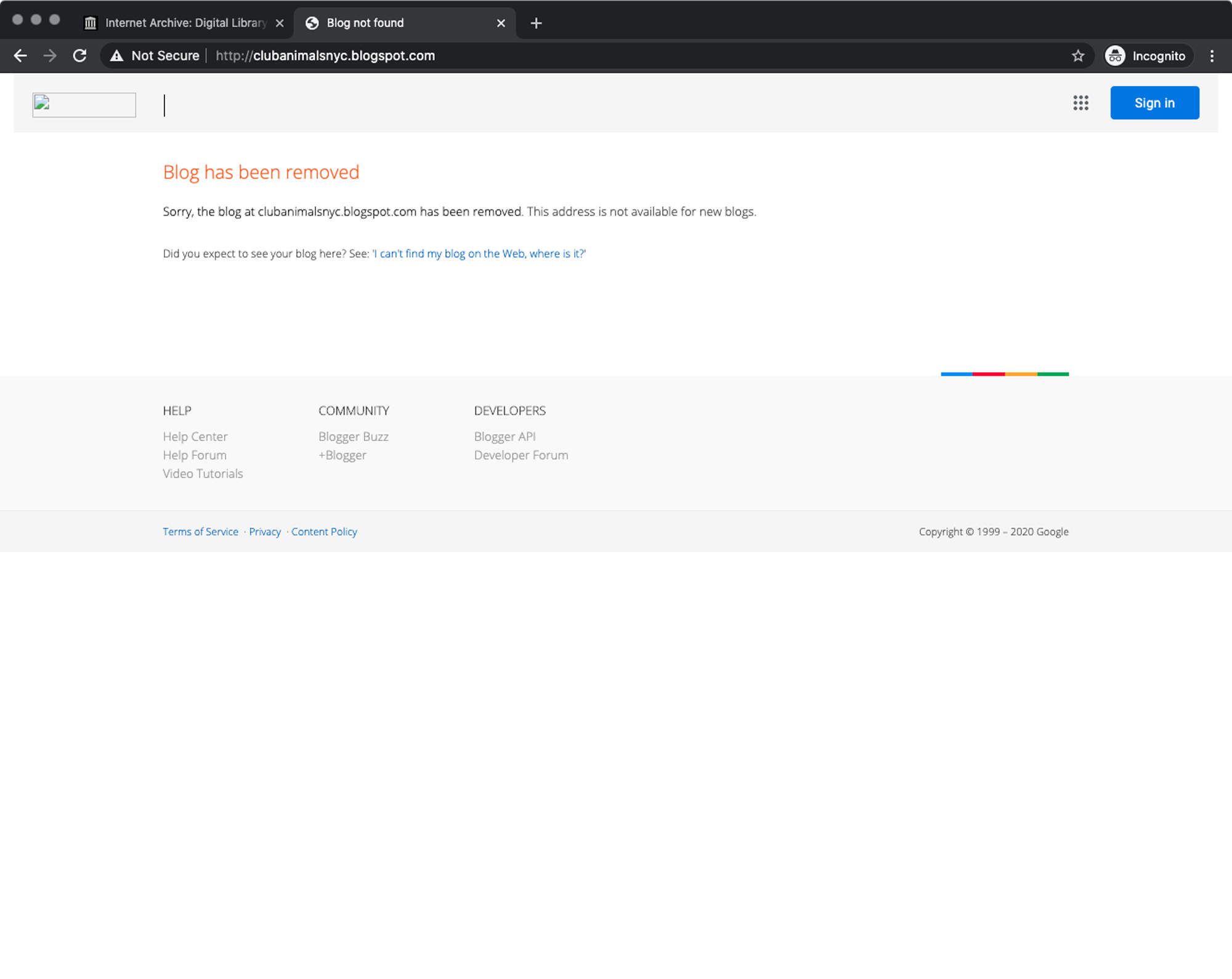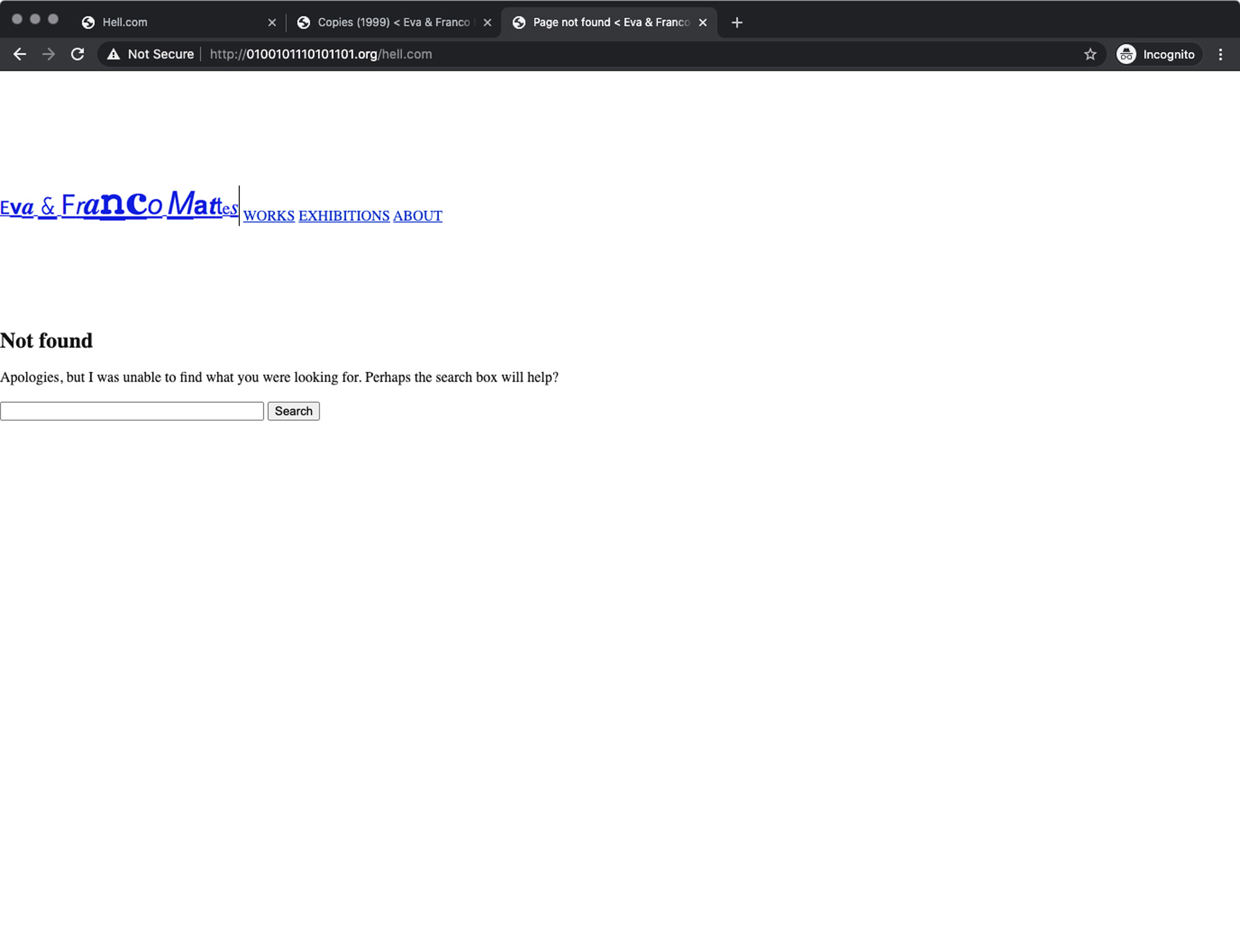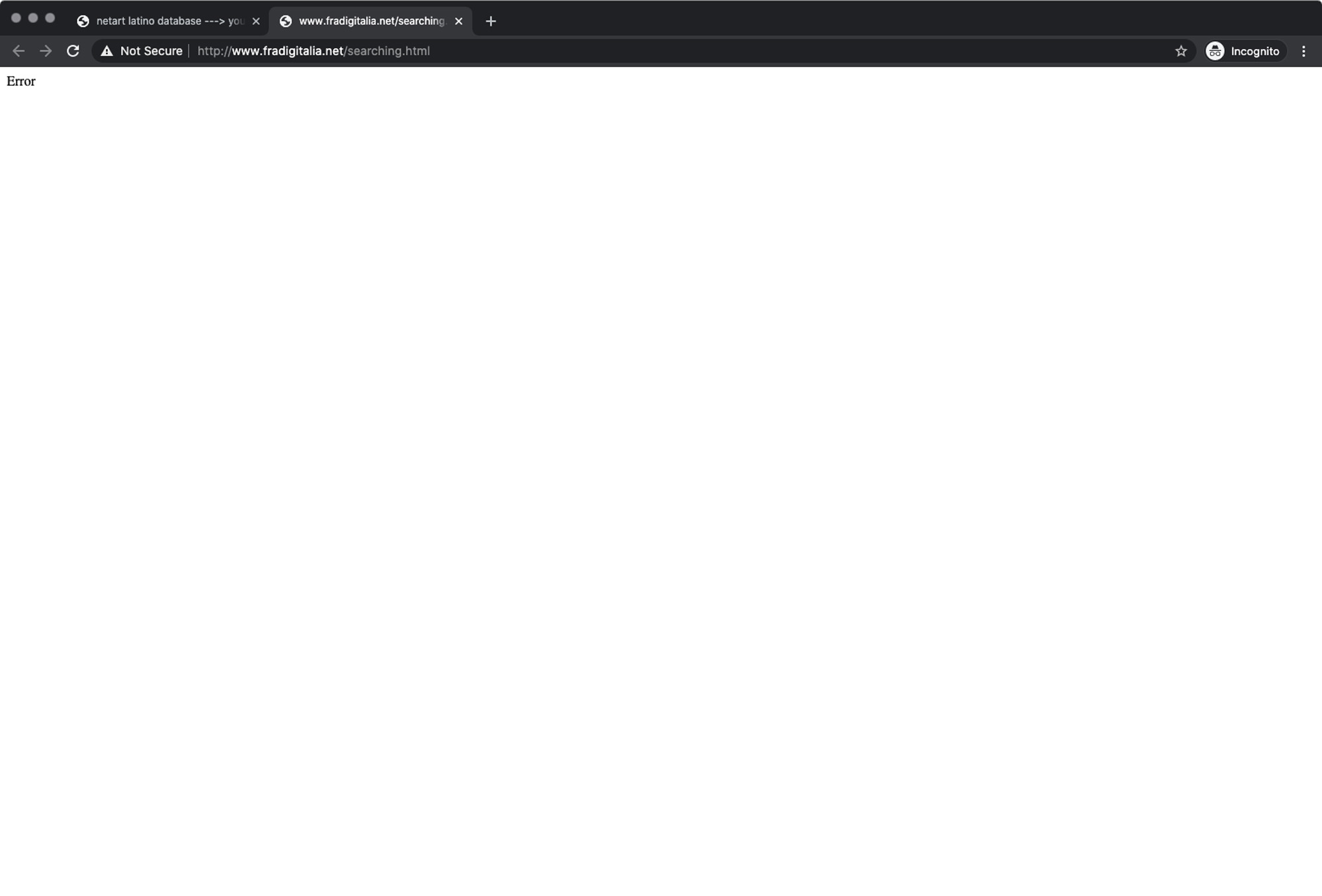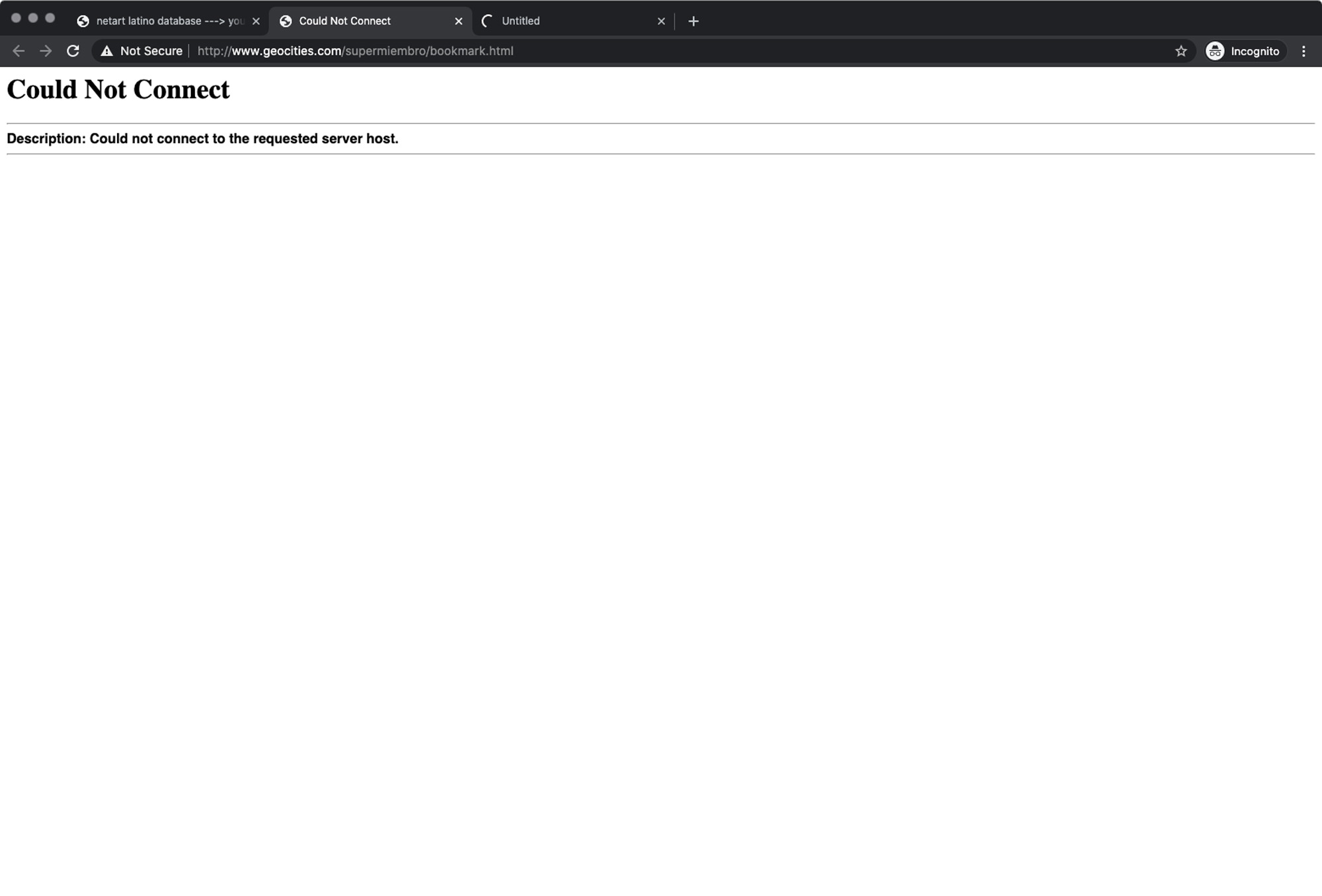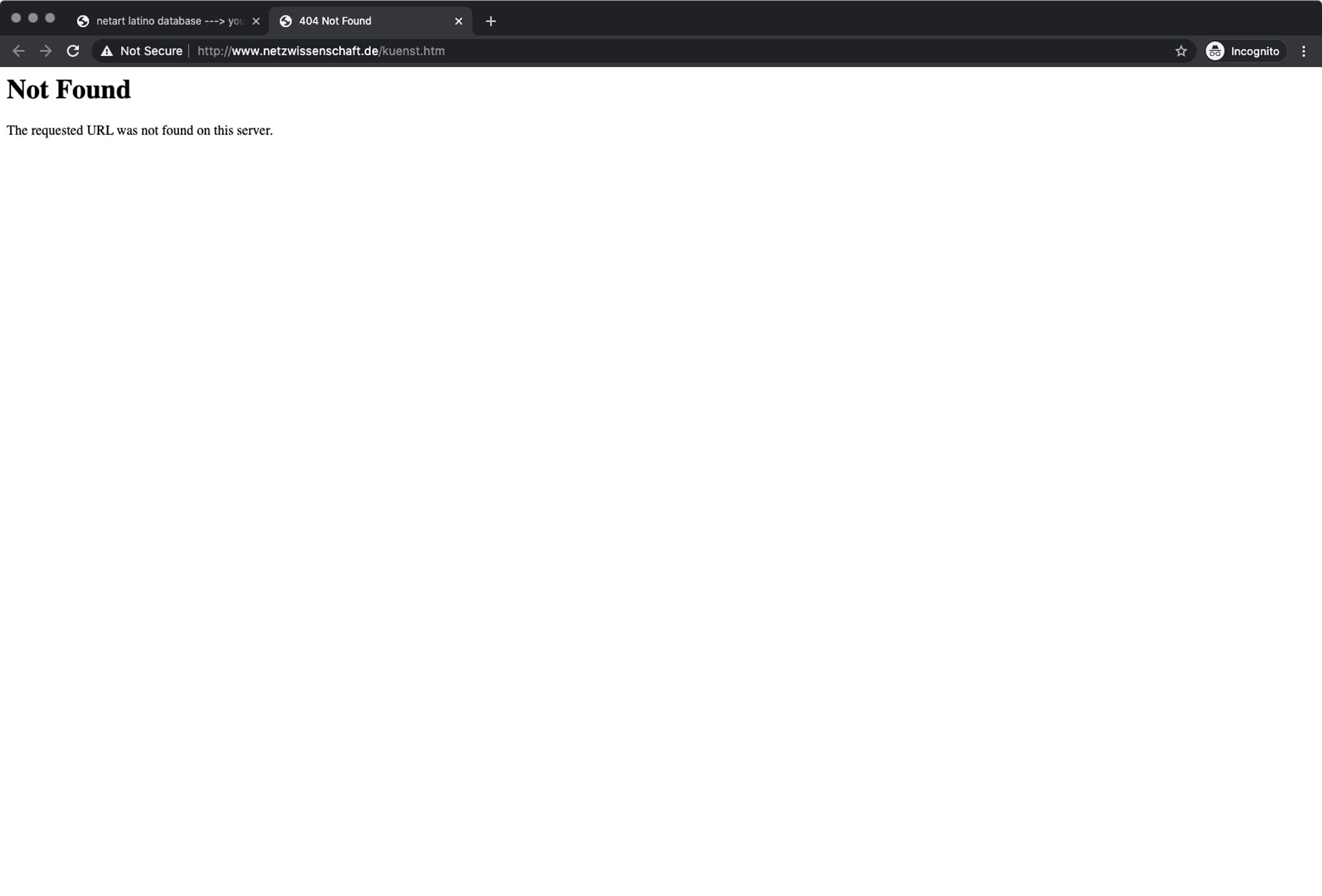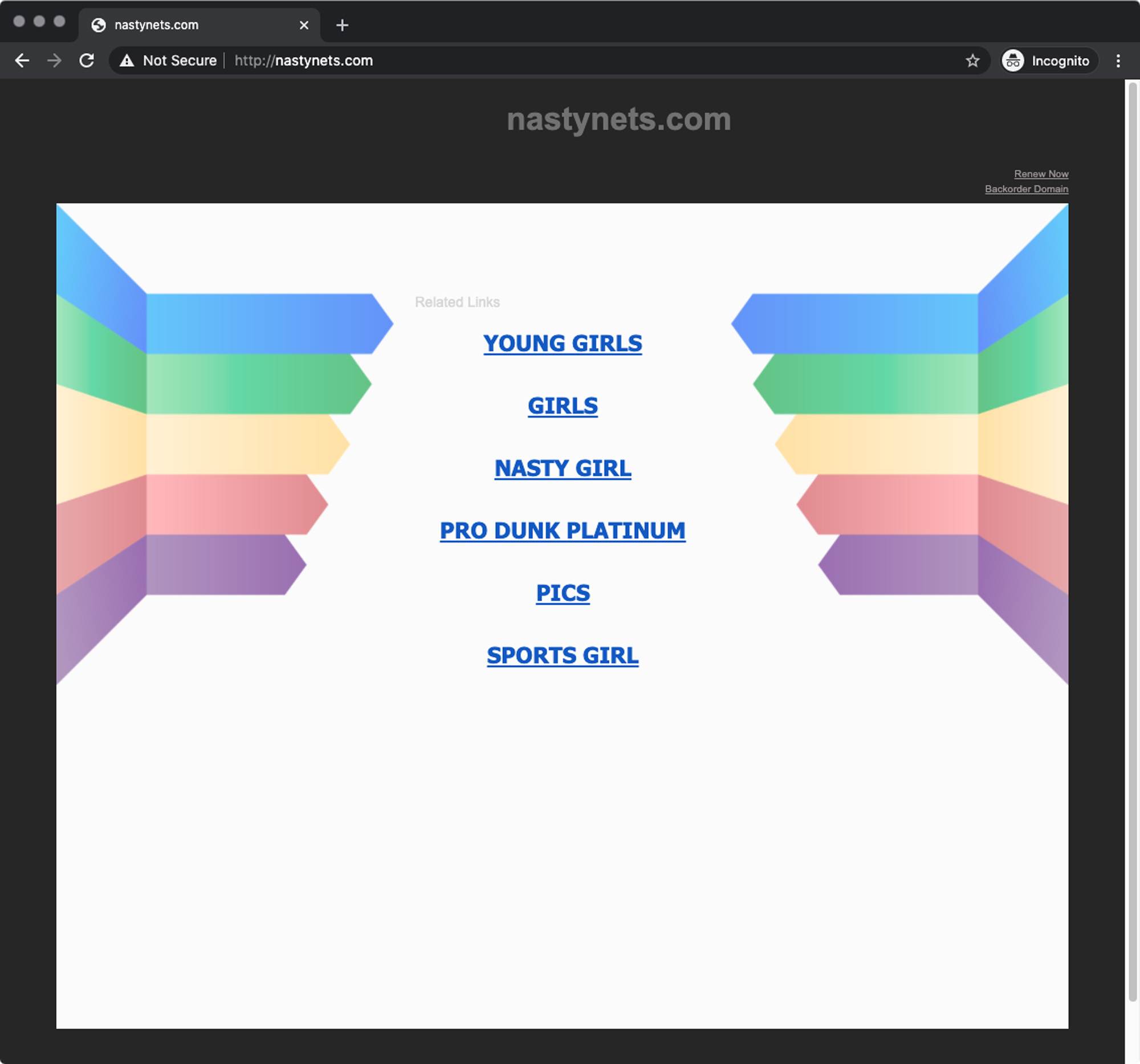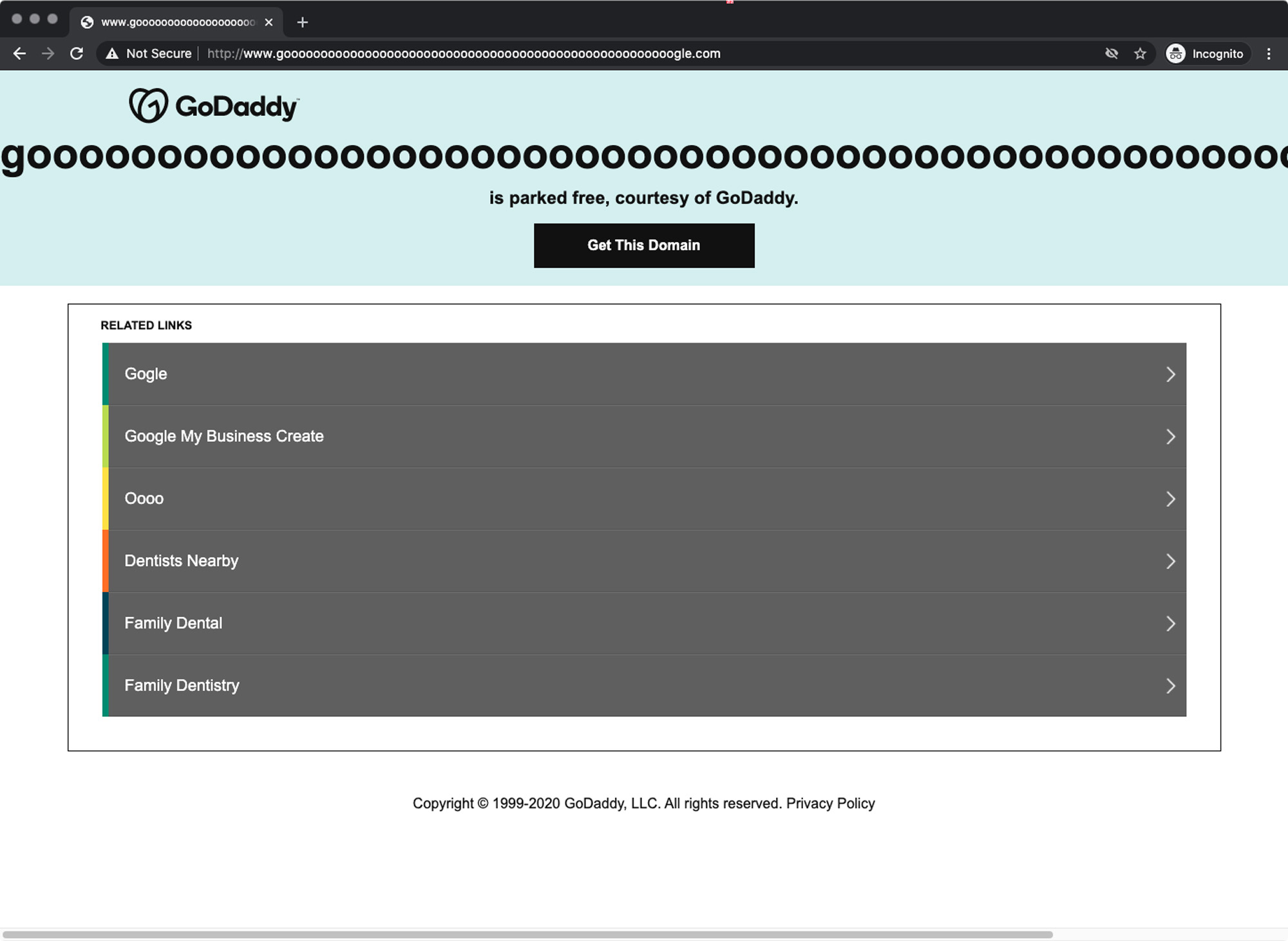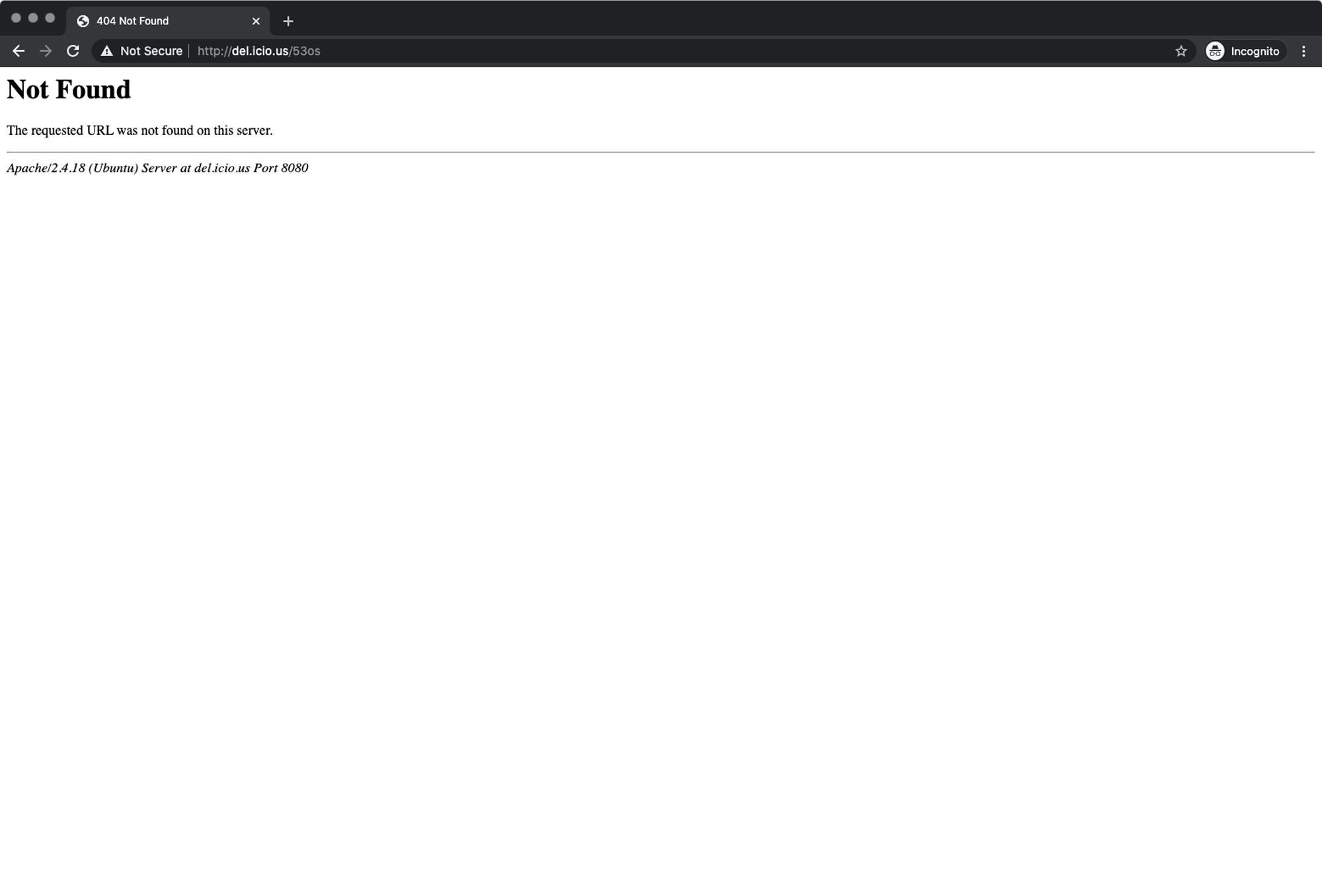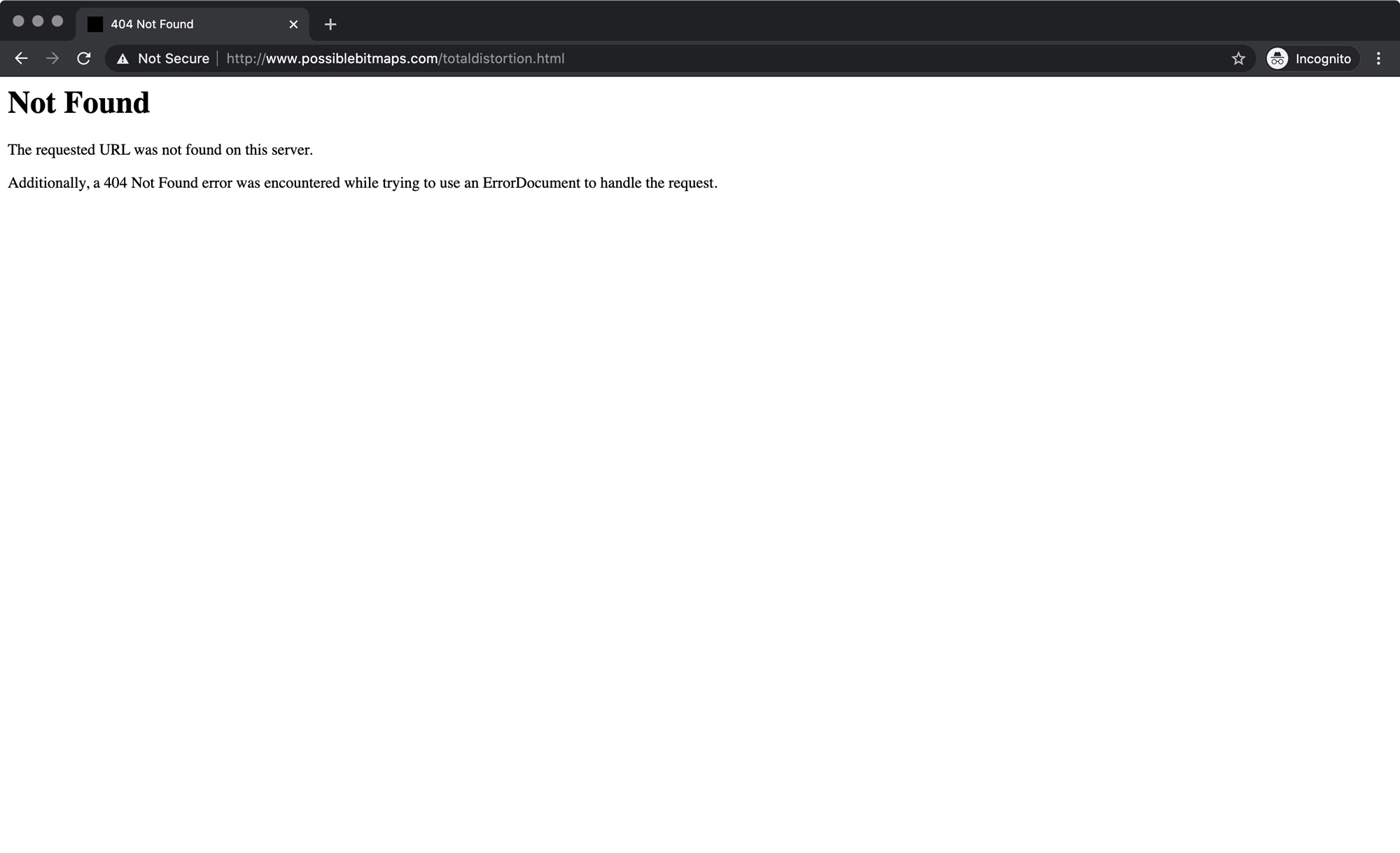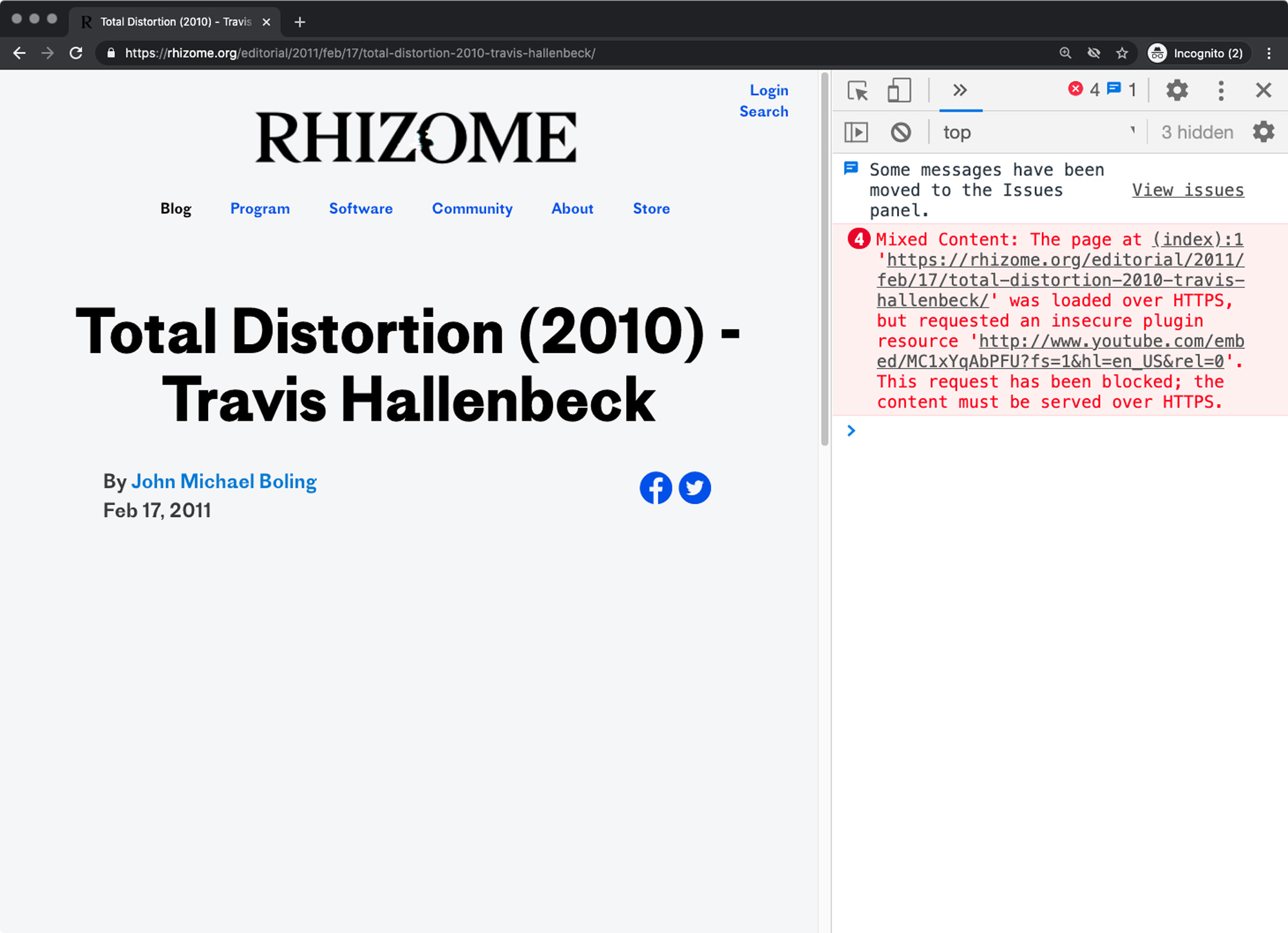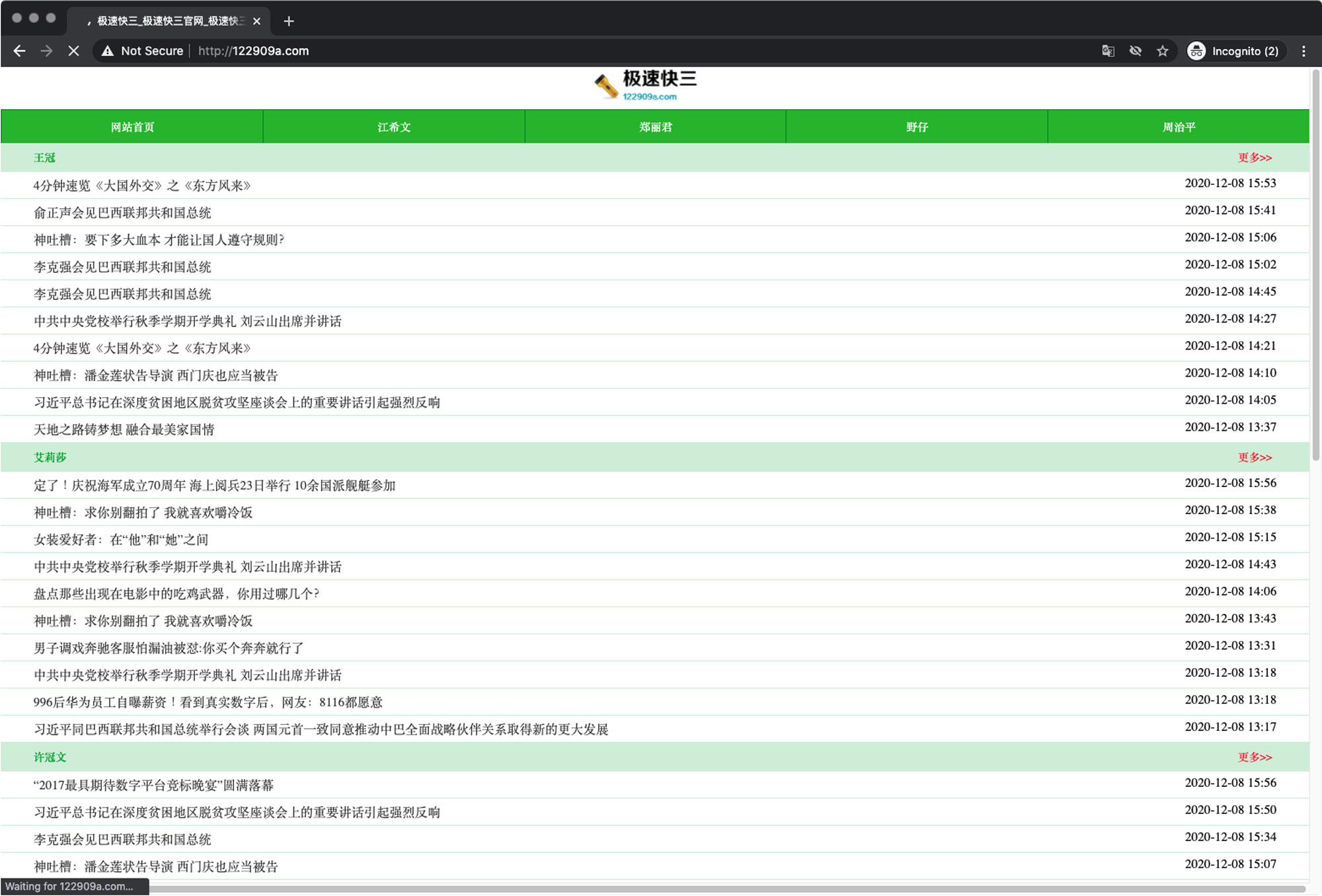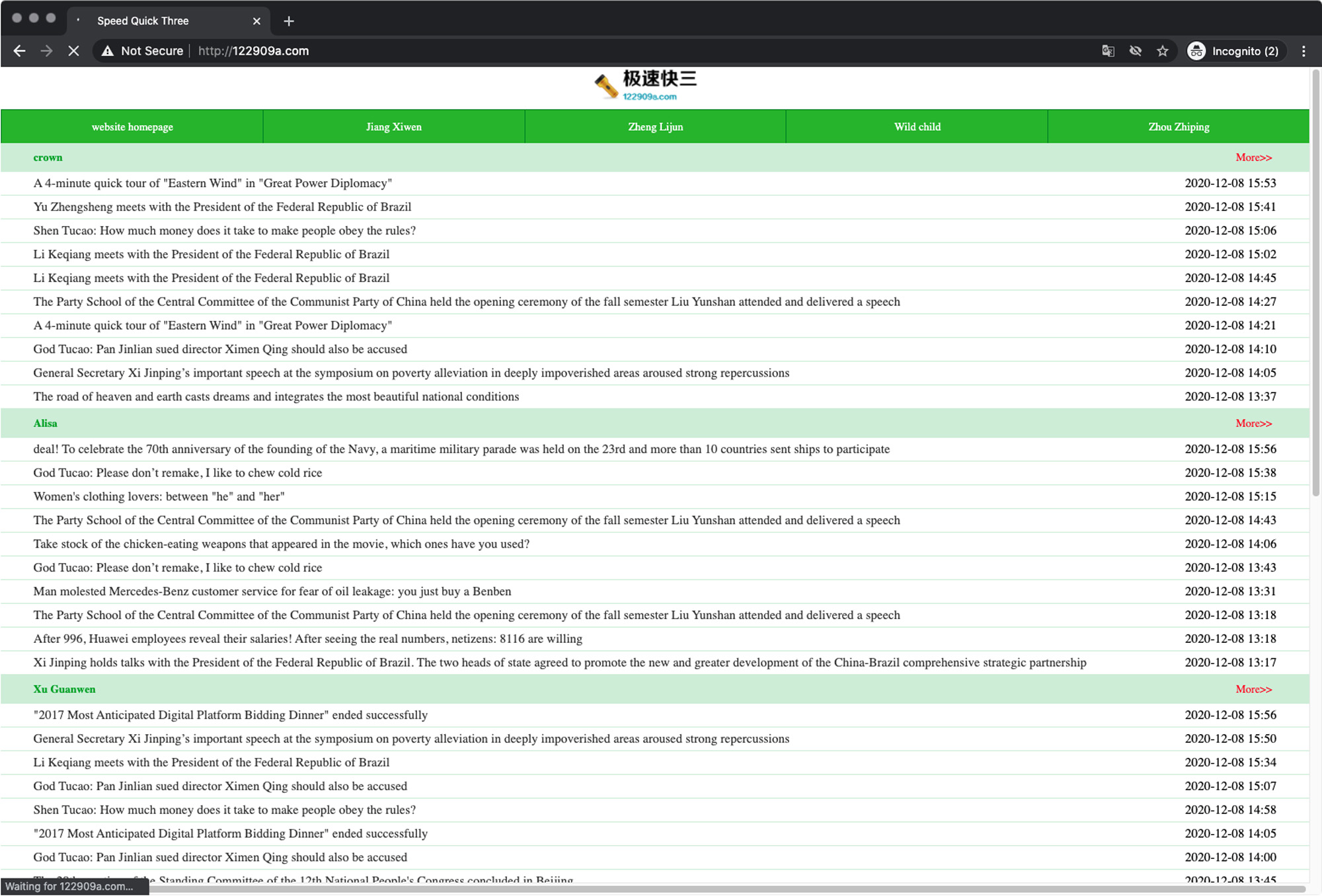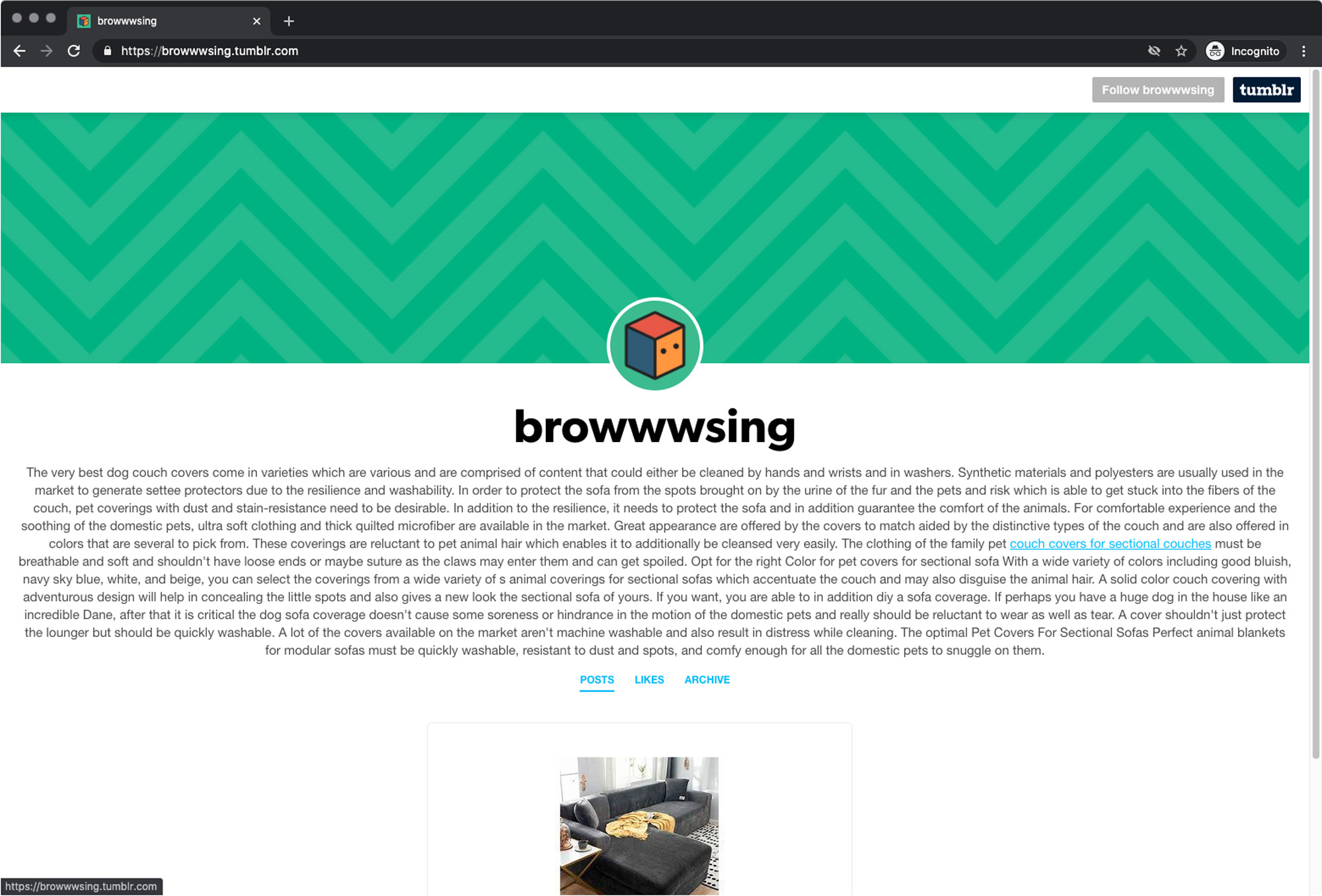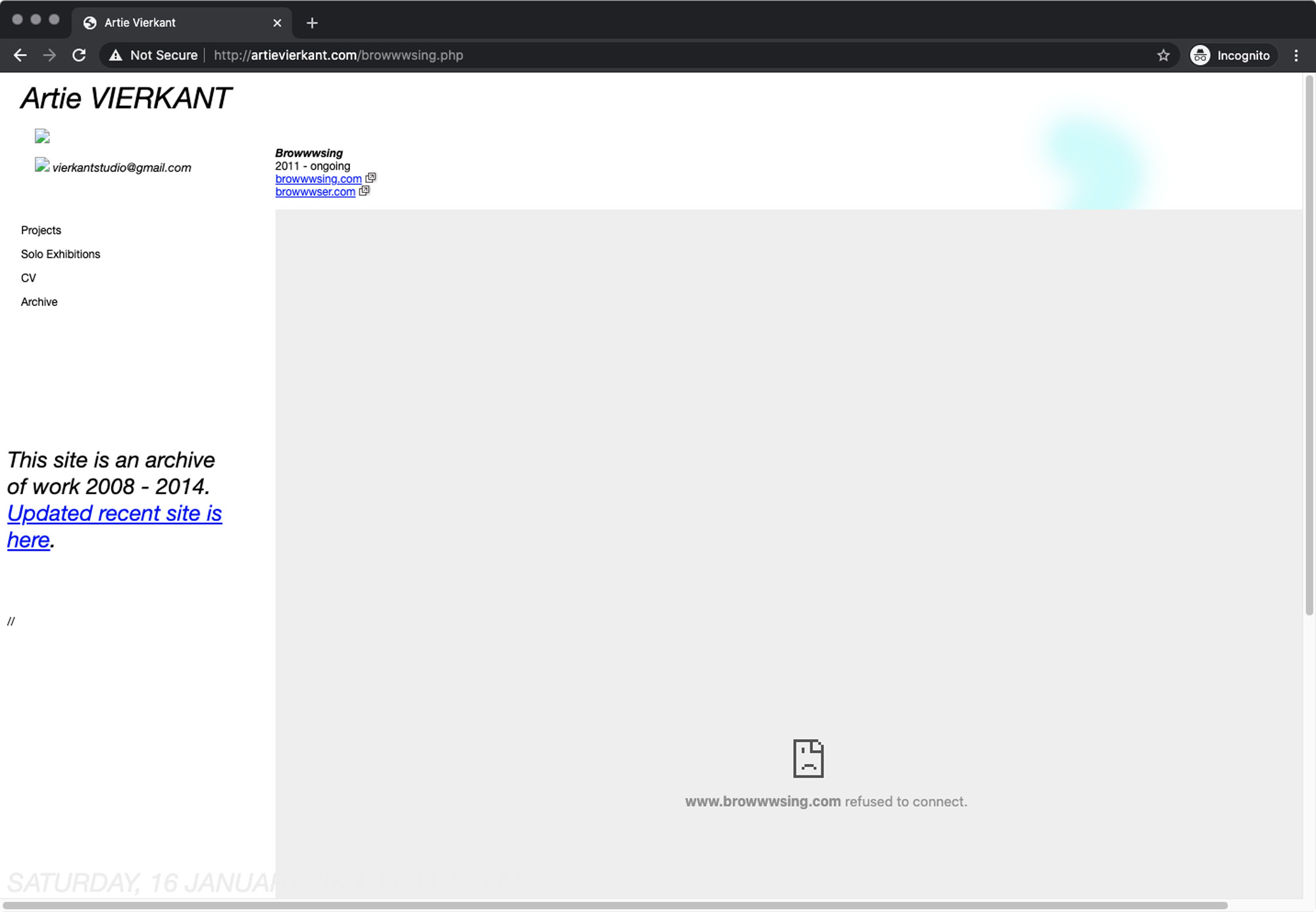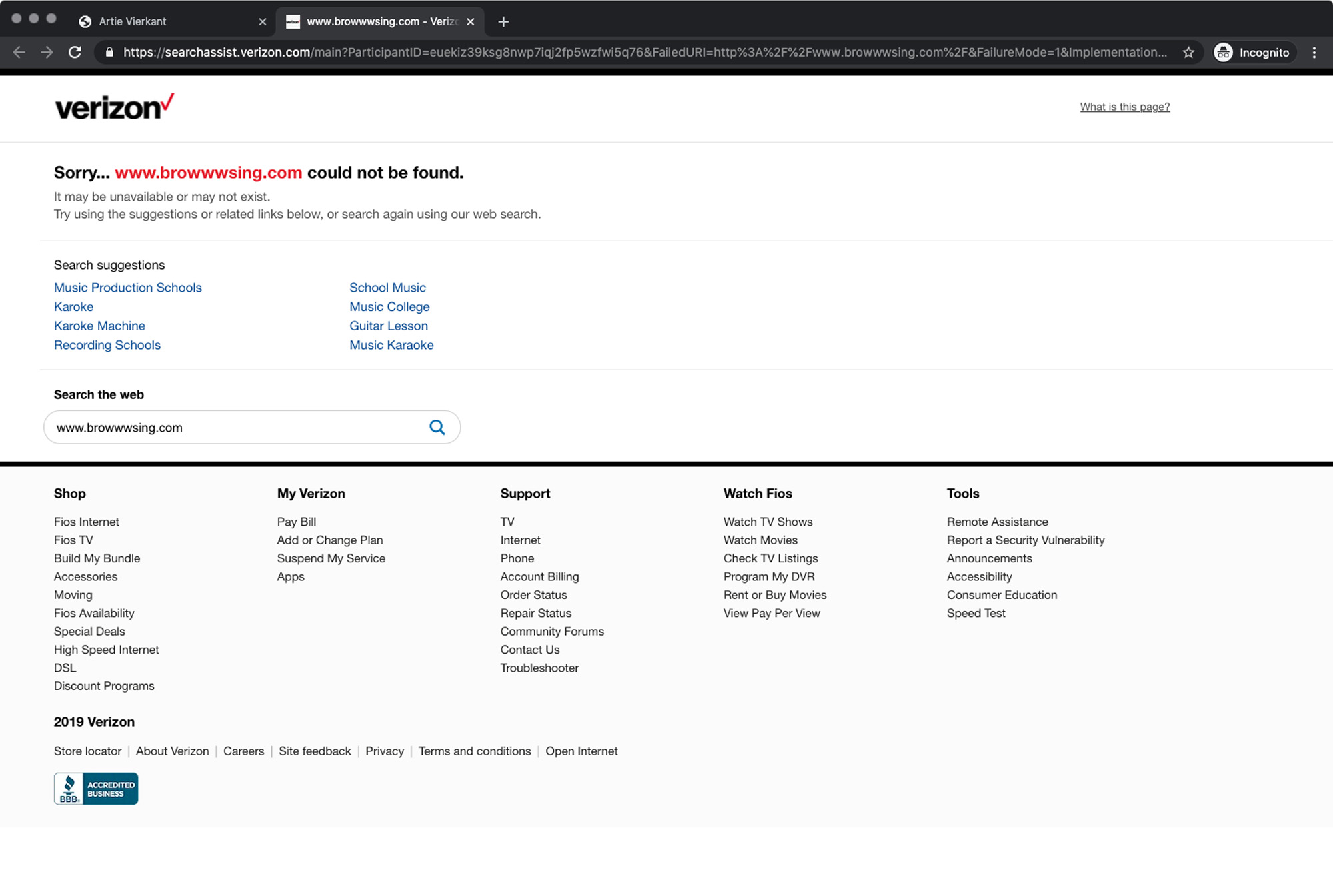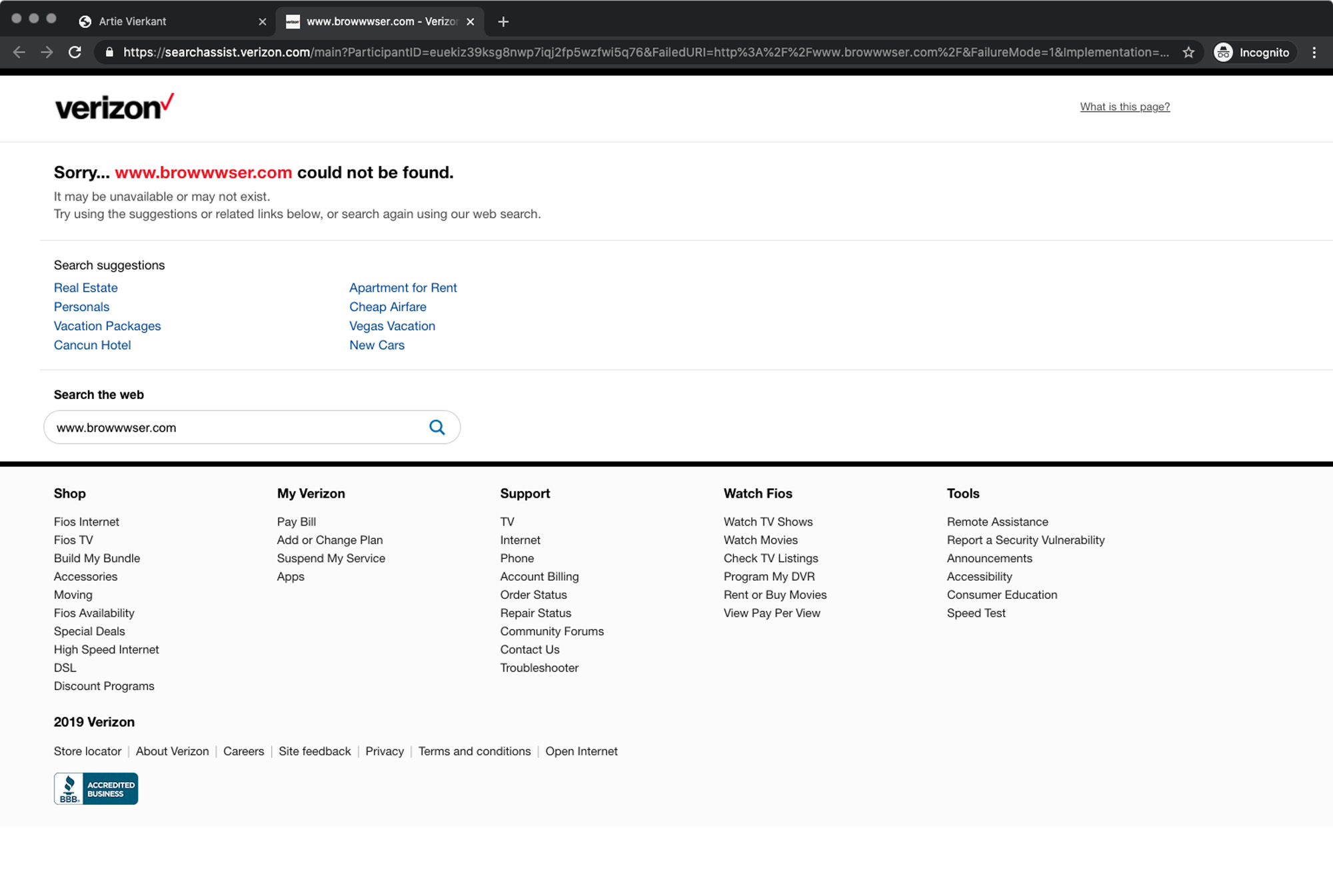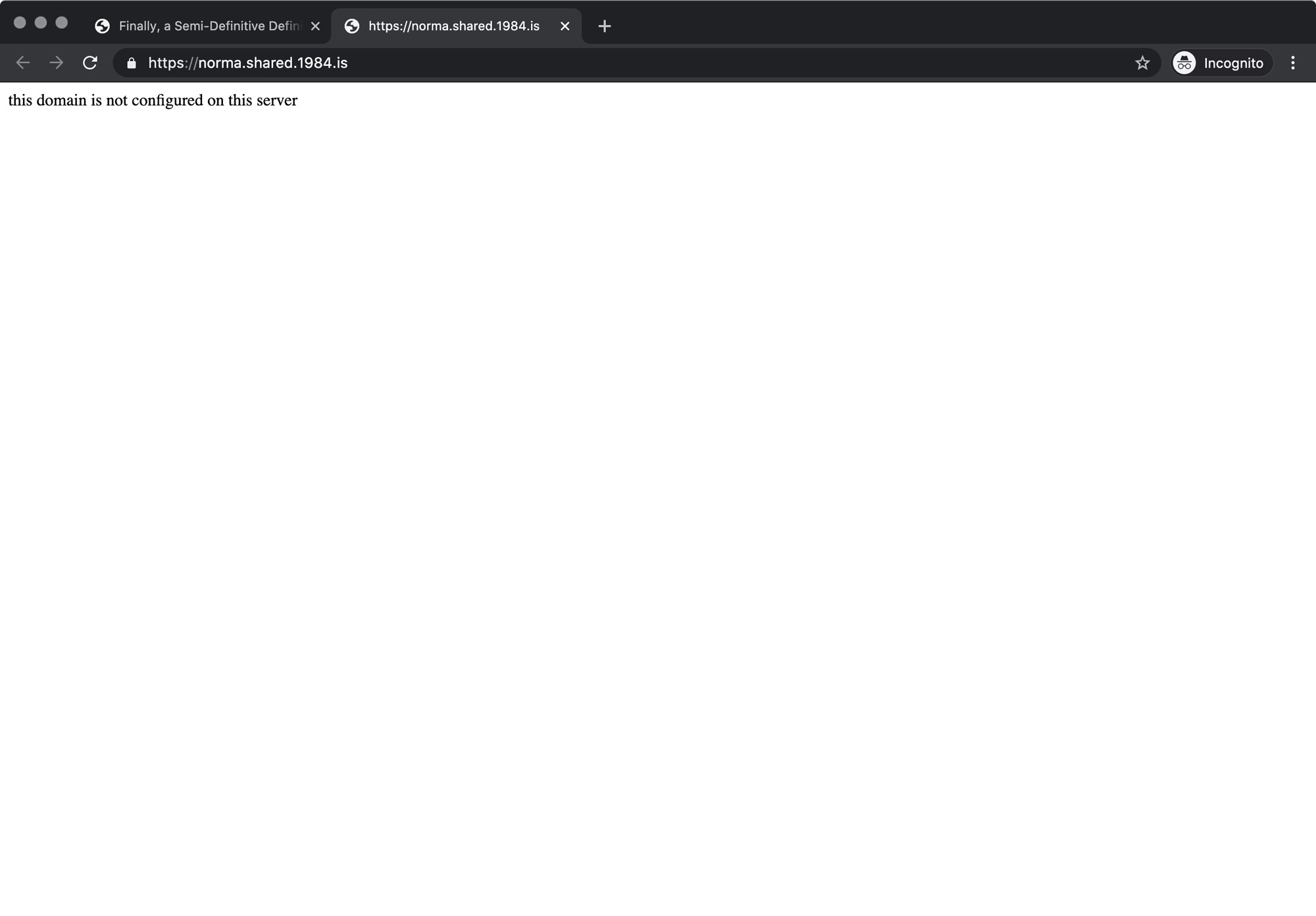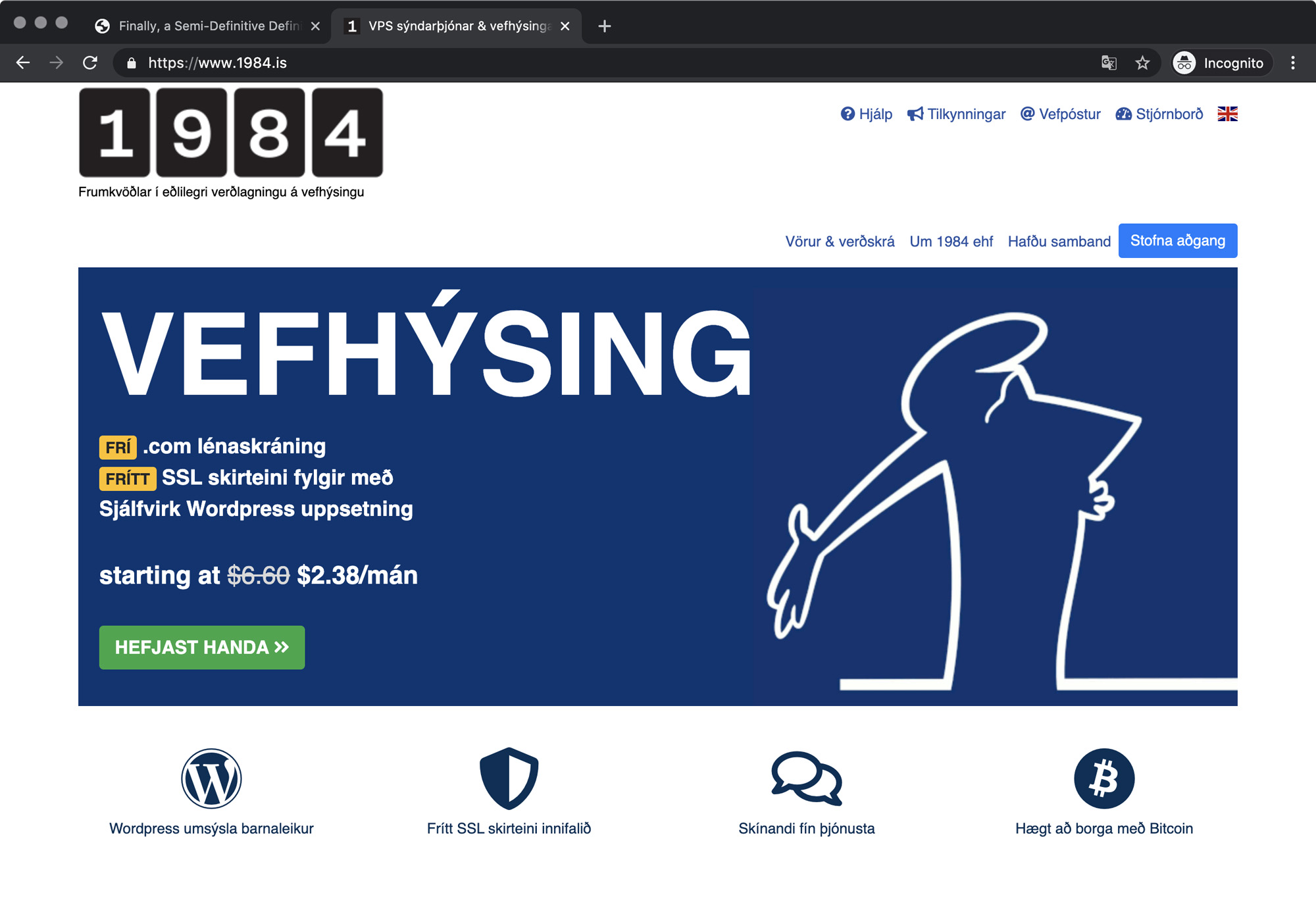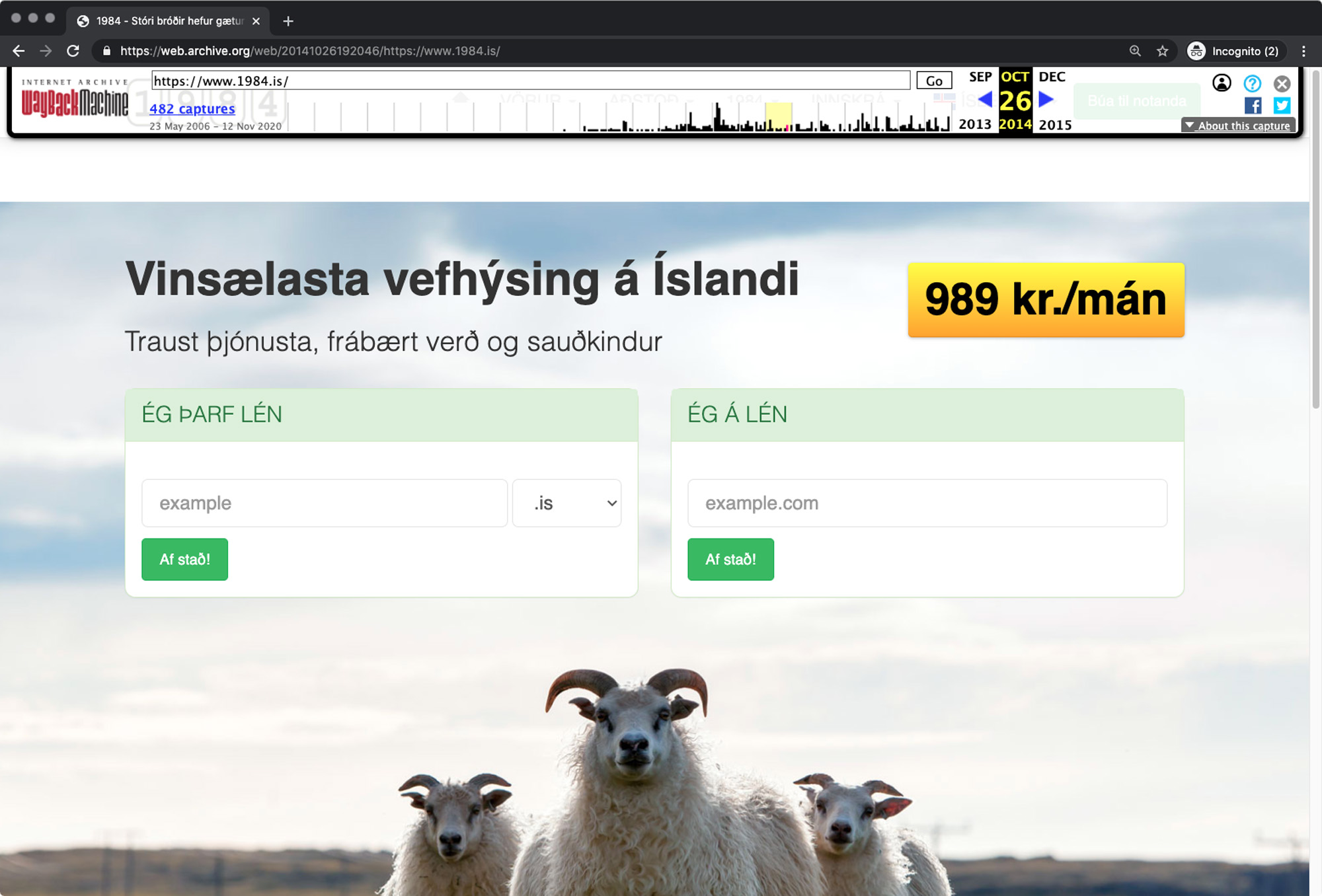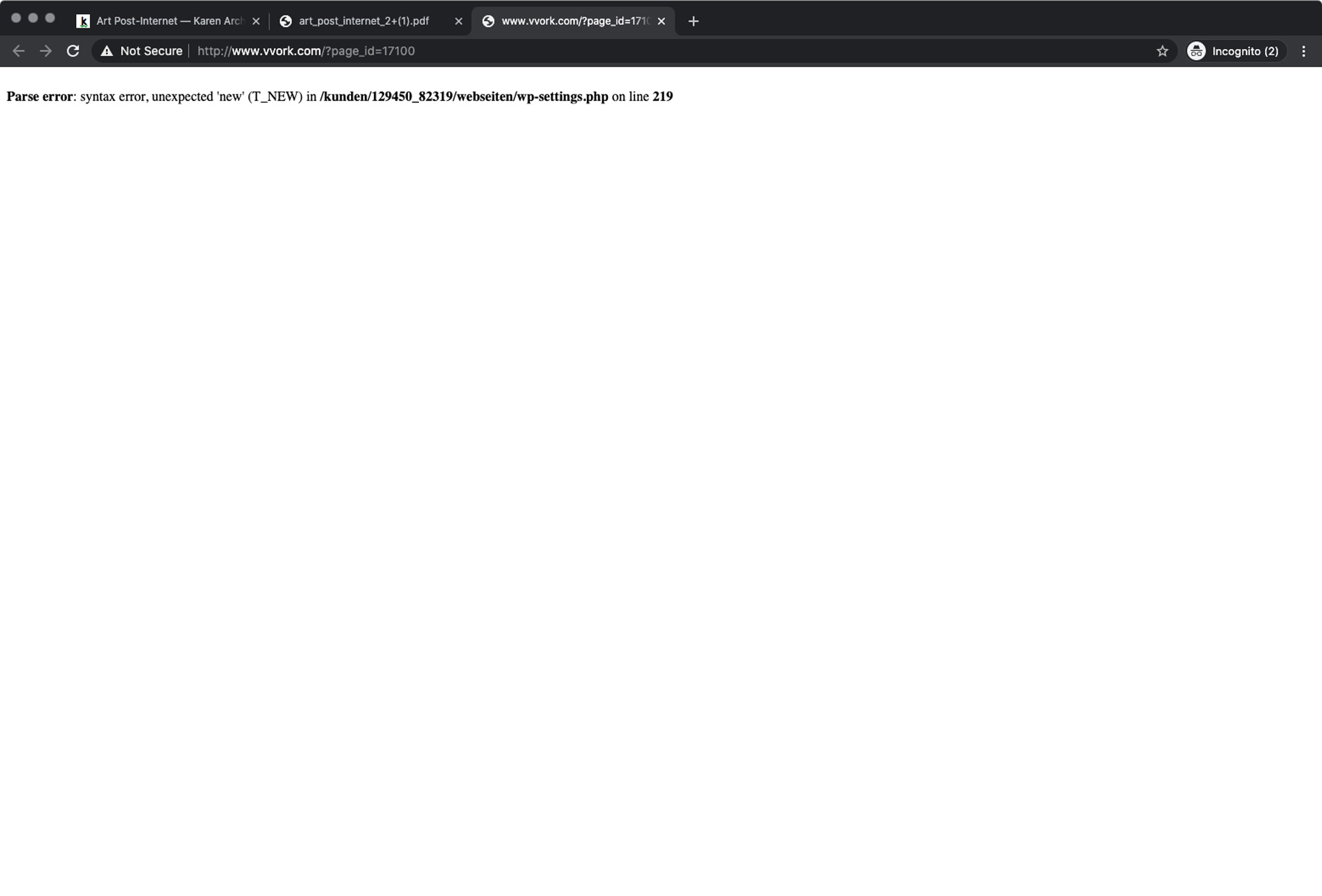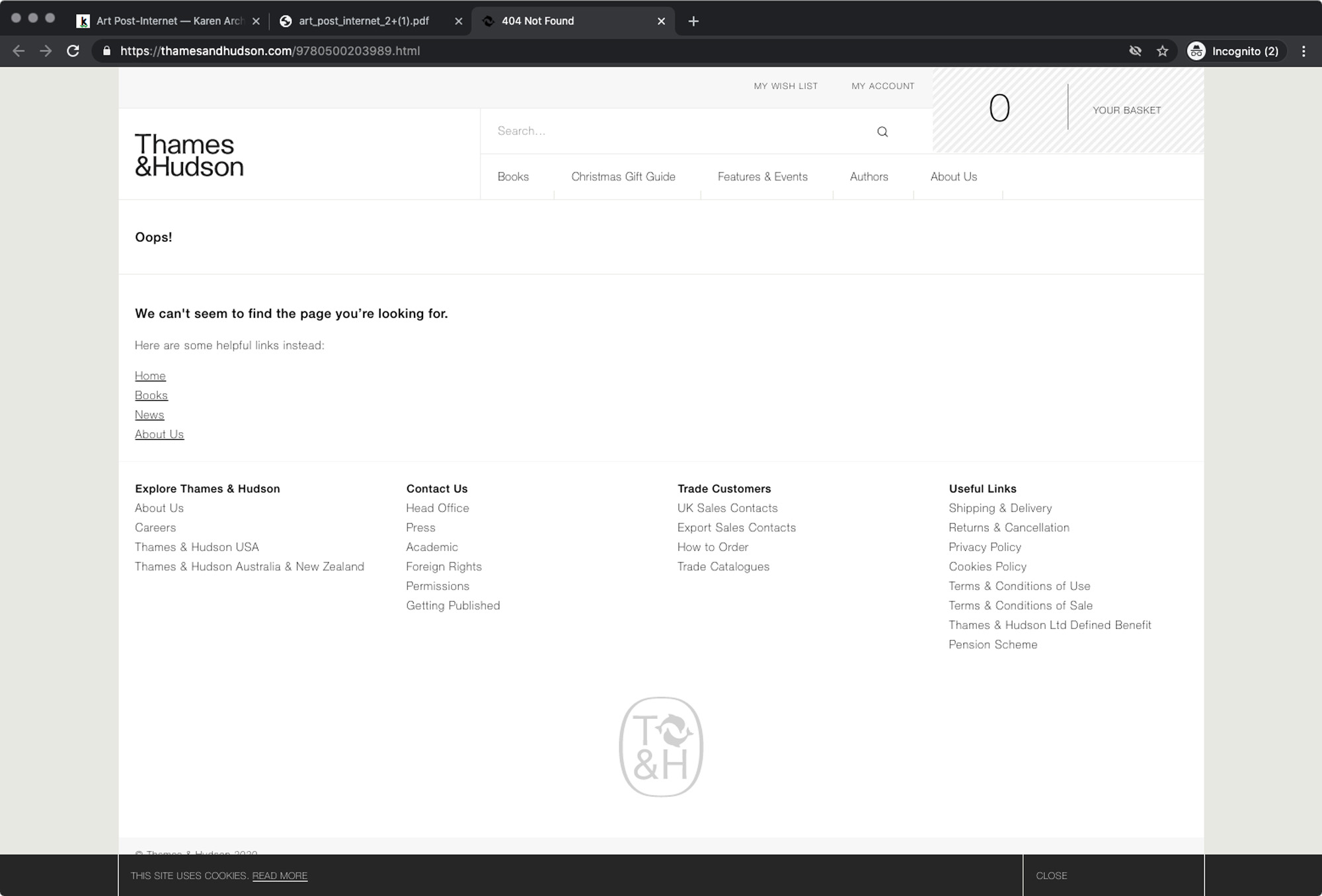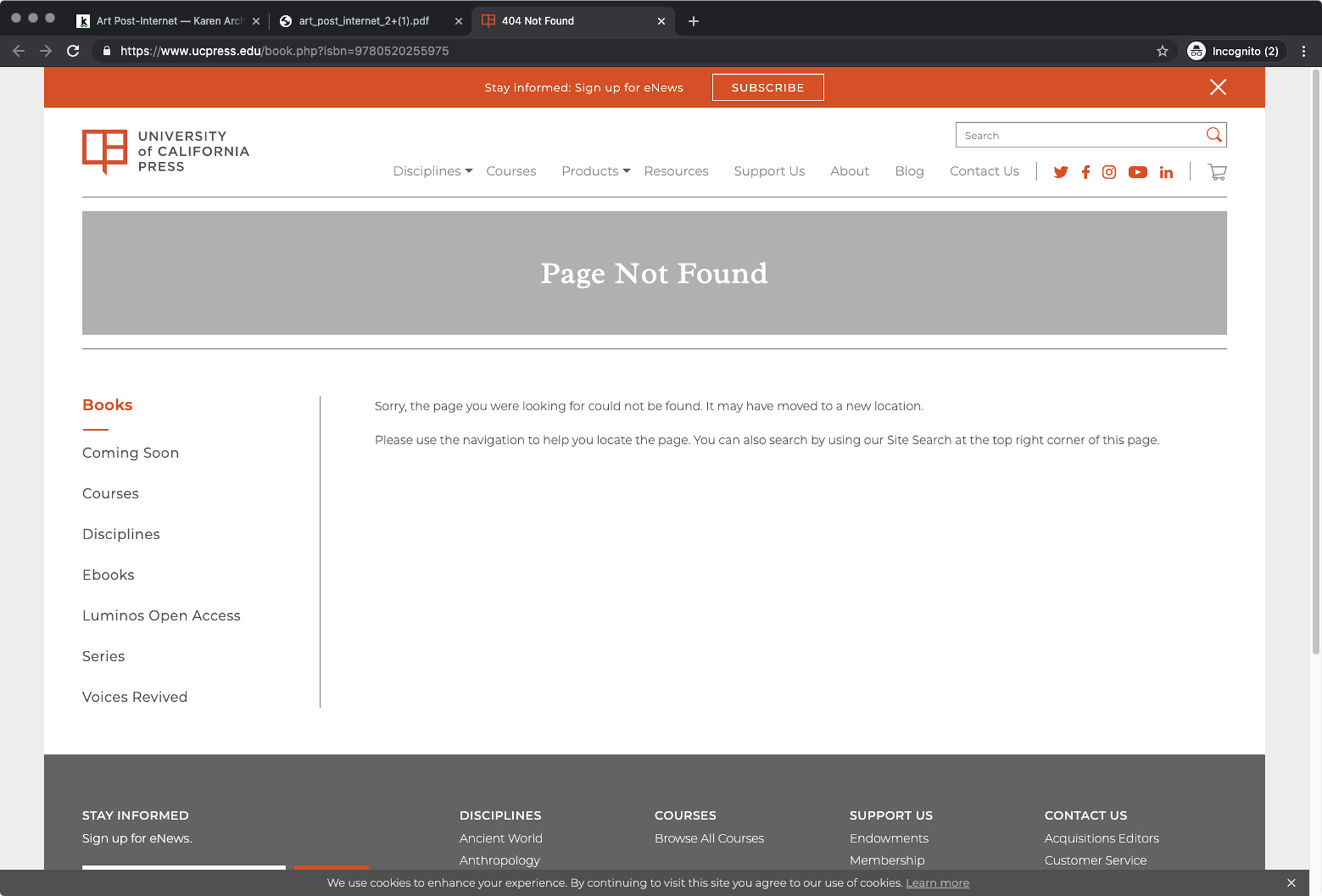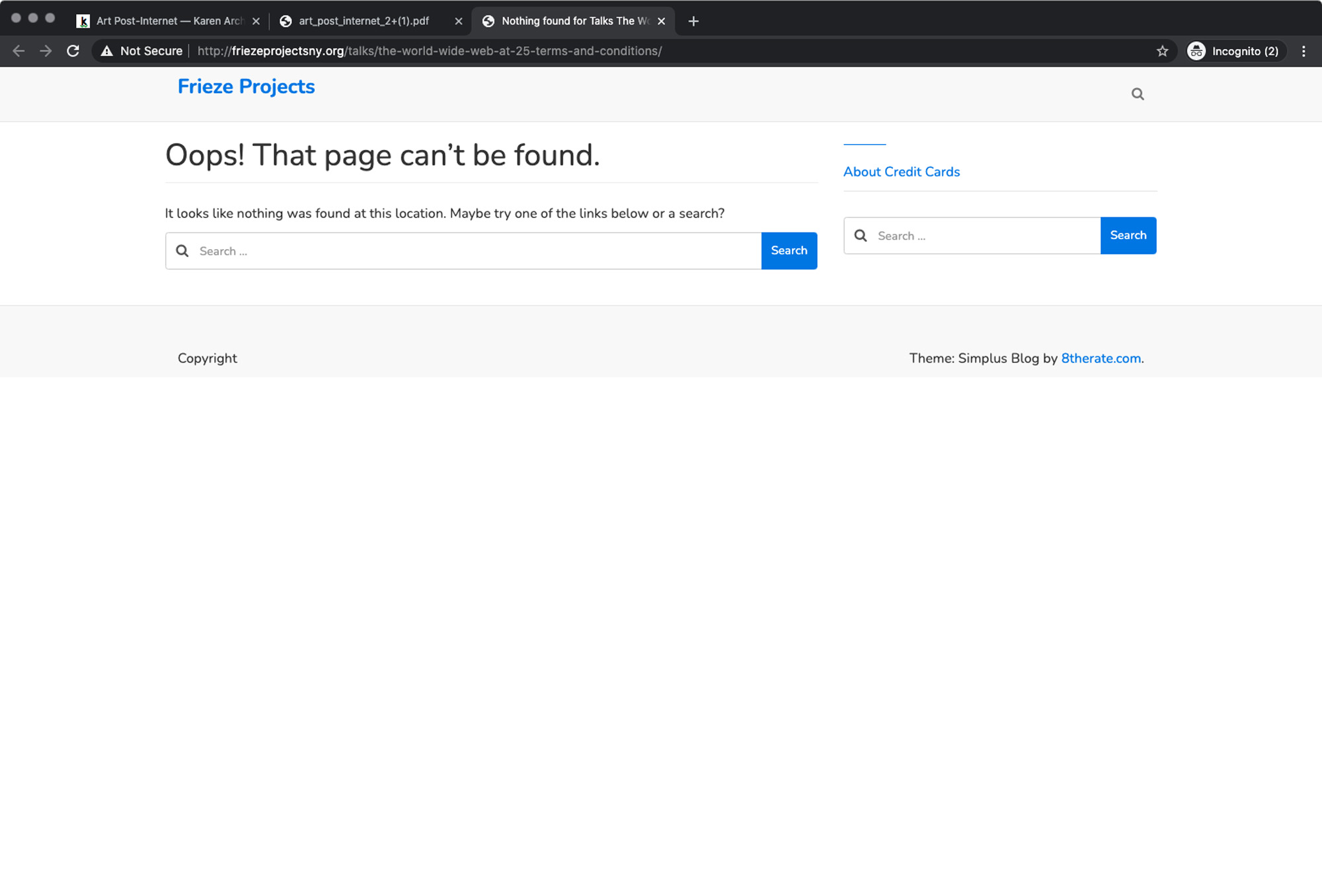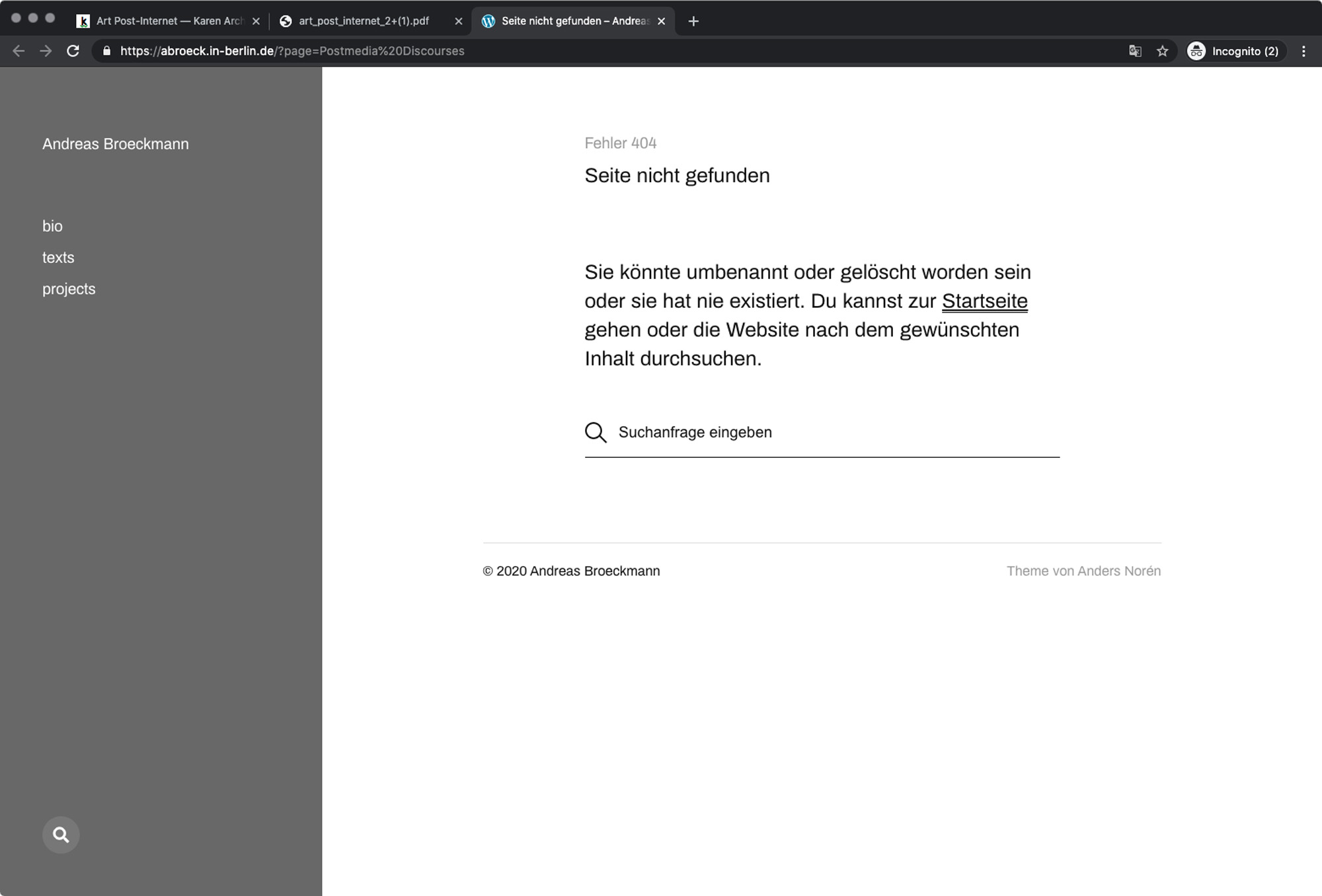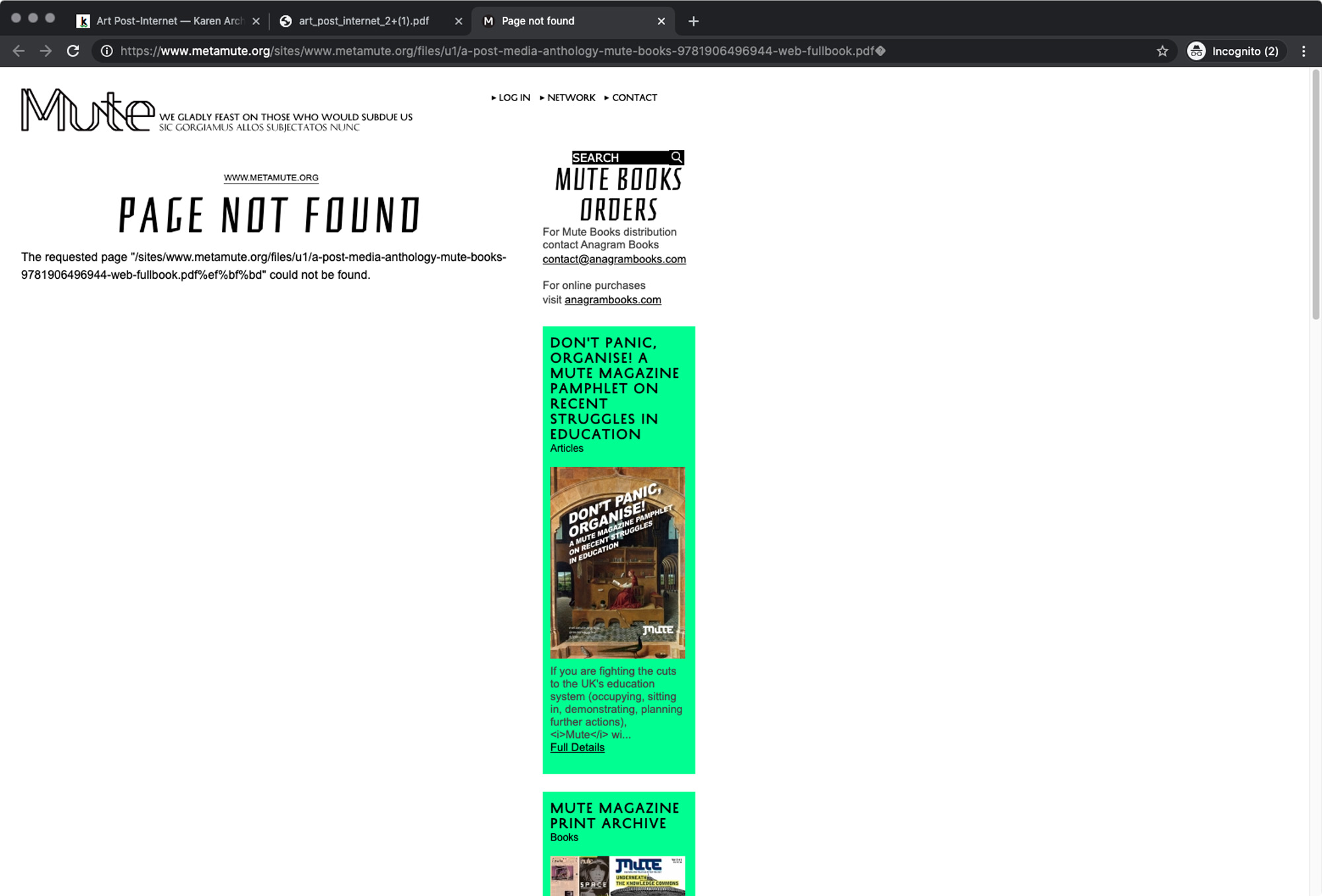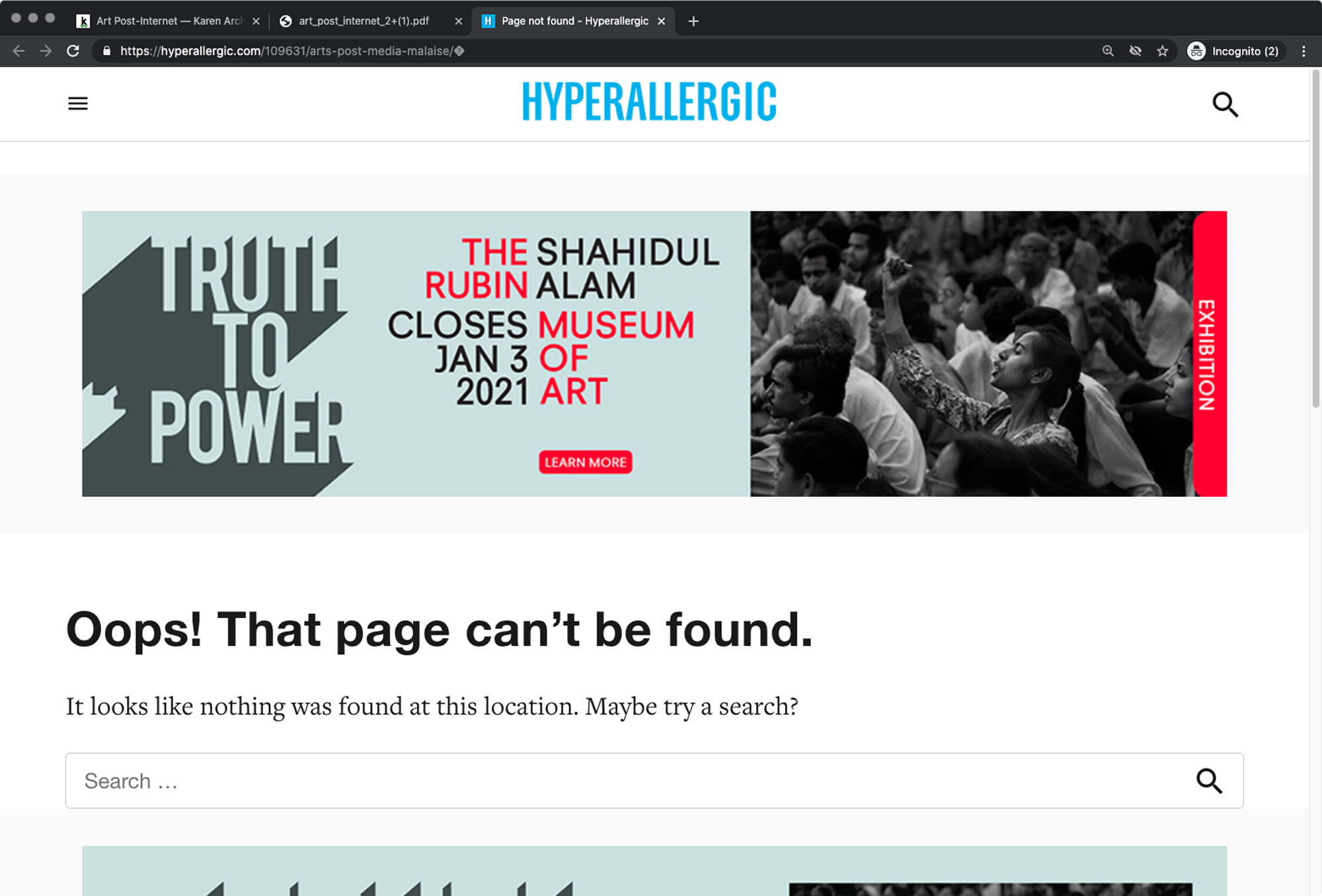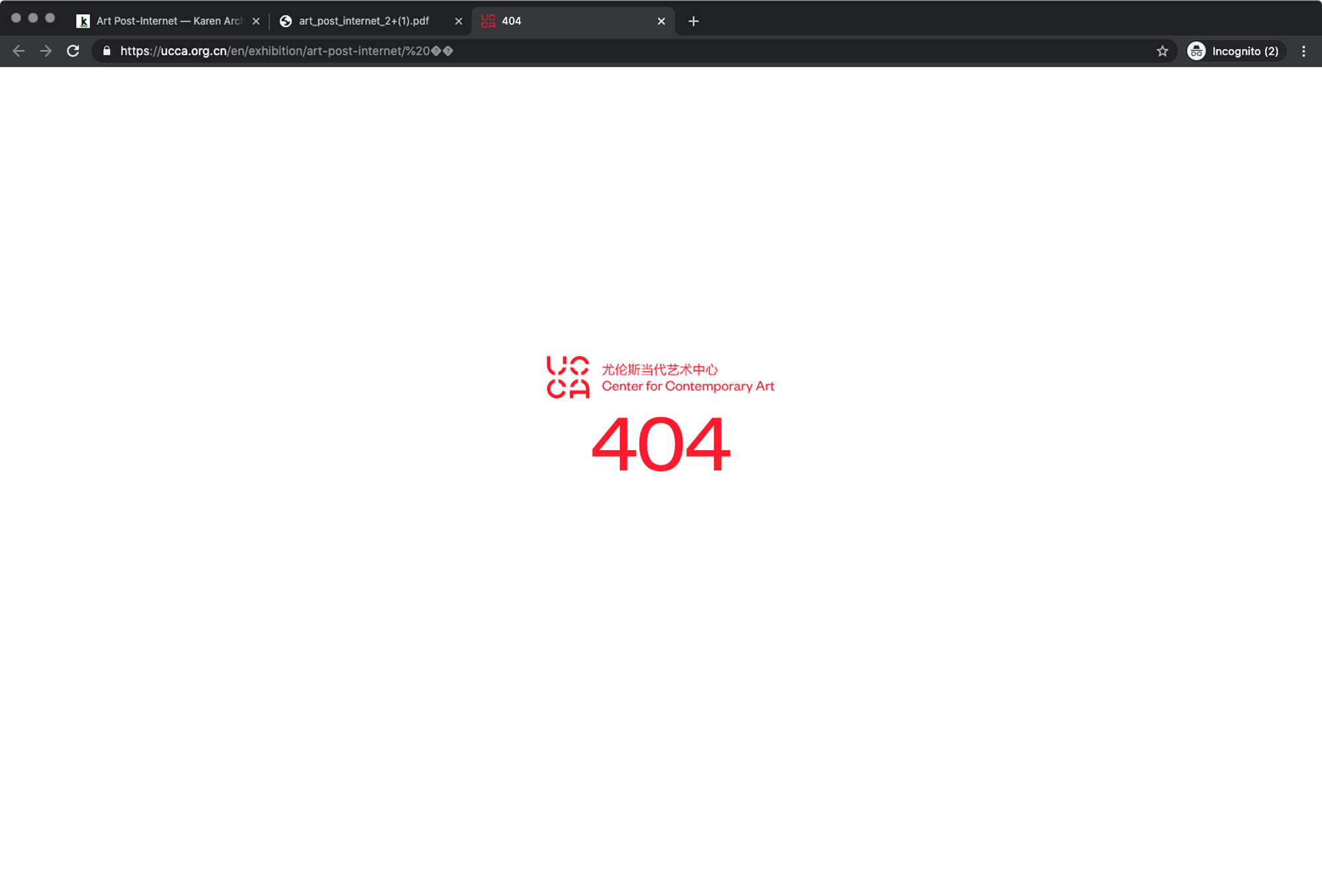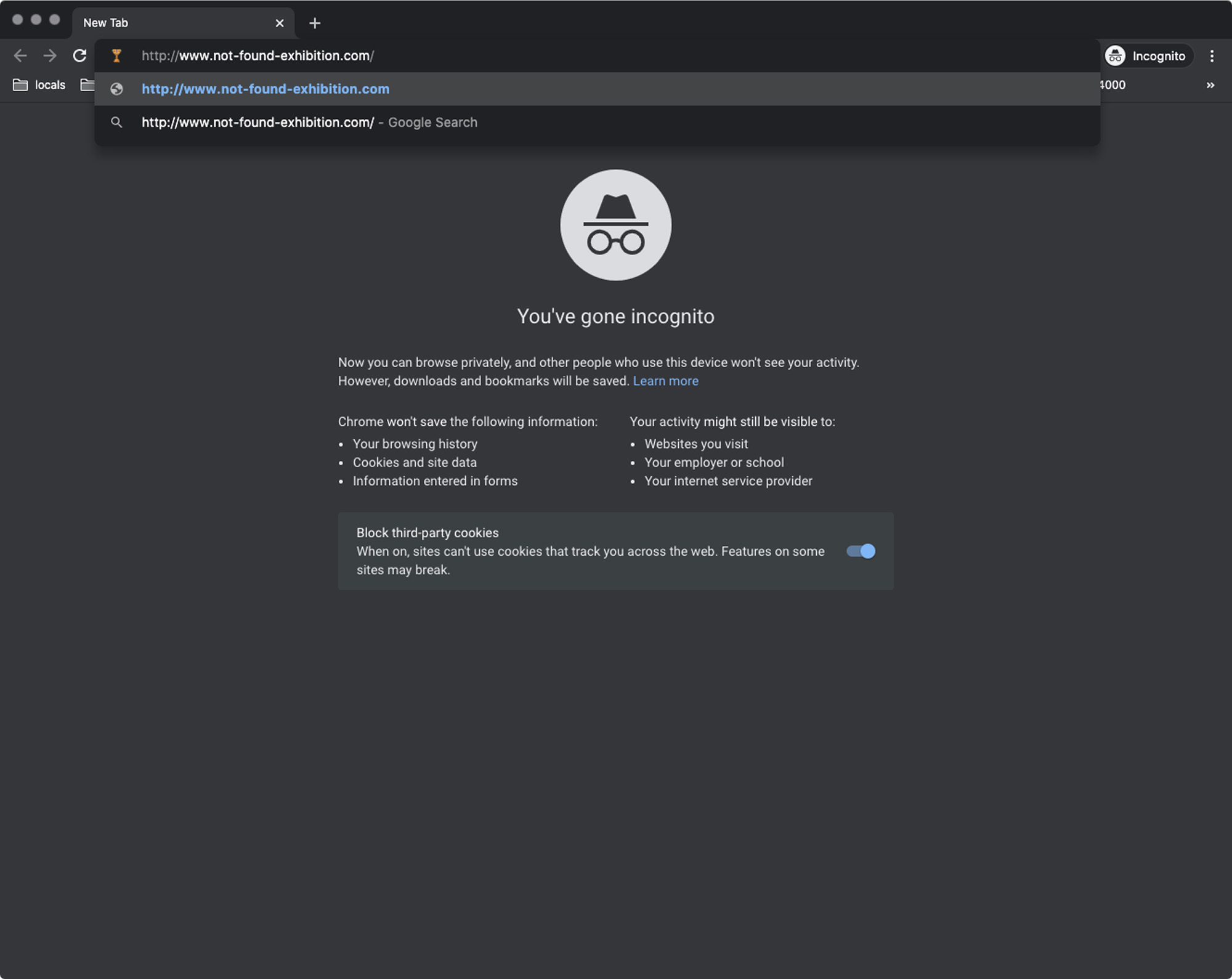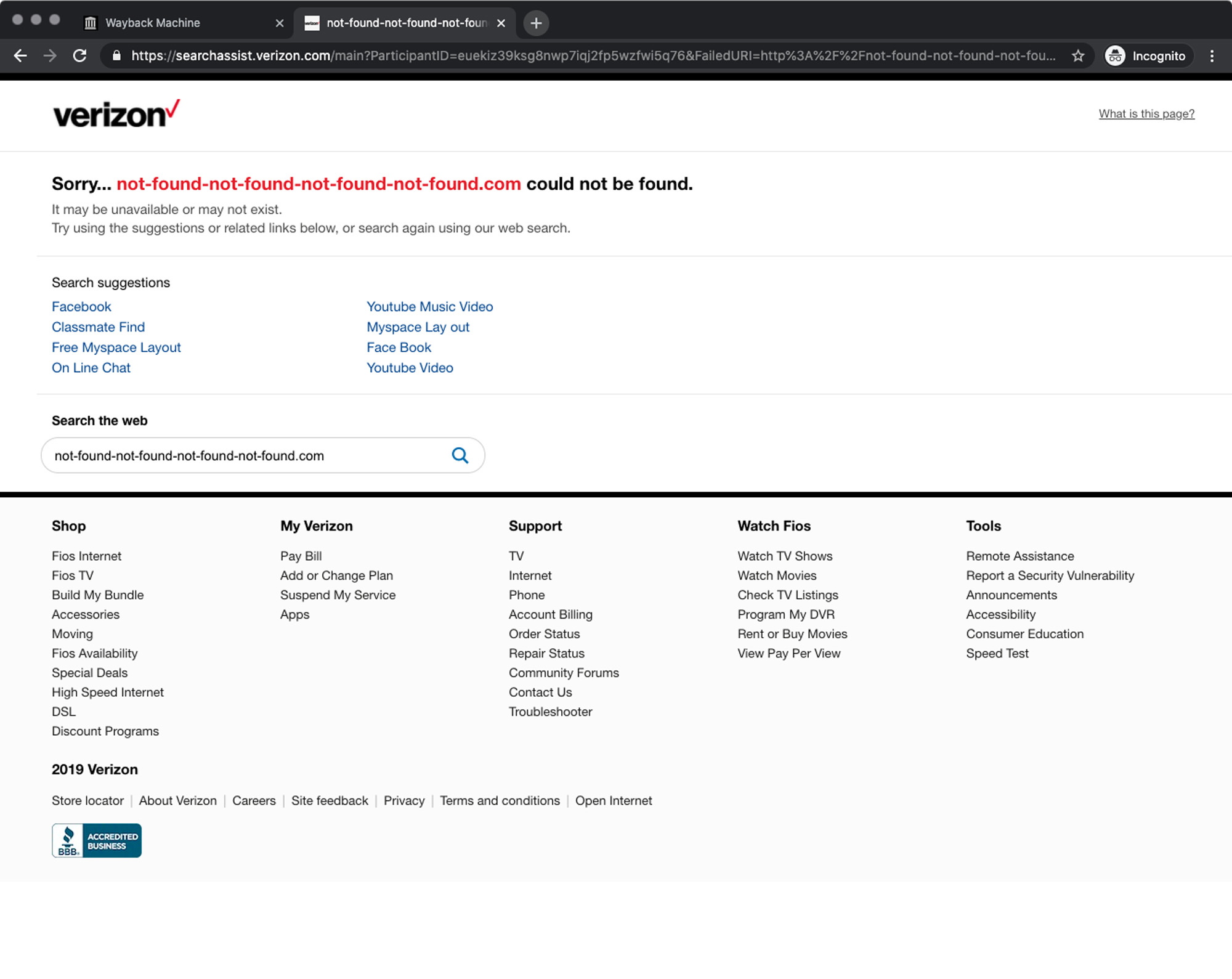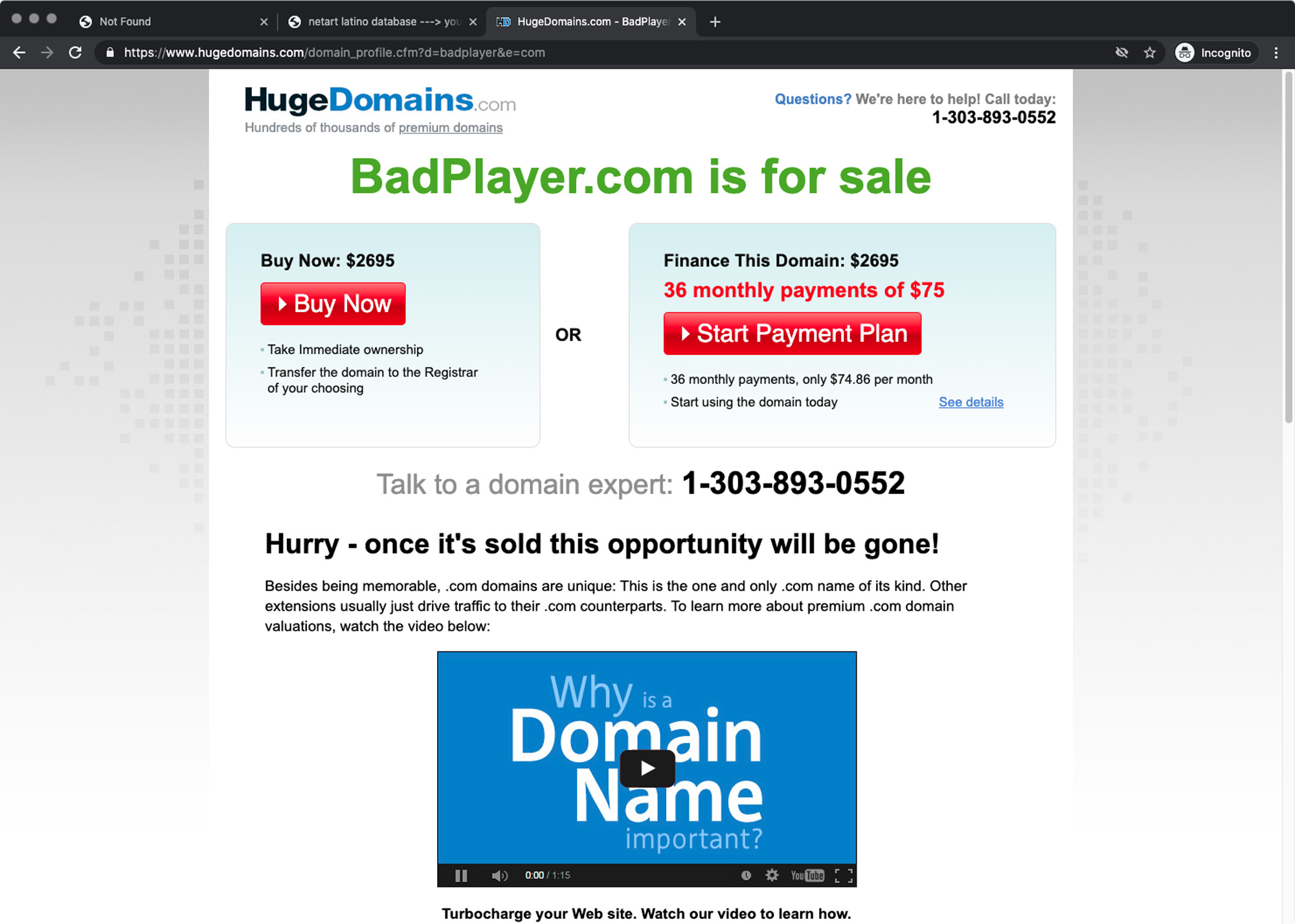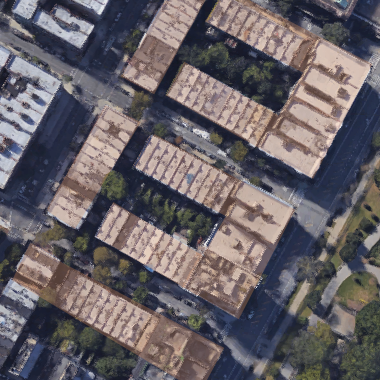Issue 8: Disembodiment
404 This Art Does Not Exist
Artist Owen Roberts collects series of screenshots from various missing art works – aka “dead art links” – in an attempt to patch together a timeline of when they were published, when they may have disappeared, and possibly even why they were left to die.
“Yet, what if a link turns into the representative of the artefact, the context and the exhibition at once?”
This was the guiding question of TAGallery (2007-2010), an online gallery centered around the themes of linking, tagging, and the different contexts of web-based art. I’ve been teaching a lecture on internet art in many of my web classes since 2013, but other than a project here or there, the bulk of the works I show come from the early period of net.art, the mid-to-late 90s, with a few artists from the 2000s.
The artists of the net.art declared the movement dead in 1997 and The New York Times reported the same in 2004. And yet, many – perhaps most – of the works of that period still exist at their original URLs, including Heath Bunting’s King’s Cross Phone In (1994), JODI’s wwwwwwwww.jodi.org (1995) and Olia Lialina’s My boyfriend came back from the war (1996).
But in the course of researching internet art after Web 2.0, I kept encountering 404 pages, spam sites and domain parking pages. Missing sites are known as link rot, the unintended consequence of new services, technologies and standards adopted by the web which together form the aesthetics of the broken internet. But an ambiguity arose from this search — even if a link can no longer take you to the art, is it really dead if it can take you to the site of its remains?
A narrative can be imposed on any sequence or series if you begin to look at that narrative from a certain perspective. Once I had collected enough of these screenshots to realize there was a trend, I began to look specifically for links that I expected might be dead. I also started noticing how many internet art works incorporated links and URLs that were intentionally dead, how much broken internet aesthetics were already being incorporated into internet art.
Although those aesthetics have been present since the beginning of internet art, I still felt that there were more dead URLs from artists working after Web 2.0, social networks and smart phones, Post-Internet works. Finding a dead link where I expect to find art is frustrating. But there’s also a perverse pleasure in seeing the errors and odd sites that take the place of neglected websites. What is the relationship between a URL of a work and the work itself? Can the URL itself be part of the work? And if so, does that make the spam at that location part of the work, too? Is the URL more like a gallery, where the artwork will be displayed for a period of time until it is purchased or added to a collection or returned to the artist?
- An audience asks a question
cont3xt.net*1
TAGallery*, 2007 – 2010
Website
tagallery.cont3xt.net
Status: ISP redirect
TAGallery’s original URL, tagallery.cont3xt.net, today resolves to an ISP redirect page, a page generated by your Internet Service Provider, typically confirming a “page not found” message and a list of search suggestions. But dead links come in many forms.
Php errors, 404 pages, database errors and others often result in plain black text on a blank white page, and spam sites and pages parked by domain hosting companies share a similar aesthetic. JavaScript security errors, along with outdated Flash and Java Applets and missing image links, resolve to sites that include text but are missing media. Suspended or deleted accounts, missing application files and other more obscure dead links round out the various states these works are in today.
The first exhibition hosted by TAGallery, called dead.art(-missing!)LINKreSourceswas inspired by dead links. I don’t know if the exhibition included actual dead links or works of visual art inspired by the aesthetics of dead links, because the archived versions don’t contain any content, possibly because del.icio.us (a service for discovering and sharing bookmarks) is no longer active. The del.icio.us homepage today has a message from the last owner of the site about the availability of users’ data, subject to changes that occurred after the site was acquired by Yahoo in 2005, and it was acquired several more times before finally going offline in 2019.
Since writing this, del.icio.us has been restored, and some of the content is viewable on archive.org.
404 errors appear when the domain exists but the specific page is not found. There is a default 404 page that appears when the website does not have its own. Some 404 pages include links to return to the home page of the site. Life Sharing was a site that made all of the files on the artist’s computer publicly available, anticipating the coming changes in how the internet would be used, as a form of “self-surveillance,” on social networking sites.
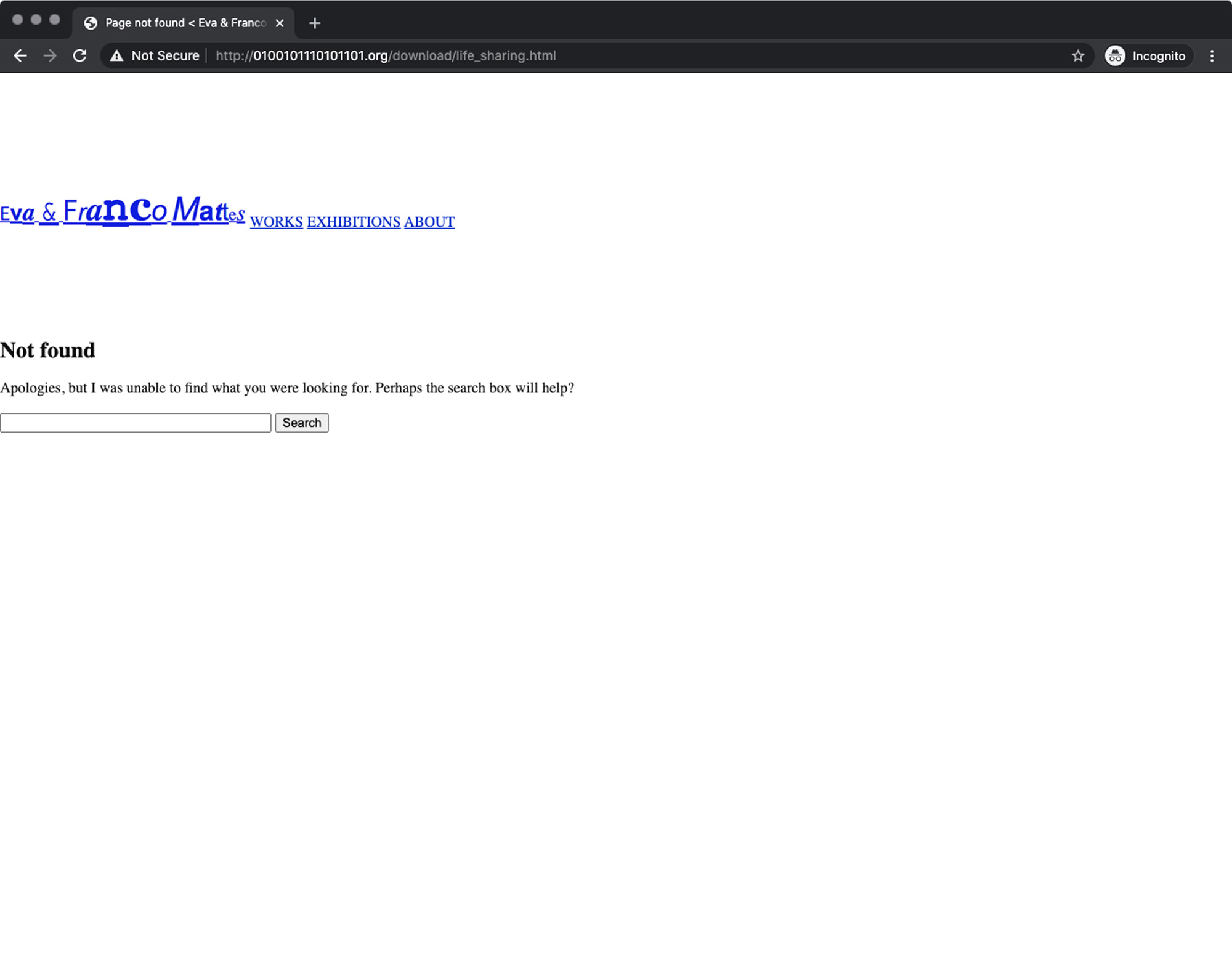
0100101110101101.org
Life Sharing, 2000 – 2003
Website
http://0100101110101101.org/download/life_sharing.html
Status: 404
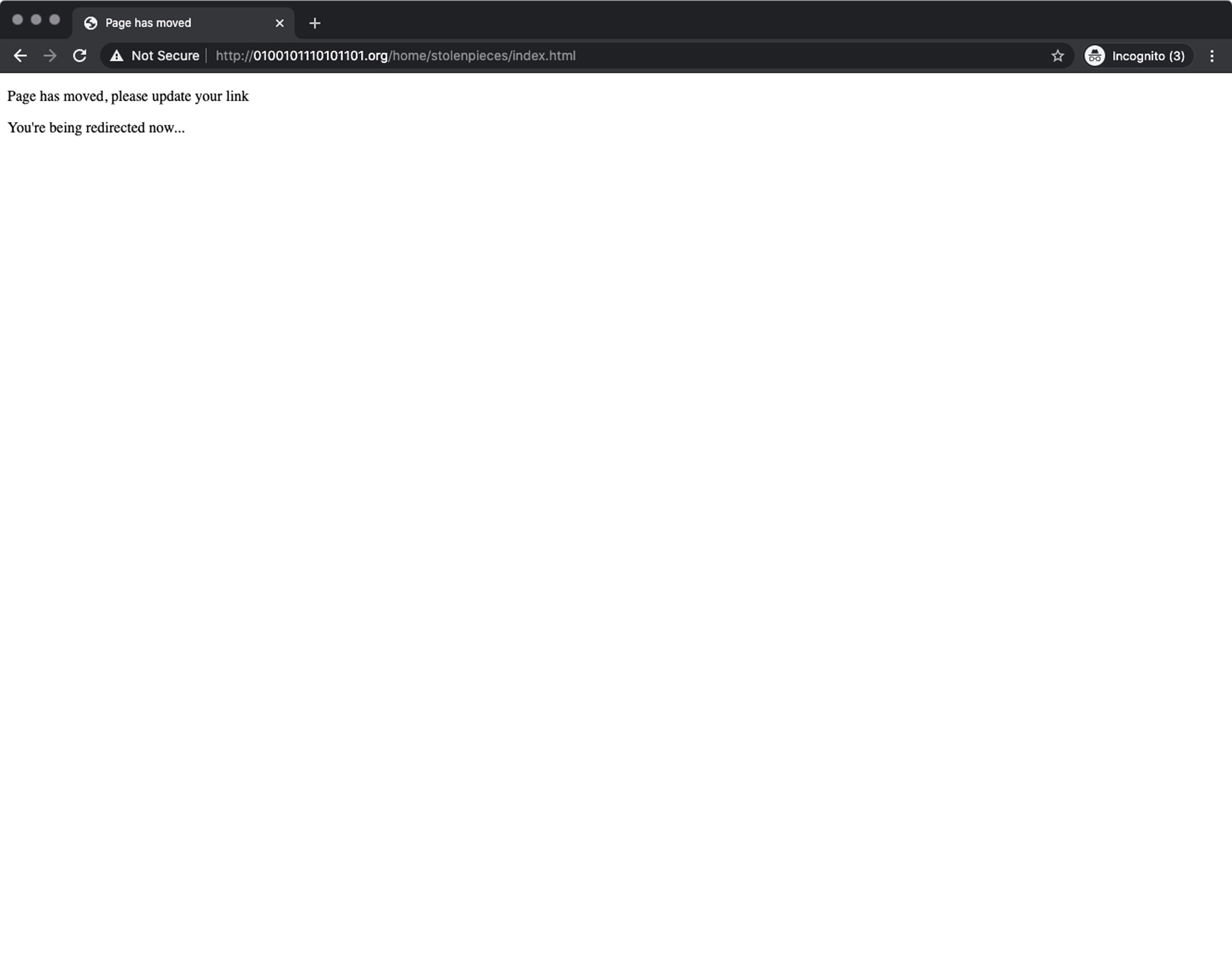
0100101110101101.org
Stolen Pieces, 1995 – 1997
Website
http://0100101110101101.org/home/stolenpieces/index.html
Status: Redirect2
Some abandoned domains have default pages created by a domain registration site advertising the availability of the domain for purchase. hell.com was a private repository of internet art works, built in part as a critique of public internet works. no-such.com replaced hell.com, but today a recently created Indonesian graphic design blog is found at the URL.
Kenneth Aronson
hell.com, 1995
Website
hell.com
Status: Domain parked
Kenneth Aronson
no-such.com, 2000
Website
no-such.com
Status: New website
When a URL is changed, it can cause links to that URL on other pages to become dead links or 404s. I discovered the URL to Dia’s Artist Web Projects collection had changed during a lecture on internet art. The new URL, https://www.diaart.org/program/artistswebprojects, was easy to find.
Dia*
Artist Web Projects*, 1995 – Present
Website
www.diaart.org/artist_web_projects
Status: 404, URL changed
In January 2021, Flash was finally retired for good, after years of embedded flash animations and games being haphazardly blocked by browsers.
Cecilia Edefalk
24-Hour Venus, 20103
Interactive video
https://awp.diaart.org/edefalk/cecilia.html
Status: Embedded media blocked
Operating system updates and new security restrictions introduced over the years have made many applications built for Apple computers inoperable. A Moment of Silence invites users to download a desktop application. According to its page on Dia’s website, “once launched, your computer will not be usable until the moment (60 seconds of black screen) has passed,” and “If A Moment of Silence does not end after 60 seconds, you can use Task Manager to end the application. Please save any open files before proceeding.”
Wilfredo Prieto
A Moment of Silence, 2007
Software application
https://awp.diaart.org/prieto/download.html
Status: Application error
Yung Jake
e.m-bed.de/d/, 2012
Website, interactive video
http://e.m-bed.de/d/
Status: 404, Embedded media blocked
Platforms like the Apple App Store can remove apps for various reasons, and often, if apps are not updated as the operating system is updated. Publishing on the App Store also requires an annual fee. Although the App Store has no category for art, artists have published apps on the store as works of art.
Ethira was a social network and iOS application where users could post anonymous messages that would be deleted soon after posting.
Amalia Ulman
Ethira, 2013 – 2014
iOS app, Social network
https://itunes.apple.com/gb/app/ethiraapp/id939379830?mt=8
Status: App Not Available
Some sites break security restrictions introduced later by browsers. This page is live, but the media or other content that make up the work itself are not loaded. In this case, it is the link from the collections page that needs to be updated. This error can be fixed by changing the beginning of the URL from http:// to https://.
Juha van Ingen
Web-Safe, 1999 – 2000
Website
http://onlineart.kiasma.fi/en/juha-van-ingen/web-safe/
Status: Security error
Some browsers will warn you of an unsecured URL but will let you visit the site anyway. In the case of Download Finished, the URL actually needs to begin with http://. Using the more secure https:// will prevent all of the external media and scripts from loading.
!Mediengruppe Bitnik*
Download Finished, 2006
Website, video archive
https://www.download-finished.com/
Status: Security warning
Image tags that have dead source links appear as the familiar broken image icon, which is different on each browser and have been updated periodically over time.
Updated browser security disables works even by the original net.art artists. Agatha Appears was restored in 2008 and is hosted on the websites of several artists.
Olia Lialina
Agatha Appears, 1997
Website
https://www.tommoody.us/agatha/already_tired.html
Status: Broken image tag, Security error
In many cases, internet artists have intentionally created dead links, incorporating the aesthetic of broken websites into their work. The home page of SCREENFULL, for instance, appears as a giant broken image tag until you realize that the alt text for the image is “no image available,” and is clickable after all.
The content of SCREENFULL often engages with media that is broken or used in unintended ways, like a post of a screenshot of a Microsoft Internet Explorer browser failing to load the screenfull.net/stadium/homepage, with an error message (in Spanish) asking the user to download a Quicktime Installer; a poster of the film War of the Worlds that has the selection outline from the Photoshop Magic Wand Tool visible, and the corner of a browser window with a Norton AntiVirus alert.
Abe Linkol and Jimpunk
SCREENFULL, 2004 – 2005
Website, blog
http://screenfull.net/
Status: Broken image tag
In the 2000s, new social media platforms like MySpace, Facebook and Twitter became portals to the internet, making it possible for users to create and share content without registering a domain name or building a website. Artworks created on these platforms were subject to these services, and in some cases, the services banned or removed those works. To this day, because Twitter accounts and bots created by artists share properties of more malevolent forms of bots and other bad actors, they are sometimes banned, deleted or suspended. Some accounts are made private or abandoned by their creators. These platforms change the fundamental relationship between web developer or user and the URL. While allowing artists and users to post to the web without writing code or registering a web domain, social media platforms silo content under one domain and (in most cases) generate URLs for new content; developers and artists are no longer responsible for creating or maintaining the URL.
There is a copy of this site on archive.org, but the tweets don’t load. A script is missing from the archive.org copy, getFriendsTweets.asp, which I assume loaded the tweets, maybe from a list of accounts.
Brian Piana
Ellsworth Kelly Hacked My Twitter, 2009
Website, Twitter
http://www.afeverishdream.com/twitter/
Status: Redirect
Spam sites that take over URLs often have links to content that sound vaguely related to the site they replace, a practice part of a group of tactics known as spamdexing. It can be difficult to distinguish between spam and legitimate sites consisting of content, advertising or commercial services.
I discovered Piana’s works via his artist page on rhizome.org where he posted documentation of some of his web-based work. A screenshot on the page documenting Journal of the Collective Me includes a screenshot of a tweet that reads: “Why are all the social networks dead today? Is everyone having a life except me? D:”
- Left Handed, HD video, 2014. Image courtesy of the artist.
- RBSC.01, Kinetic Sculpture custom electronics, 2011. Image courtesy of the artist.
- The Aerobanquets RMX (2018), installation view at Chronus Art Center, Shanghai. Image courtesy of the artist.
- The Aerobanquets RMX (2018), installation view at Chronus Art Center, Shanghai. Image courtesy of the artist.
- Unstable Empathy (2012). Installation view, Kuandu Museum of Fine Arts, Taipei. Image courtesy of the artist.
Brian Piana
Journal of the Collective Me, 2009
Website, Twitter
thecollectiveme.com
Status: Spam
- The Open (2011-present), detail. Young at Art Museum, Fort Lauderdale. Image courtesy of Shani Pak.
- Knowledge of the Body (2018). Detail, SVA Curatorial Practices, New York. Image courtesy of the artist.
Brian Piana
Tweeting Colors, 2009
Website, Twitter
http://www.tweetingcolors.com/
Status: Spam, Broken image tag
Twitter suspends accounts which violate the Twitter rules. I don’t know why @pixelsorter was suspended. Maybe because it got stuck in a loop of messaging auto-generated images back and forth with another bot, @a_quilt_bot.
Way Spurr-Chen
@pixelsorter, 2014 – ?
Twitter
https://twitter.com/pixelsorter
Status: Account suspended
@fuckeveryword was suspended because it tweeted hate speech and racials slurs, as it made its way through a list of every word in the English language, tweeting each one prepended with the word “fuck.”
George Miller
@fuckeveryword, ? – 2017
Twitter
https://twitter.com/fuckeveryword
Account suspended
Abandoned social media accounts, like domains, can be taken over by new users.
The twitter account for Brooklyn Museum’s Twitter-based curation project, featuring tweets by new contemporary artists each month, was taken over by a user called “angel of death” in 2012. The web services they used to create shorter links to artists’ tweets, tr.im and tweetree.com, were both taken over by spam sites.
- Left Handed (2016). Installation view, The Projects, Fort Lauderdale. Image courtesy of the artist.
Various*
1stfans*, 2008 – 2010
Website, Twitter
https://www.brooklynmuseum.org/support/1stfans_twitter_art_feed/
Status: New account owner
Users on Twitter and other social networking platforms can make their accounts inaccessible to other users. Gone With the Wind tweets originally came from Place’s personal account, @vanessaplace, which is currently protected. The profile image is a white circle. Place appears to have a second account, @VanessaPlace2, where she continues to make posts that combine her interests in art, comedy and poetry.
Vanessa Place
Gone With the Wind, 2011 – 2015
Twitter
https://twitter.com/vanessaplace
Status: Account private
Gone With the Wind became controversial, though not for the intended reason of challenging copyright law. (Place is also a lawyer, and her works often blur the line between her law and poetry practices. In this case she hoped to attract the attention of the copyright owners, but because of the racist stereotypes employed by the novel and therefore by the Twitter account (in particular, Place’s choice to make the account’s profile image that of a character from the novel based on a racist stereotype).
Place has a portfolio site with links to a series of books in the Factory Work project umbrella on the self-publishing and print-on-demand service Lulu. Those links all lead to 404 pages on lulu.com. One of the titles of those books, confusingly, is Page Not Found, which is exactly what it says when you get to the site. At first, I thought this was intentional, before I found the actual works by searching.
Vanessa Place
Page Not Found, 2010
Poetry
https://www.lulu.com/product/paperback/page-not-found/15550775
Status: 404
Pages on social networks can be made inaccessible to non-users, or restricted based on sensitive content restrictions or user privacy settings. These links live in a sort of purgatory. They could still be alive, but I won’t know unless I sign up for an account on the social networks that host them.
I’ve never seen the Facebook based art gallery #0000FF, “a Virtual Online Shrine dedicated to the ‘Blue Aesthetic’”. I can’t access the Facebook page and links from their Twitter account are unavailable. Some documentation of their exhibitions can be viewed at netartnet.net.
Georges Jacotey
#0000FF*, 2012 – 2013
Facebook
https://www.facebook.com/h0000ff
Status: Authentication wall
Peekasso
Animated GIFs, ? – ?
Tumblr
peekasso.tumblr.com
Status: Sensitive content wall
Second Life is a social network that is rendered with 3D graphics and avatars. RMB City was a city built inside of Second Life that could be visited by viewers. The link to the page for RMB City on Serpentine Gallery’s website turns into a choose your own adventure of spam sites, some asking you to download chrome extensions to download a PDF. I tried disabling JavaScript on the site to try to download the PDF, only to find the links don’t do anything.
There is a php error that prevents the WordPress based site from loading, which appears to be a common error caused by various plugins that rely on an outdated version of php. The documentation of RMB City on anthology.rhizome.org includes a version of the project hosted in a remote browser, where the same php error prevents the site from loading.
Cao Fei
RMB City, 2008 – 2011
Website, Second Life
rmbcity.com
Status: php error, Spam
Christi Nielsen
Metaverse Gallery*, 2006 – 2008
Website, Second Life
https://www.utdallas.edu/worlds/metaverse-gallery.html
Status: 404
Art on social media shares qualities with performance art, and is often framed as performance, happening at a specific time and location, perhaps at a URL or on a live stream or some other synchronous event. Like internet art, performance art has raised questions about how and whether it can be collected by institutions or collectors. Internet art works created with their own URL are often preserved by services like archive.org, which serves as a digital library for the internet, without input from the artist, a curator or critics. By selling the URL of a work to a collector, Rafaël Rozendaal, demonstrated one way internet art can be collected. For works that exist on social networks or incorporate content and media hosted on social networks, these methods are limited by the maintenance of those networks.
Part of a series of performances in which the artist live tweeted the experience of spending 24 hours in a space (a Best Buy in Manhattan), for the 2010 Whitney Biennial. The original tweets and documentation of the project are missing. Tweets posted by other users referring to the performance around the time of the event can still be found at the hashtag #24hopen.
Man Barlett
24hrOpen, 2010
Performance, Twitter
http://www.manbartlett.com/24hOpen/
Status: 404
The performance work Mr. Dropout used Twitter to announce the time and location of the performances. Like much of Hill’s internet-based artworks, and their documentation, the Twitter account for Mr. Dropout no longer exists. Links to specific tweets from the account in numerous articles on Hill’s work are dead. Hill’s personal Twitter, @natexhill, exists, but all tweets appear to have been deleted.
Nate Hill
Mr. Dropout, 2010
Performance, Twitter
https://twitter.com/dropoutwalks
Account deleted
Nate Hill
Artist website, 2009 – 2016
Website
natehillisnuts.com, sociopath.online
Spam
The spam site that took over natehillisnuts.com, built as a landing page for a film production company or something, looks like a site that one of my students would have made as a portfolio piece with made up content. The URL hosted his site until January 10, 2016, when it was then set up to redirect to a new URL, sociopath.online, which contained most of the same artworks with a new design and existed until 2019. Today, sociopath.online is a now familiar domain parking page.
Hill used the Blogger blog “Club Animals” as a companion for many of his performances, including maybe his most famous work, Death Bear, a performance involving a man dressed as a bear removing objects that represent emotional pain from the homes of strangers.
Further projects I found on the archive.org copies of his websites and old reviews included more performances exploring themes like racism and sexism, but almost all of the original media is missing. The last post on his Tumblr, youngmanhattanite.tumblr.com, which is still live, from March 2016, is titled “Maybe take a day off from talking about yourself on the Internet?”
Nate Hill
Club Animals, 2009
Website, blog, performance
http://clubanimalsnyc.blogspot.com/
Account deleted
There has always been an ambiguous grey area separating works of internet art and collections, anthologies or repositories of internet art. Internet artists often act as the conservators of their own work and the work of other internet artists.
Copies was a series of copies of net.art works hosted on 0100101110101101.org. One of the sites was hell.com. Documentation of this project can be found on the artist’s site, http://0100101110101101.org/copies/.
0100101110101101.org
Copies, 1999
Website
0100101110101101.org/hell.com
Status: 404
The netart latino database is still live, but it is increasingly becoming a collection of dead links to other works. It is also anthologized on the Rhizome Net Art Anthology, which states “over time, the page has become a monument to the vulnerability of the field it documents.”
Brian Mackern
netart latino database*, 1999 – 2004
Website
http://meiac.es/latino/index.html
Status: Live
Anthologies, like the Net Art Anthology started by Rhizome in 2016, have also attempted to archive and curate internet art. The Anthology is a continuation of the archiving mission Rhizome started with in 1996 when it grew out of an email list started by the Artist Mark Tribe.
For example, Life Sharing is available on Rhizome today, and the link from the current homepage of 0100101110101101.org goes to that archive of the project.
In the Net Art Anthology, the missing links of works are often acknowledged, and the difficulty of preserving internet art is discussed both, as an essential quality of internet art, and as an obstacle in the way of the goals of curators and preservationists. Rhizome’s Anthology, and tools like oldweb.today, do make incredible efforts to preserve works of internet art in their original forms by emulating deprecated versions of browsers. Ironically, these tools that are used to conserve and document works often are created with the premise of being ephemeral and in opposition to art markets, art institutions and other forms of canonization, preservation and commercialization of art.
Nasty Nets functioned somewhere between an internet art repository and internet artwork itself. Nasty Nets was inspired by a del.icio.us site, del.icio.us/53os, which was also hosted www.gooooooooooooooooooooooooooooooooooooooooooooooooooooogle.com, that collected both works of internet art and general internet. Nasty Nets is archived by Rhizome, with the caveat “Some posts and media are incomplete.”
John Michael Boling, Joel Holmberg, Guthrie Lonergan, Marisa Olson
Nasty Nets, 2006 – 2012
Website, social network
nastynets.com
Status: Domain parked, 404
John Michael Boling also used the Rhizome community page to post works of his own and other internet artists. The video component of Total Distortion is no longer linked from the artist’s website but can be found linked in this interview. The intro of an interview with Boling from 2014 states, “Boling has distanced himself from the internet.”
Travis Hallenbeck
Total Distortion, 2010
Website, video
http://www.possiblebitmaps.com/totaldistortion.html{1}
Status: 404, Embedded media blocked
The term Post-Internet was first coined by a group of artists, including Gene McHugh, who maintained the blog Post Internet on a WordPress site from 2009 to 2010. The genre encompasses a very broad group of artworks that were created after the internet became a commonplace experience and began to mediate more and more of our daily lives and communications. This includes platforms like MySpace, Facebook and Twitter.
Unsurprisingly, Post-Internet art often results in link rot. These works seem to be more difficult to document and archive because they rely on the functionality of newer technologies and platforms, in comparison to early internet art which relied more on static HTML pages.
In “The Image Object Post-Internet“, the artist Artie Vierkant writes, “Post-Internet objects and images are developed with concern to their particular materiality as well as their vast variety of methods of presentation and dissemination.” Embedded in this definition is the idea that Post-Internet art does not exist in one place or one mode. Post-Internet provides a framework for understanding how art exists today both in its original and/or physical form as well as in digital form, infinitely reproduced on new networked platforms, transformed by context and fidelity. Part of that experience, in many cases included in the original intent of the artist, is the disappearance or replacement of the work with something generated by the network, infrastructure and protocols of the internet — spam, errors and new users, even more so as the internet has moved past the URL in favor of platforms.
As Vierkant writes, “While art may no longer have to contend with an idea of ‘mass media’ as a fixed, monolithic system, instead it must now deal with both itself and culture at large as a constellation of diverging communities, each fixated on propagating and preserving itself.” Viewing internet art is navigating that constellation, searching through a series of copies, references and dead links, often unsure where you started and how you got to where you end up, and whether it is the work that was originally created.
Gene McHugh
Post-Internet, 2009 – 20104
Website, WordPress blog
http://122909a.com
Status: Spam
Artie Vierkant
Browwwsing, 2011 – Present
Website, Tumblr
https://browwwsing.tumblr.com/
http://artievierkant.com/browwwsing.php
Status: New account owner, Embedded media blocked
A link from “Finally, a Semi-Definitive Definition of Post-Internet Art” on the blog ArtFCity is to this dead link on a server that is now parked by an Icelandic web hosting company. The catalog can be found on the website of one of the curators, Karen Archey.
Karen Archey and Robin Peckham
Art Post-Internet*, 2014
Website, catalog
https://norma.shared.1984.is/
Status: Parked domain
A collection of missing internet art works, curated by Mario Santamaría and Cesar Escudero Andaluz for the 2015 The Wrong Biennale, a web based art festival. The original site, captured on archive.org, also had intentionally miswritten links, like the home link to itself.
Mario Santamaría and Cesar Escudero Andaluz
Not Found Exhibition*, 2015
Website
not-found-exhibition.com
Status: Redirect
The original Not Found site can be found on archive.org, where more dead links can be found. There are layers of dead links here, such as for the work BadPlayer (2002) by the artist Roberto Aguirrezabala. The badplayer.com link on the archive.org version of not-found-exhibition.com redirects to an archive.org copy of x-arn.org/256, which is also a 404 Not Found, on all of the archive.org captures I searched.
Roberto Aguirrezabala
Bad Player, 2002
Website
badplayer.com
Status: Domain parked
The URL x-arn.com/256 was familiar because it was also a dead link on the netart latino database page. Further down the not-found-exhibition.com page, x-arn.com/256 itself appears, at which point I realized the badplayer.com links was actually just incorrectly written in the markup, with the display text “http://www.badplayer.com/,” while the hypertext reference is http://www.x-arn.org/256/. I have no idea if this was intentional.
I did eventually find the about Table256 project that was originally hosted at x-arn.org/256, on the website of the artist.
Yann Le Guennec
Table 256, 2000 – 20035
Website, database
x-arn.org/256
Status: 404
Clicking through the Not Found Exhibition felt almost like cheating, once I had gotten in the habit of collecting dead art links. My search for certain works had begun in earnest — after reading about a work of art, I wanted to see it. That search was flipped upside-down. I was happy to see errors and spam. This expands the idea that whatever the product of using the internet as material is the art. All of this missing work is a condition of the post Web 2.0 world, where the URL has been de-emphasized in favor of platforms, but that condition has always been part of internet art.
Footnotes
- * indicate collections in the case of art works, collectives in the case of artists.
- Redirect pages are set up to automatically redirect to a new URL where the page has moved.
- This project was recently restored using HTML5 media.
- Post-Internet on Rhizome.
- A database of links where artists could add links to their own sites.
Owen Roberts is an artist based in Brooklyn, New York. He works with animation, code and text. He is an Assistant Professor at the Borough of Manhattan Community College.
